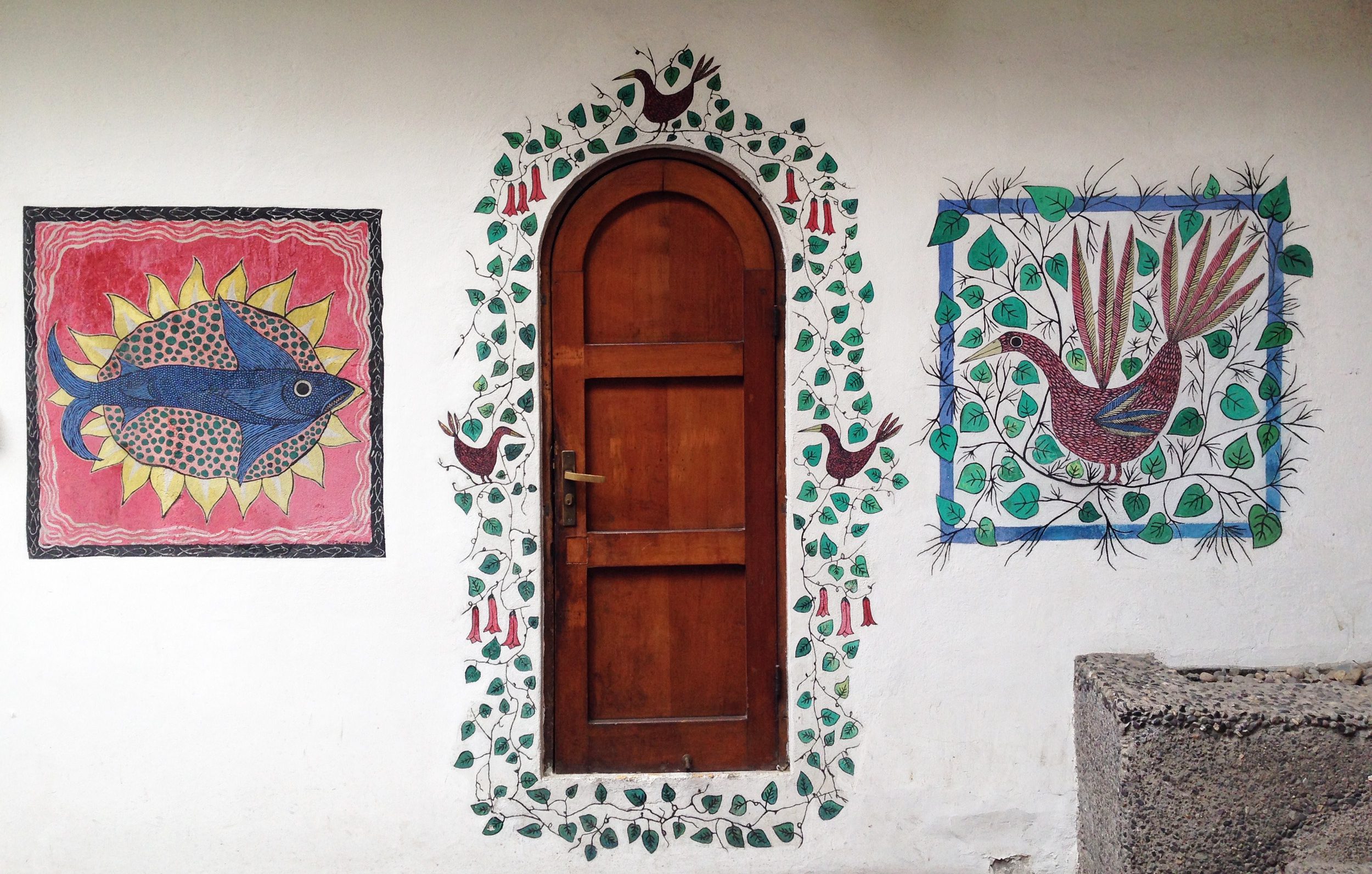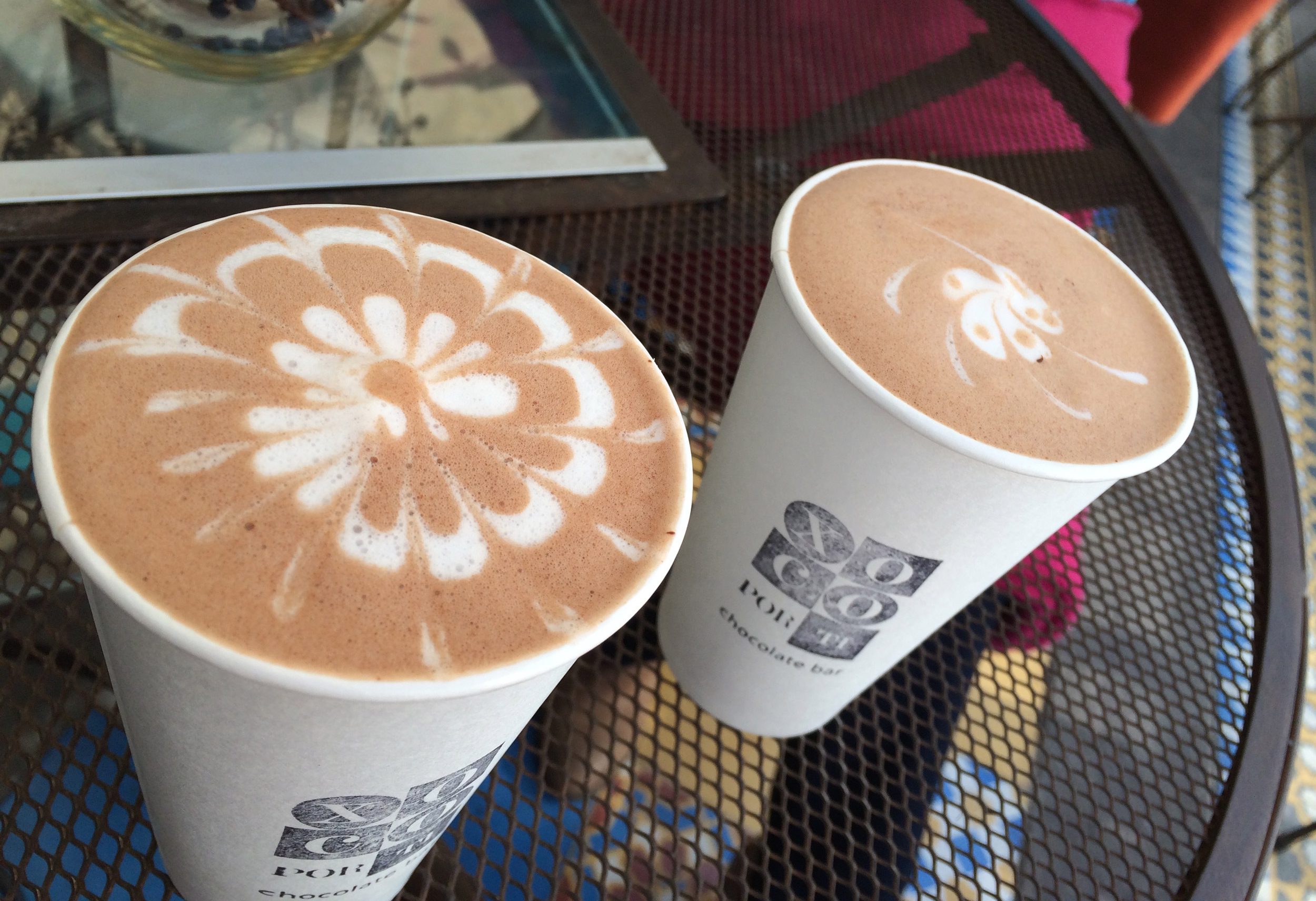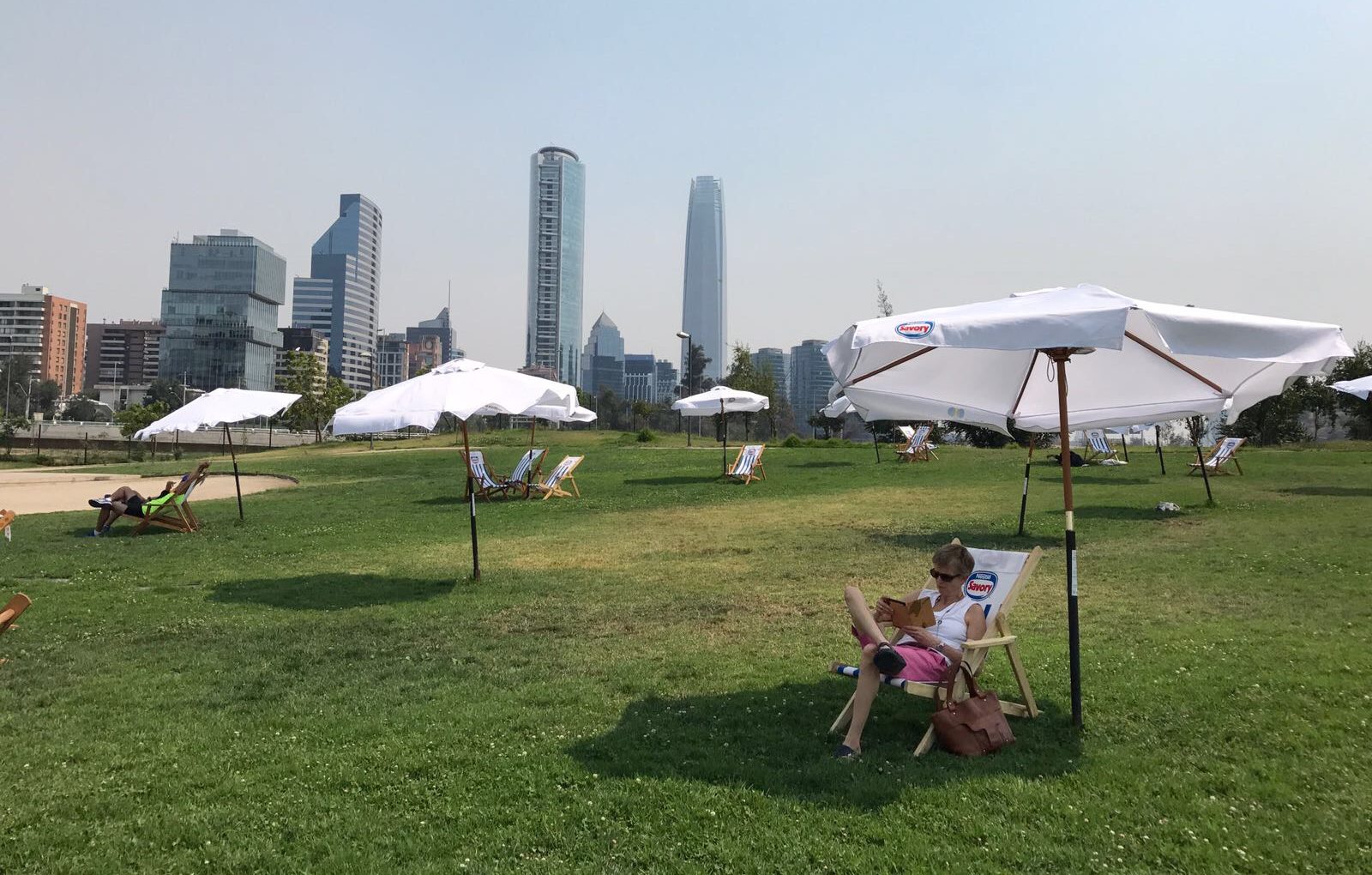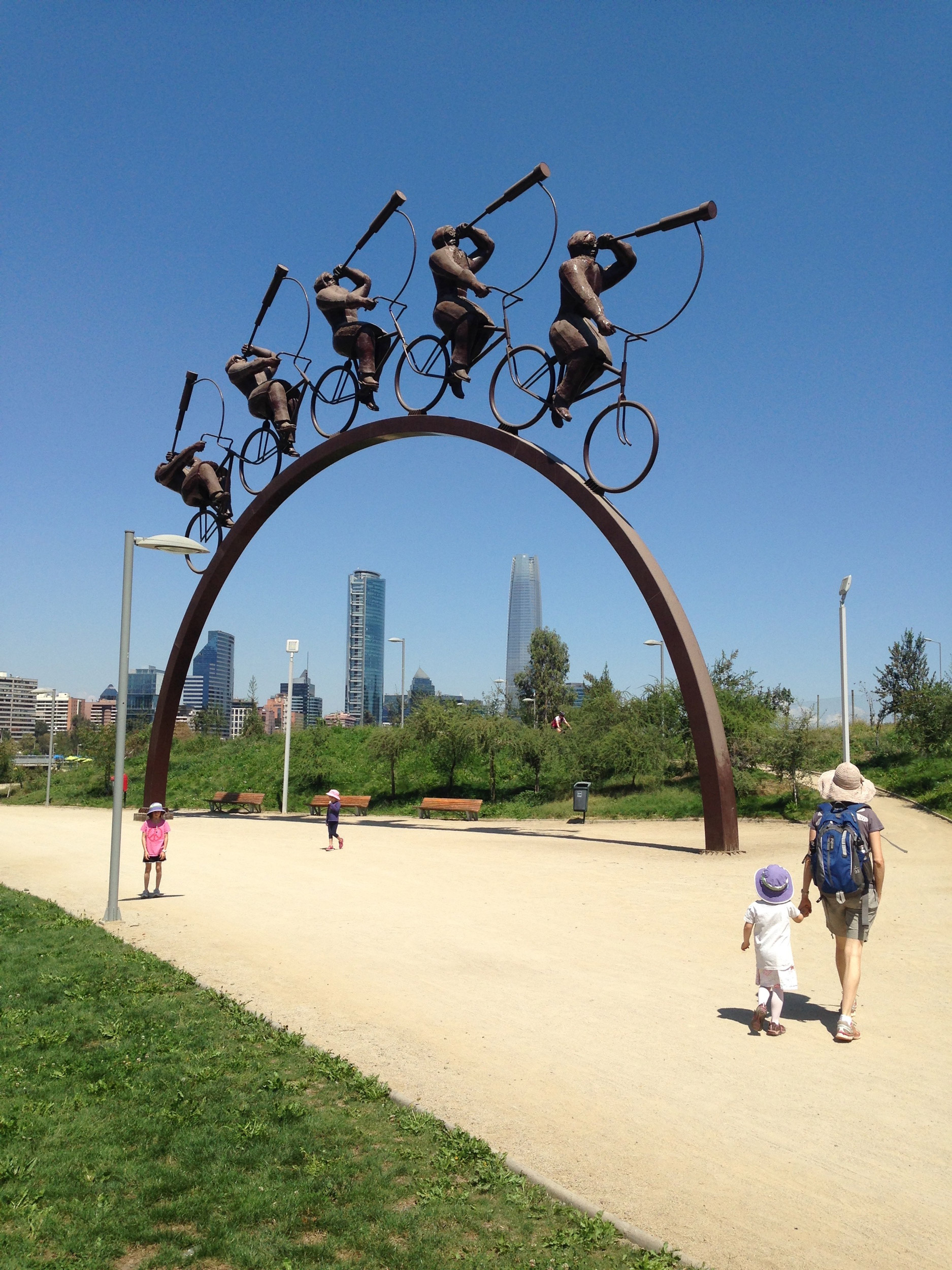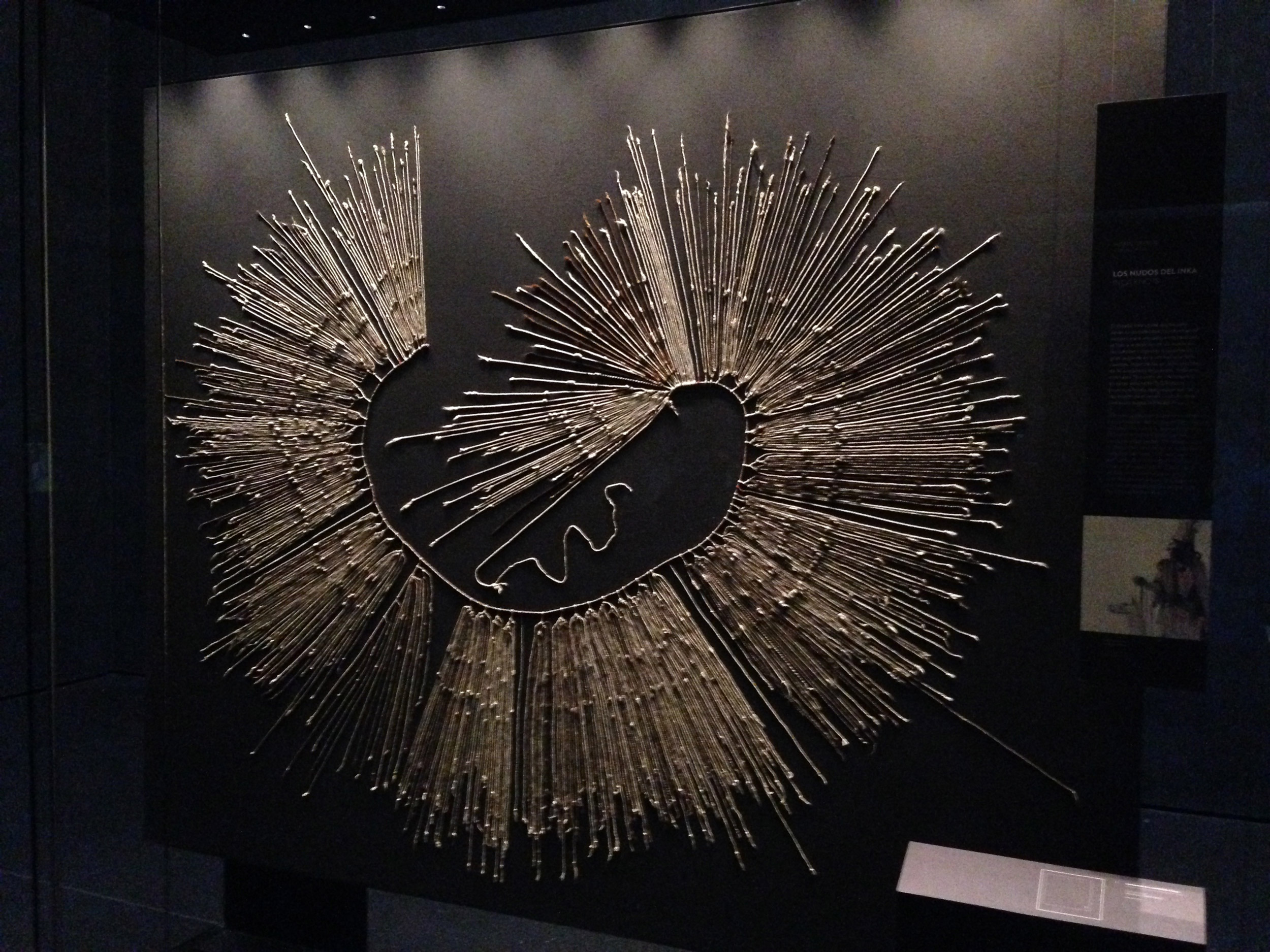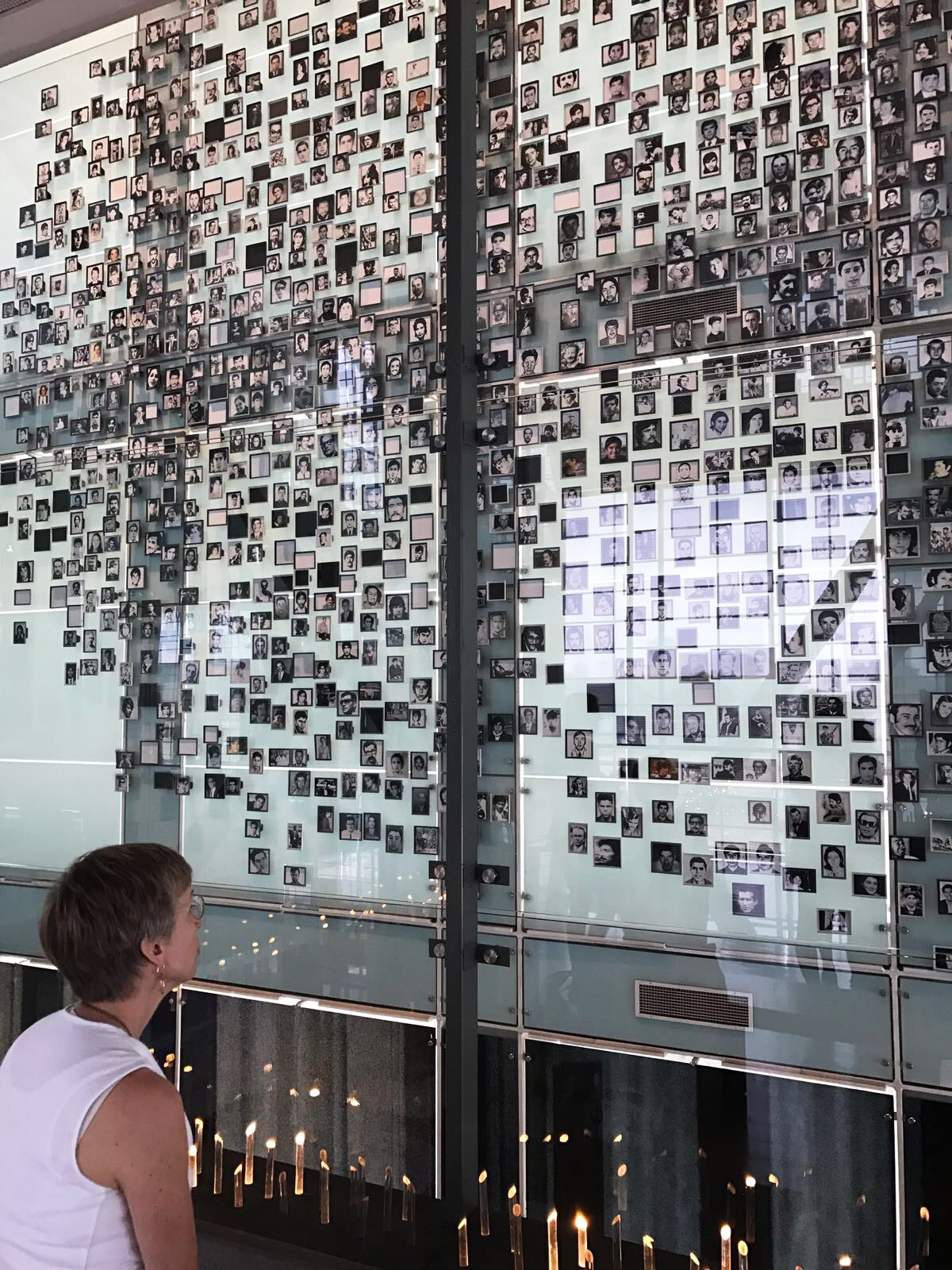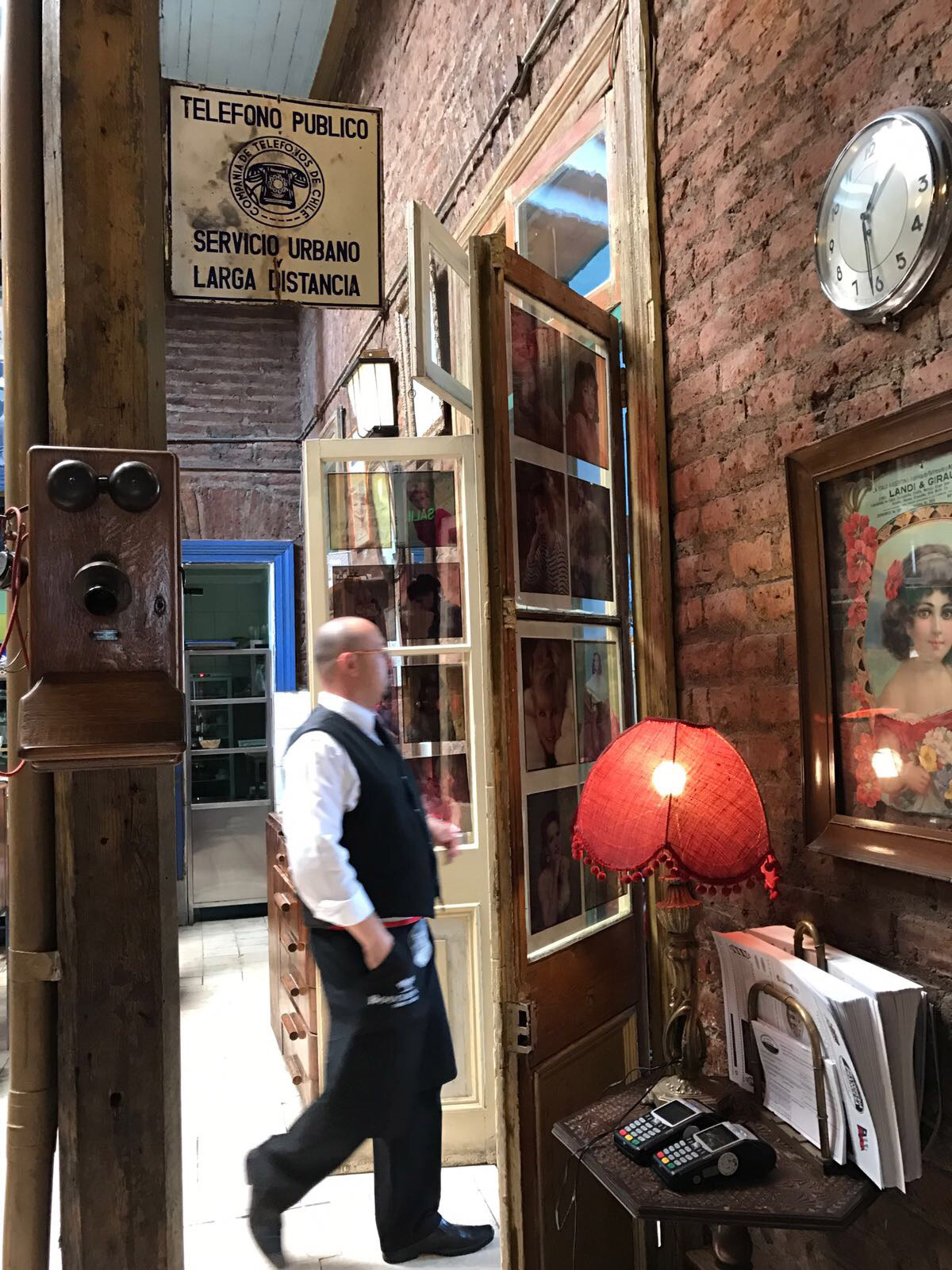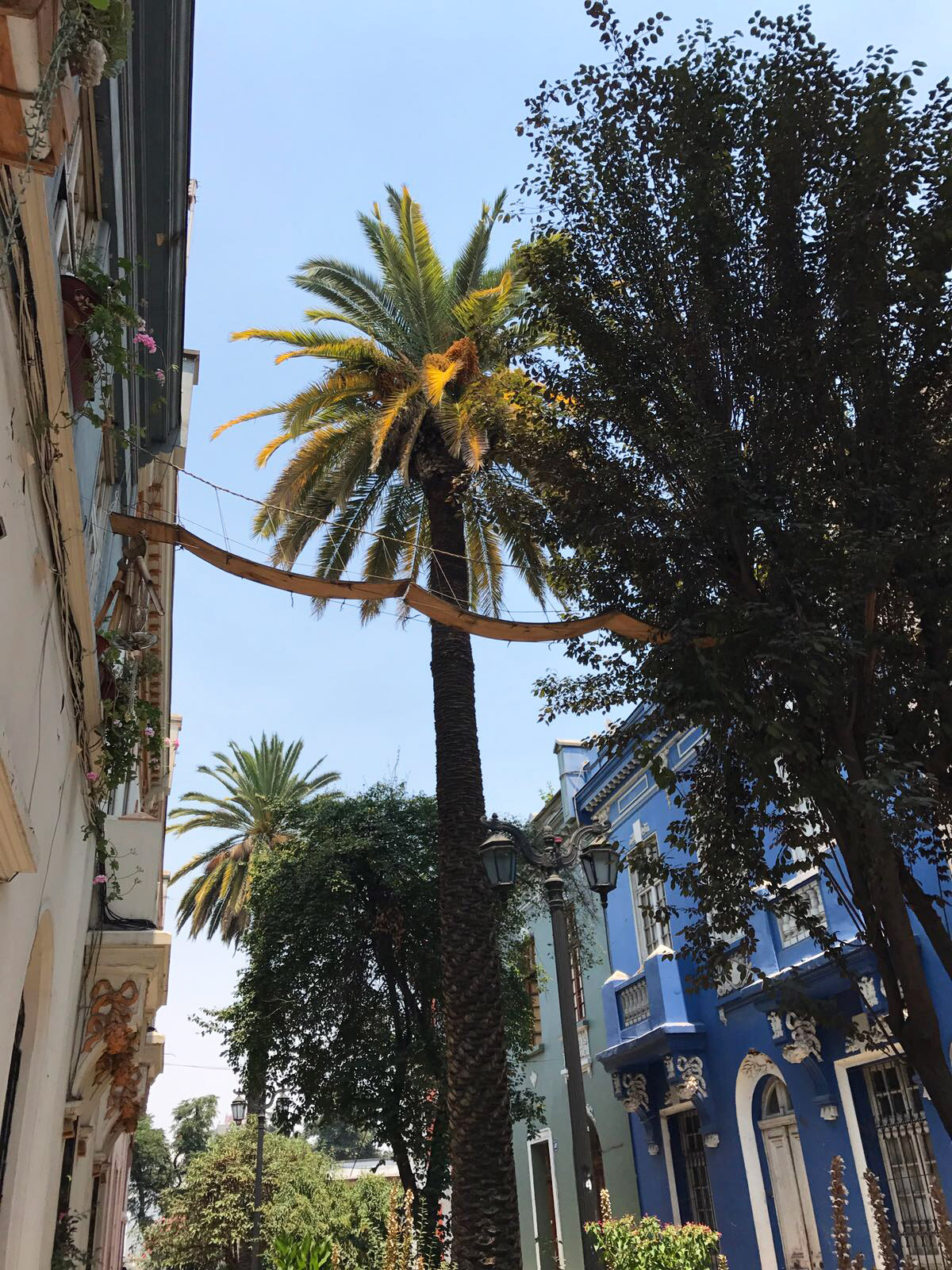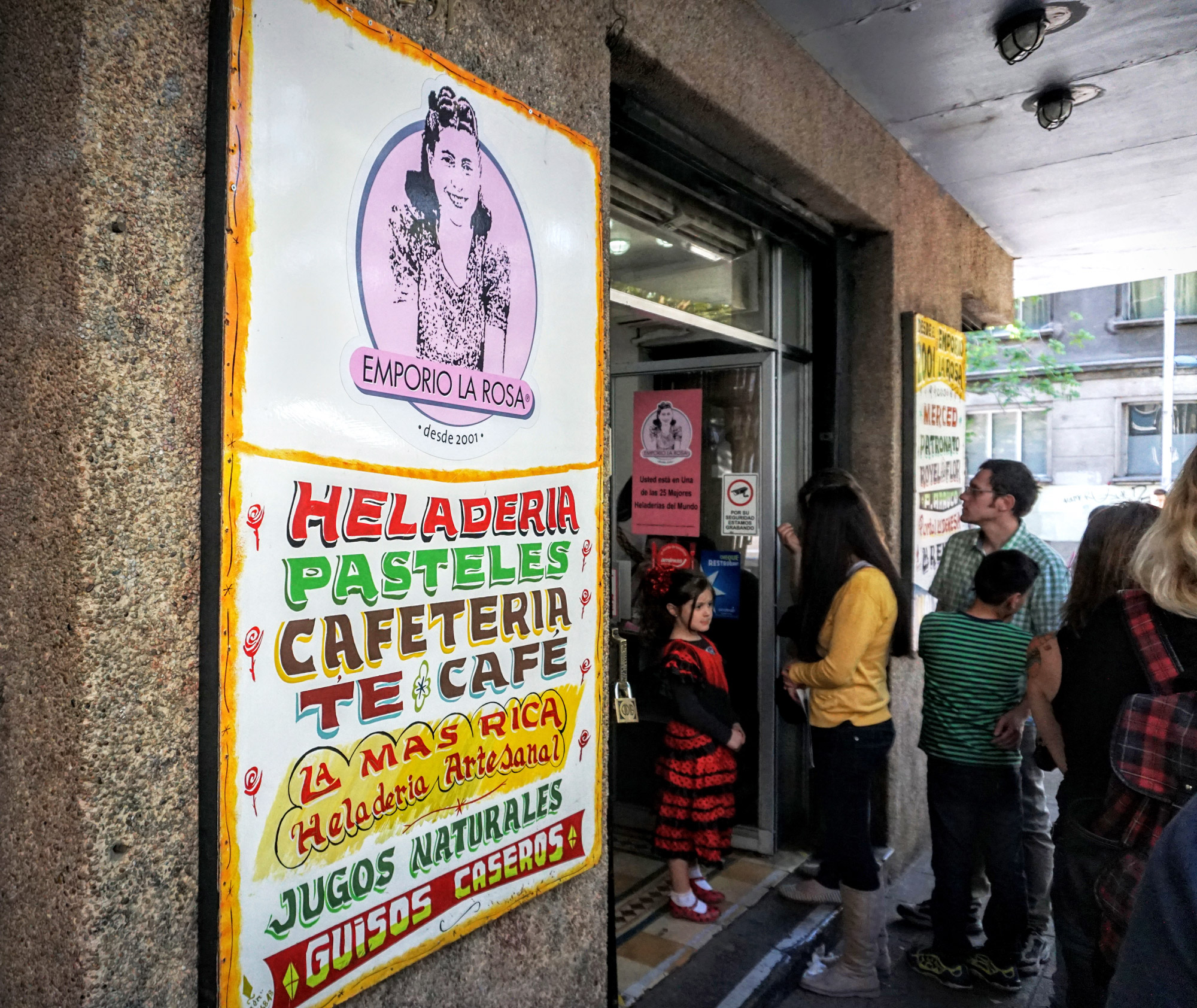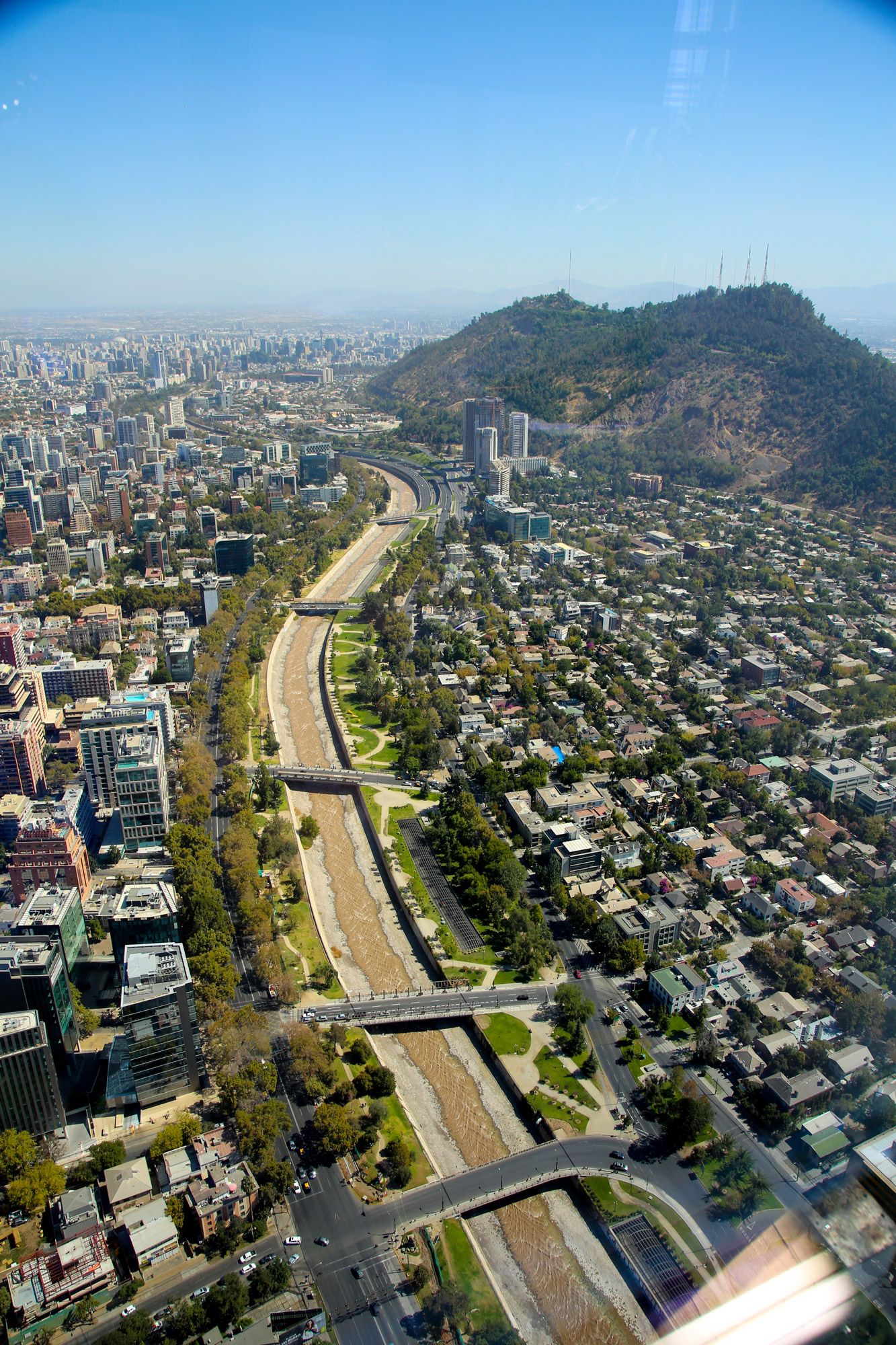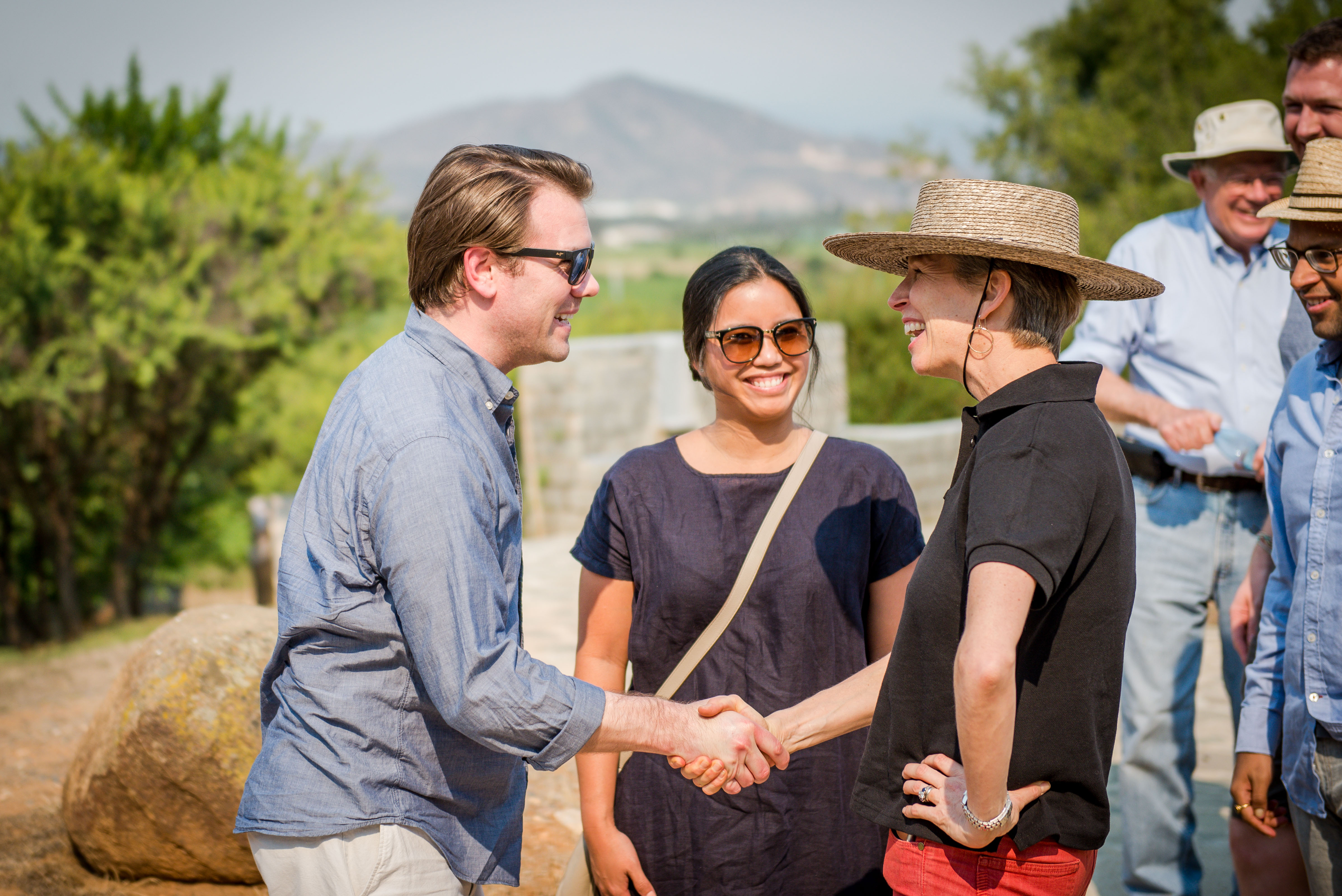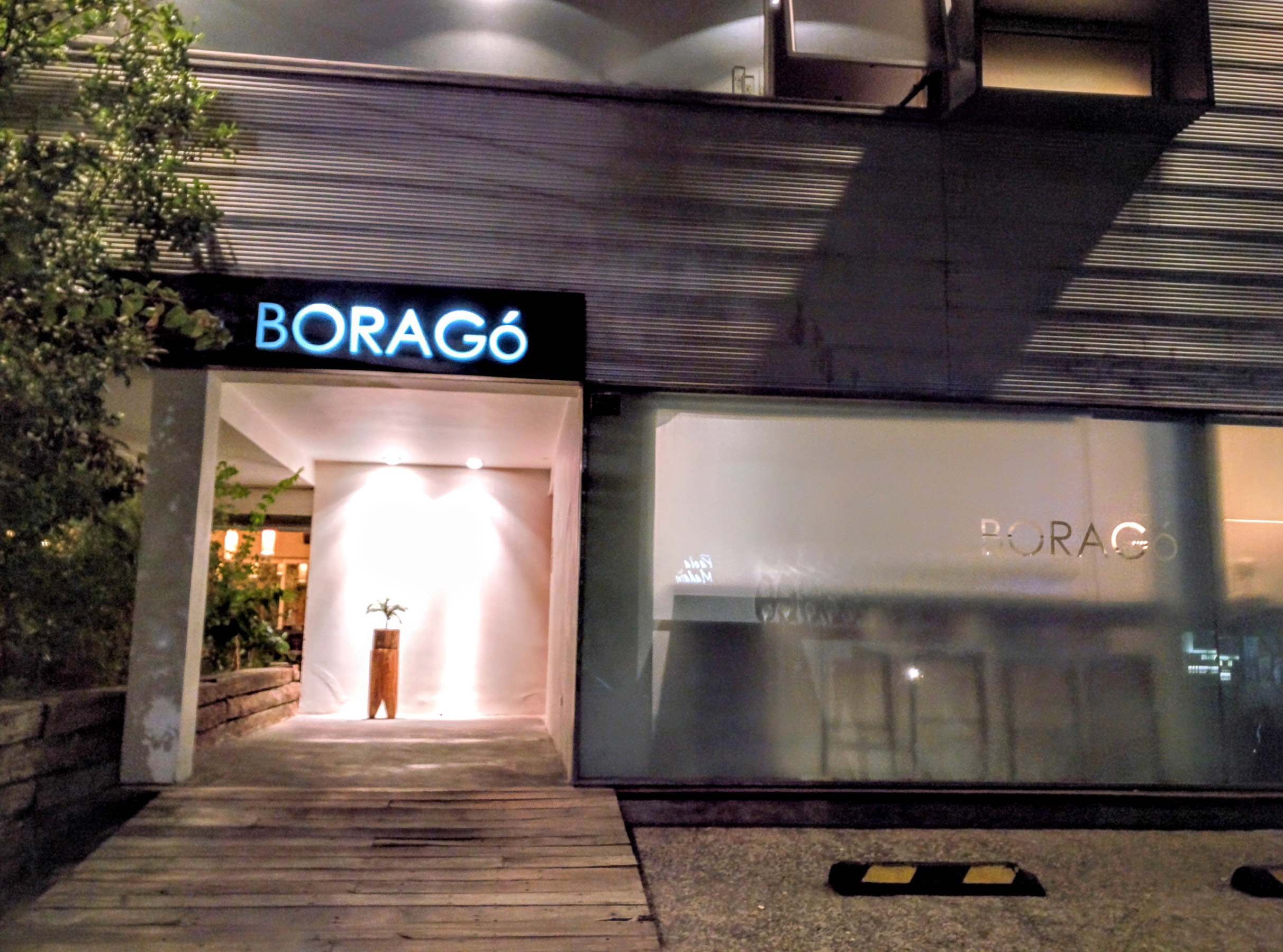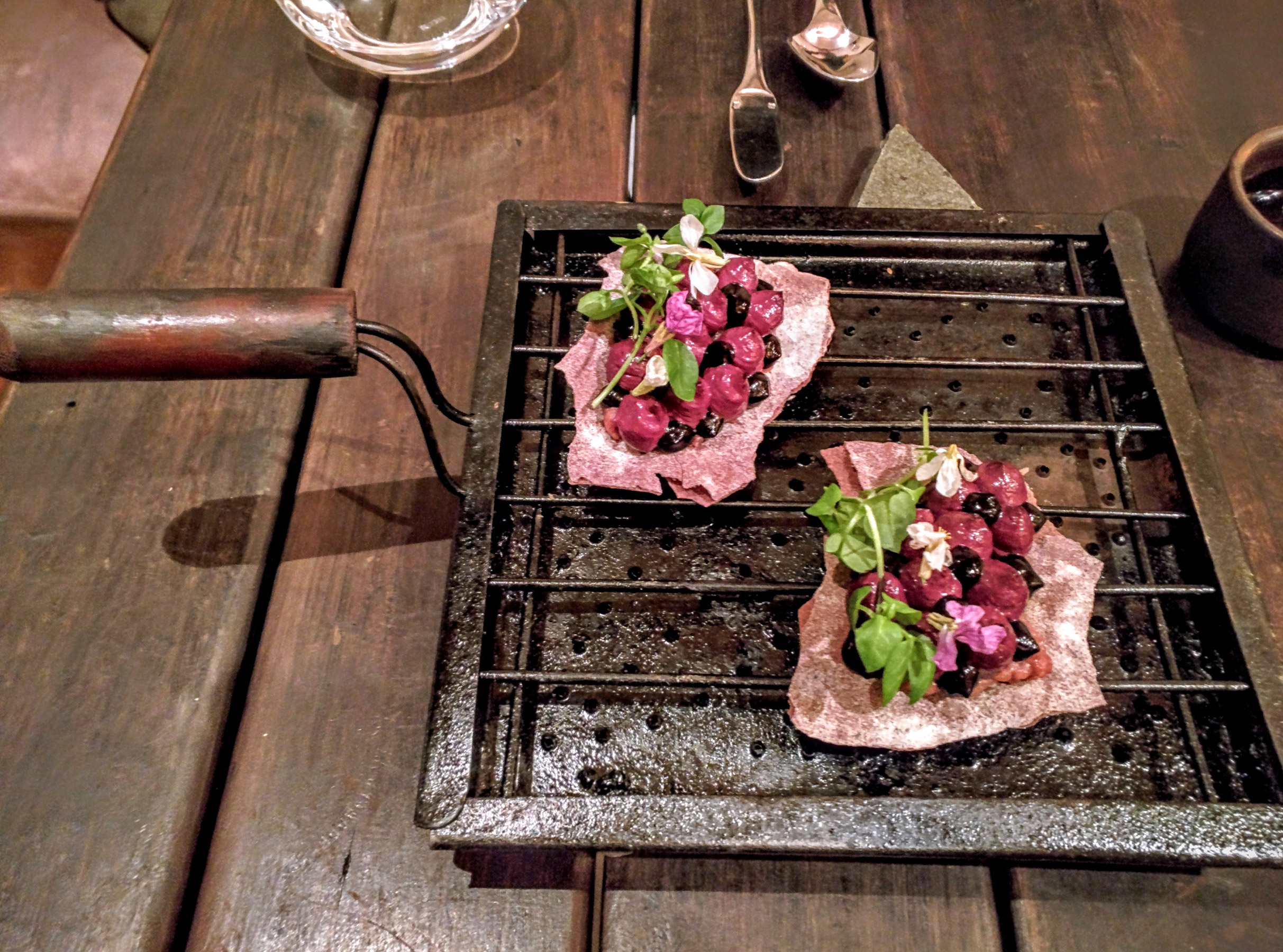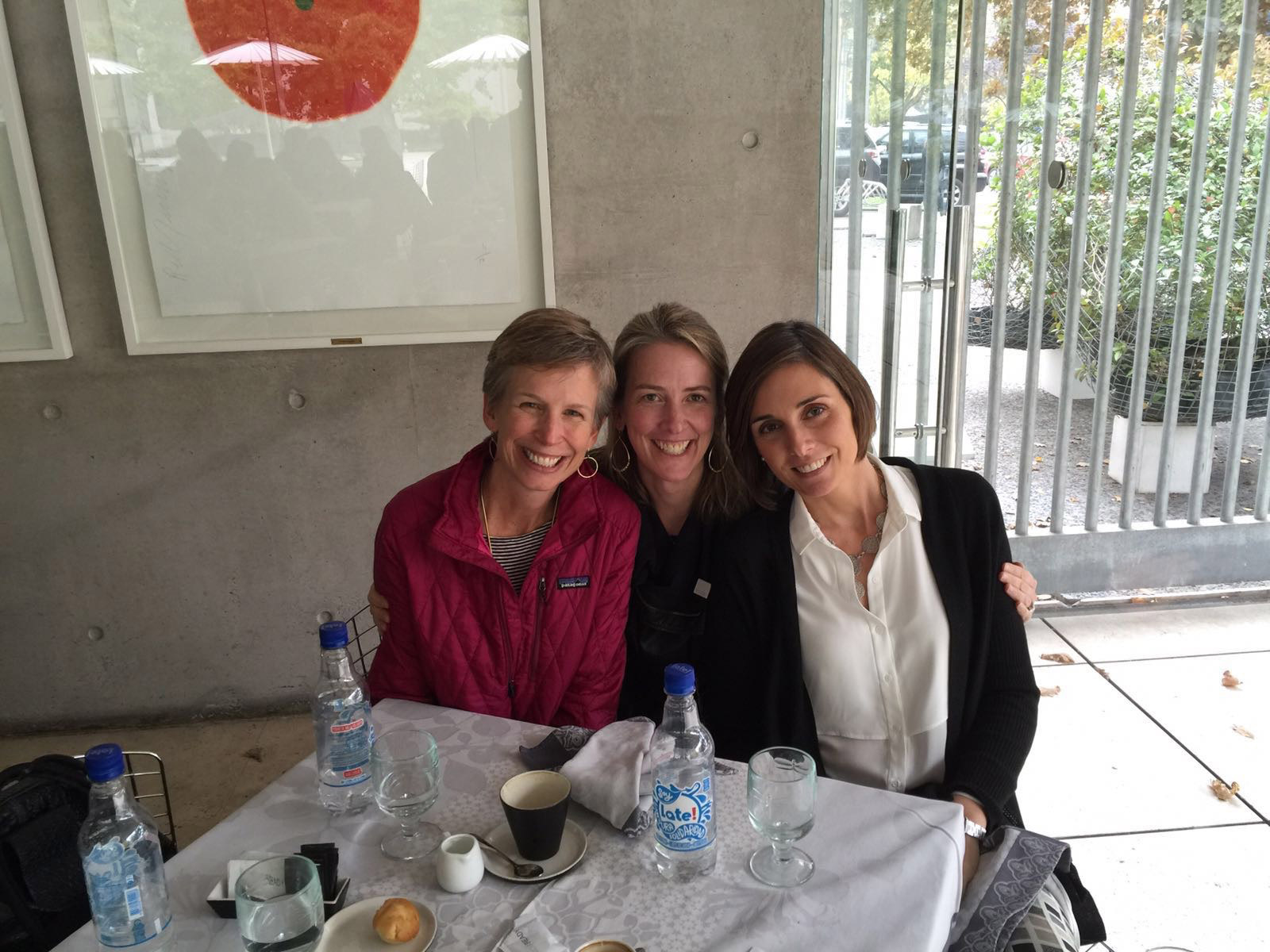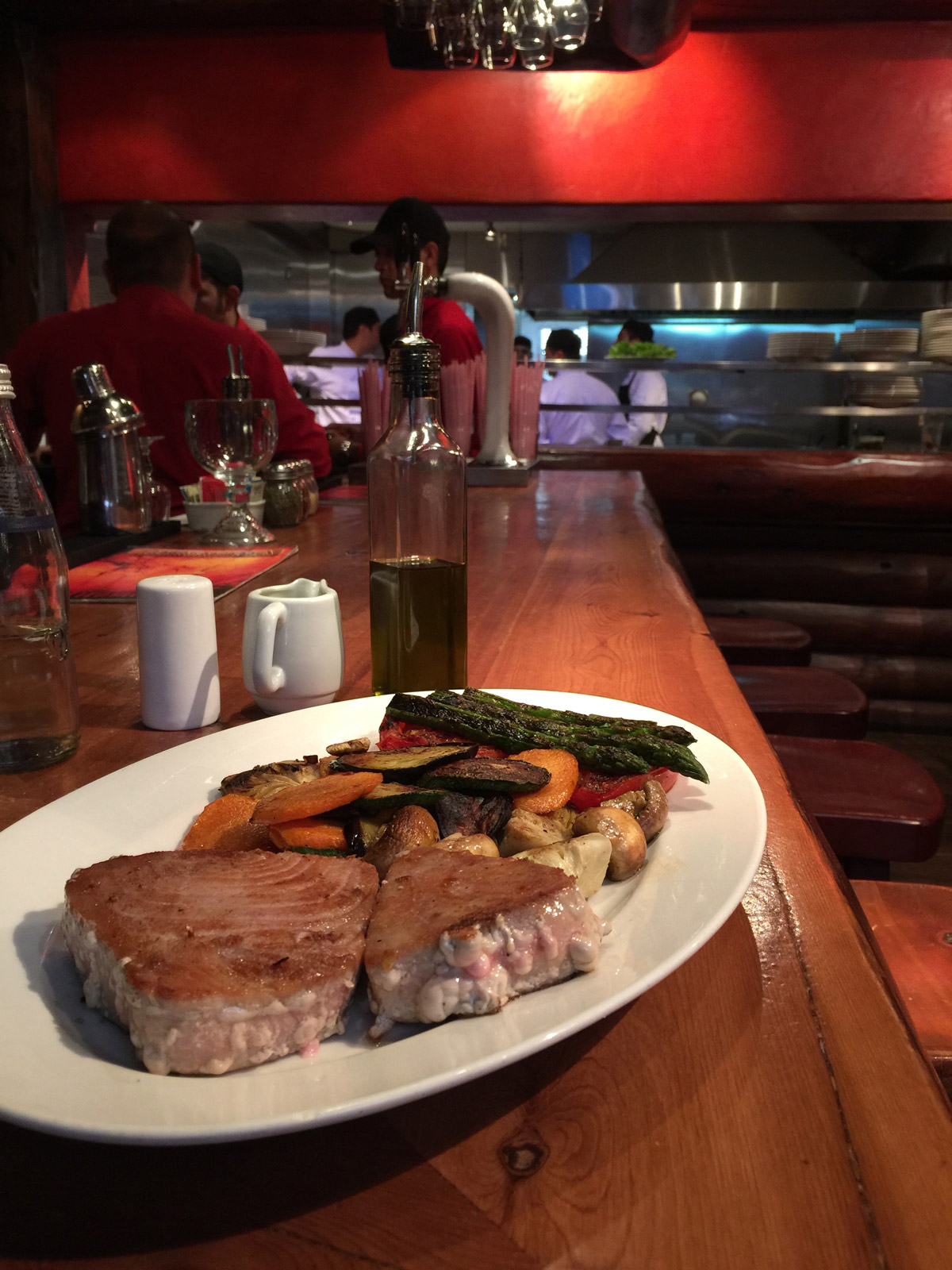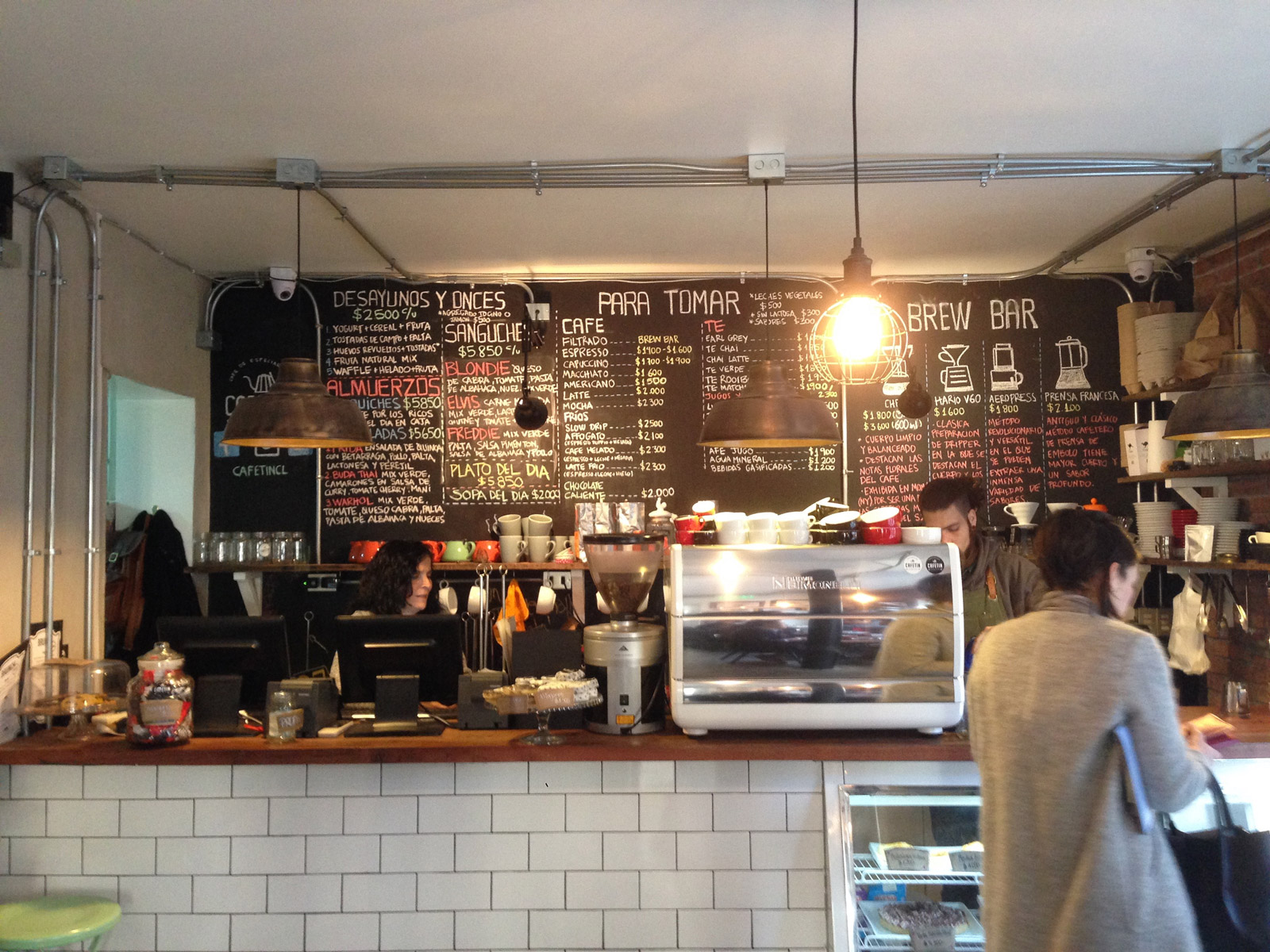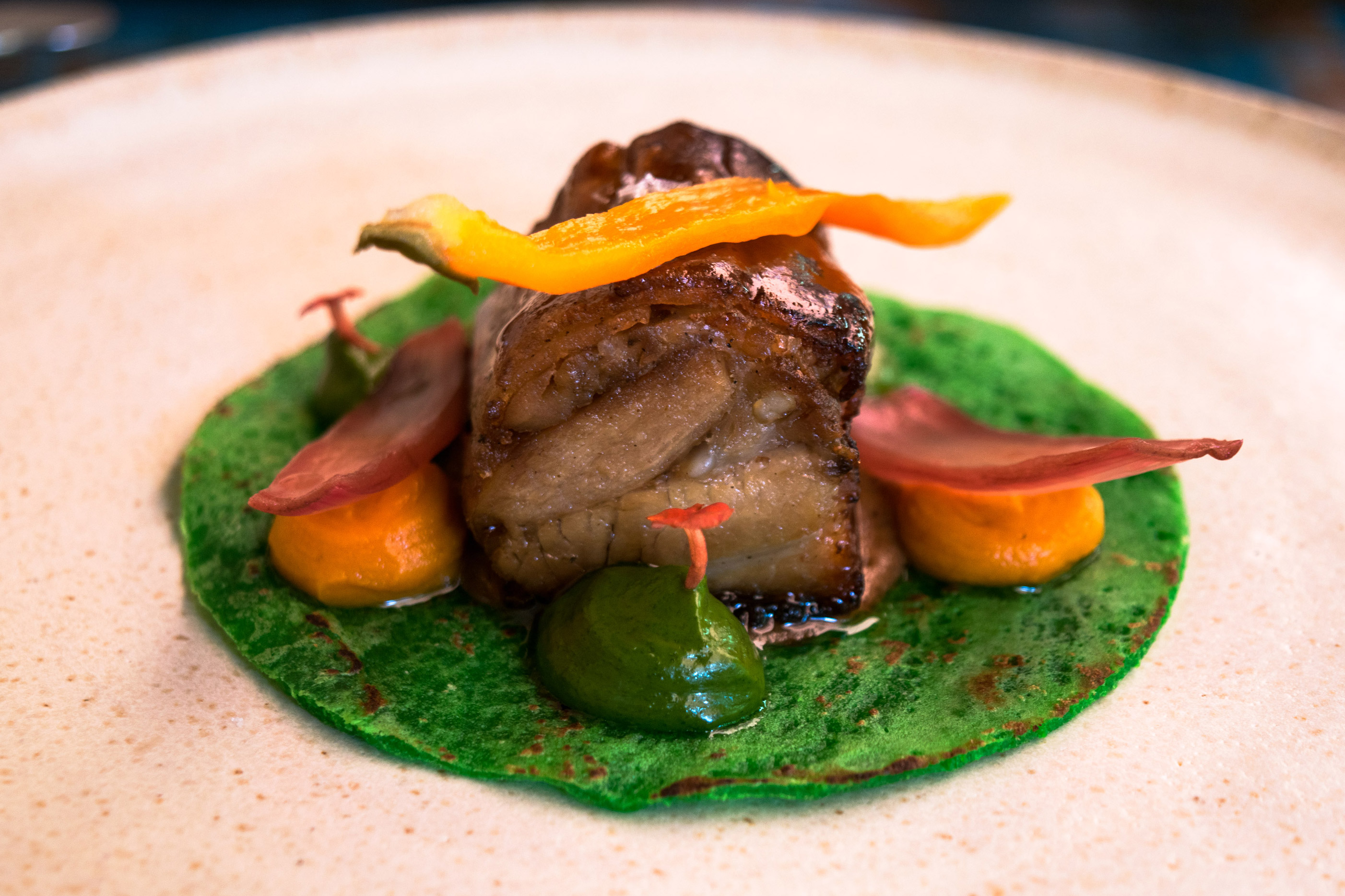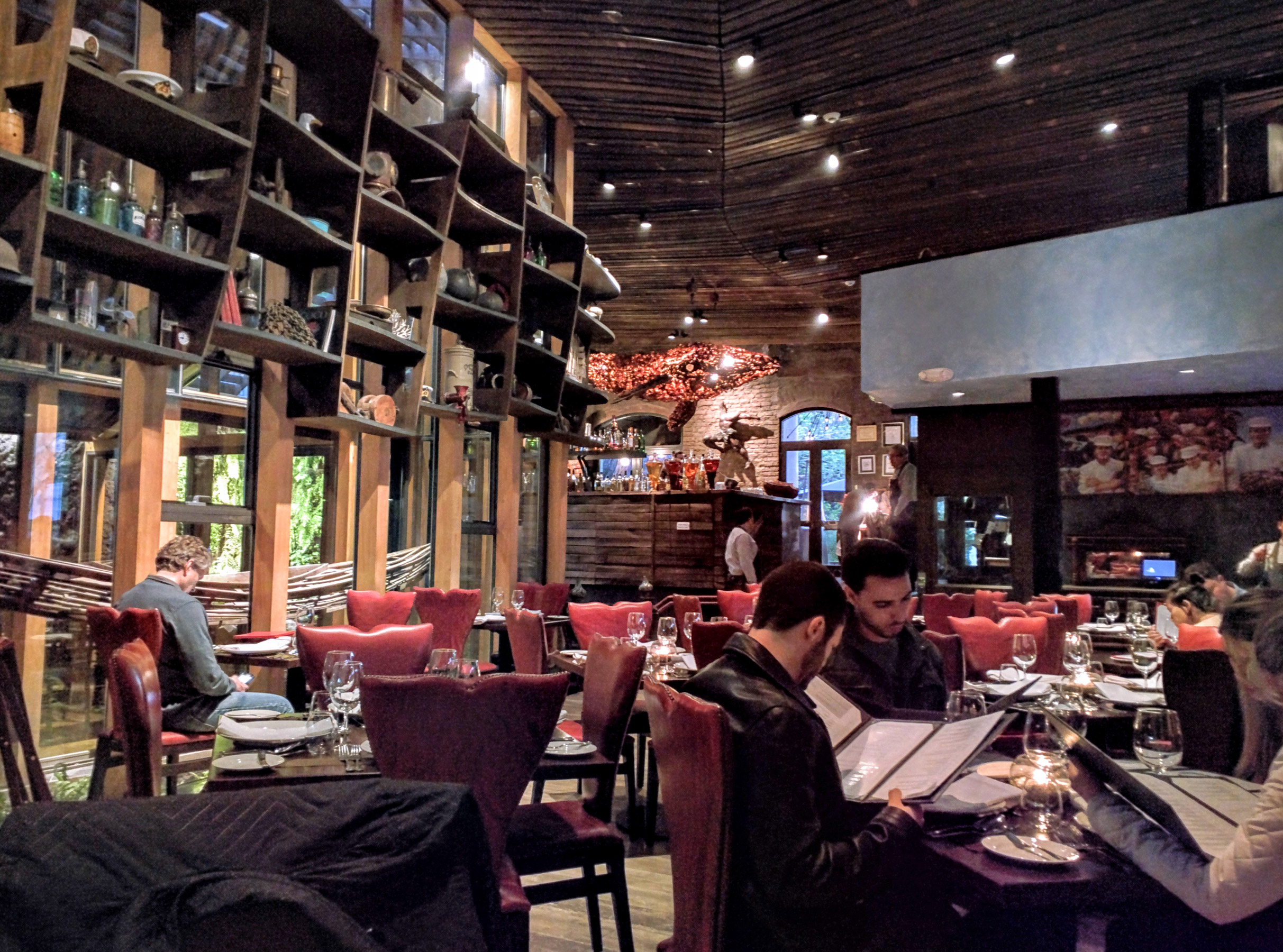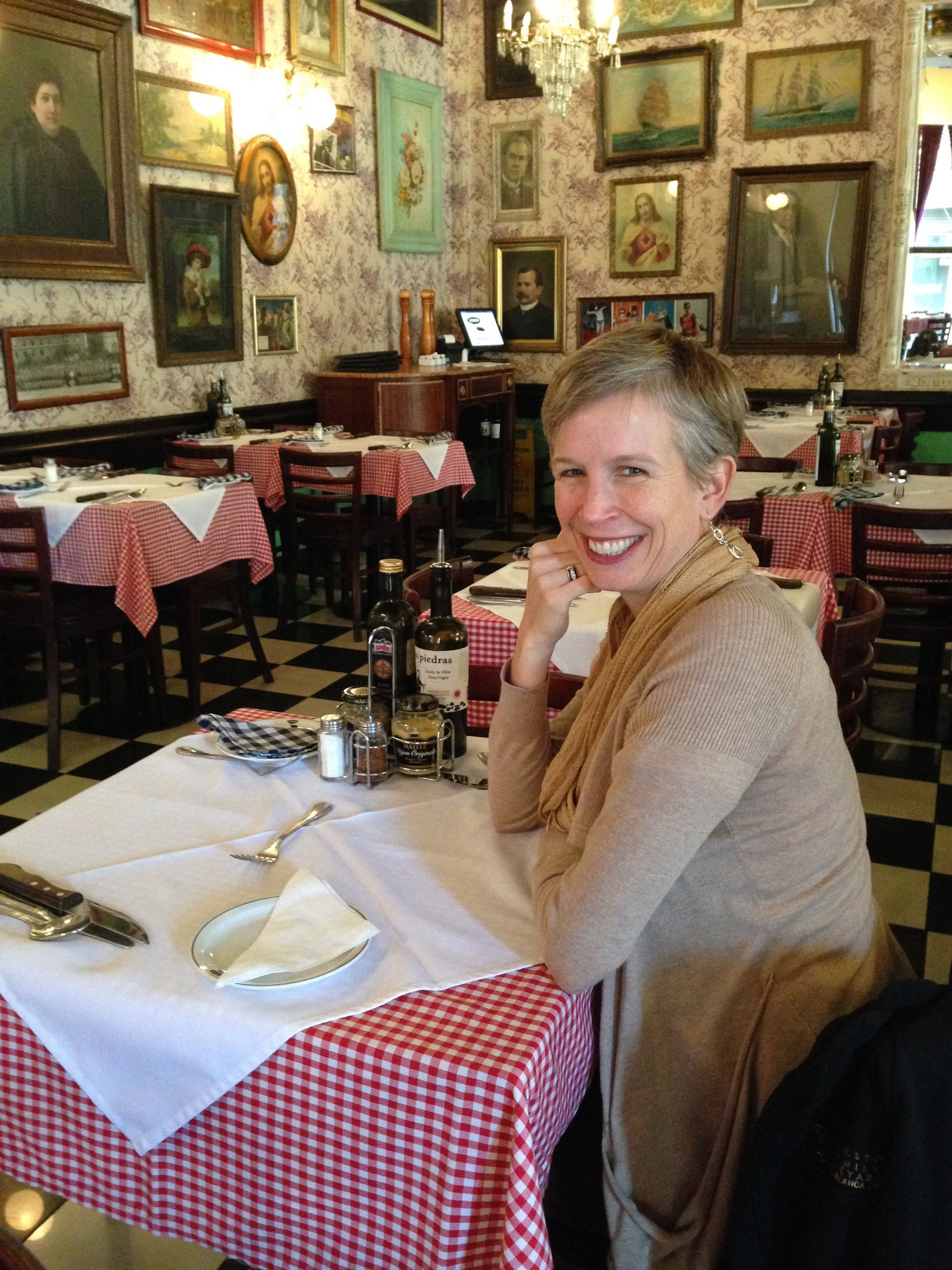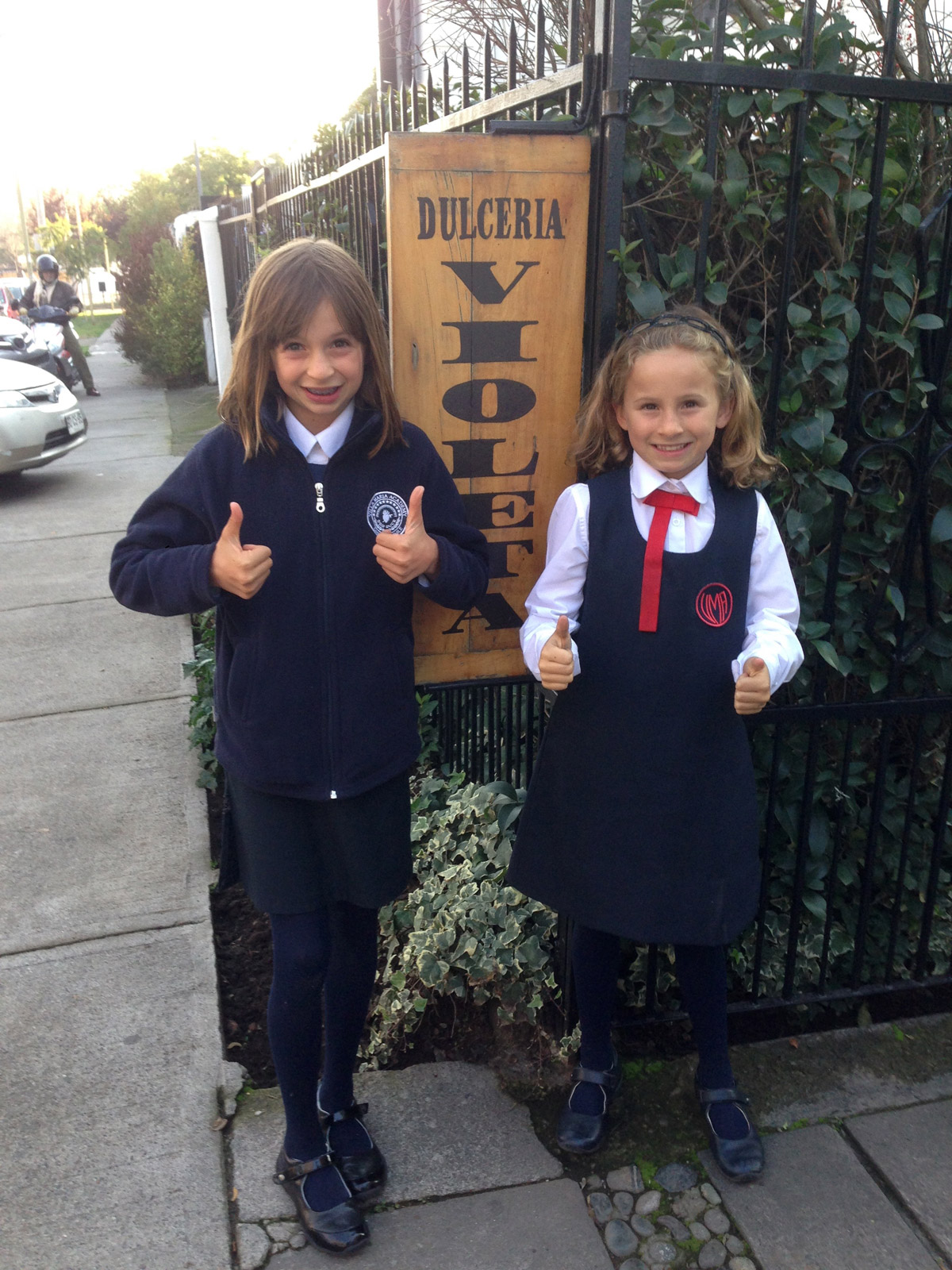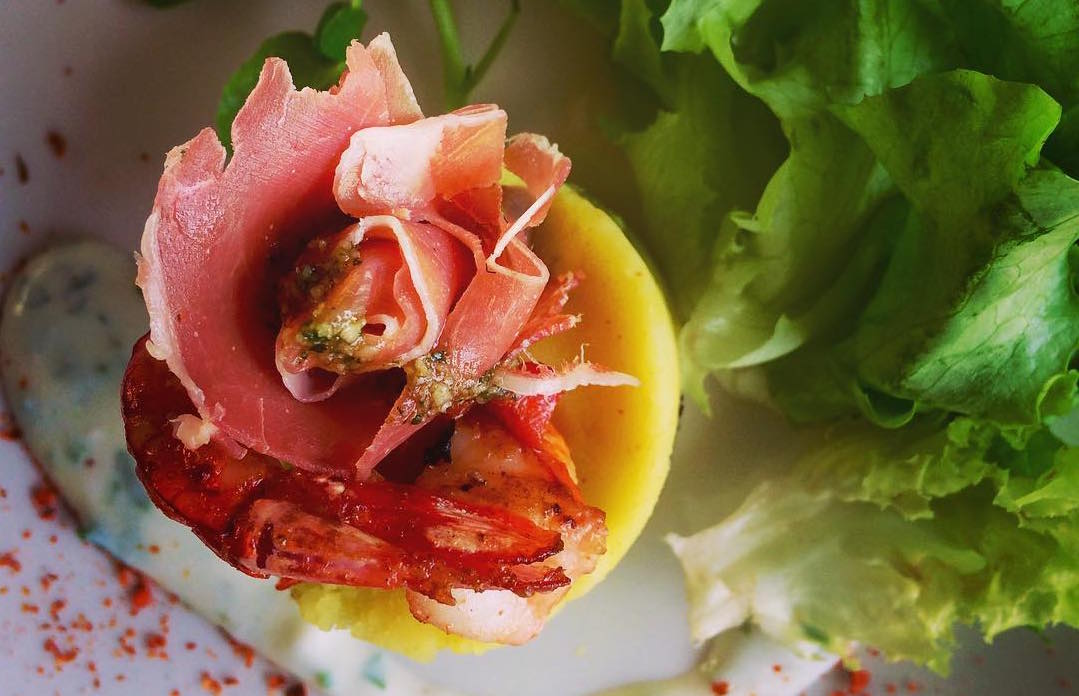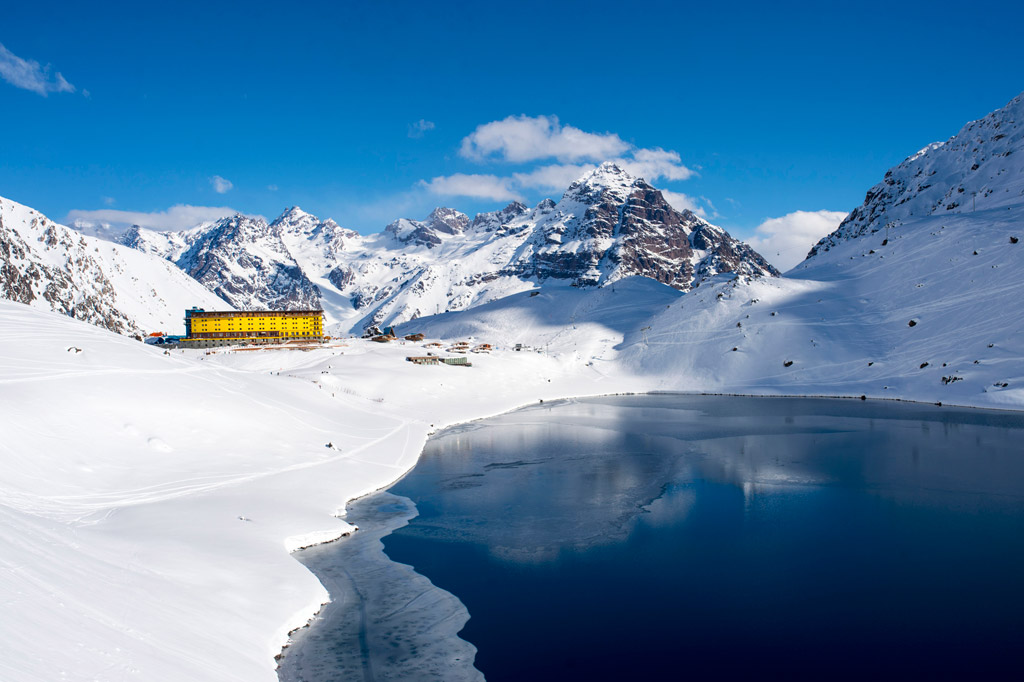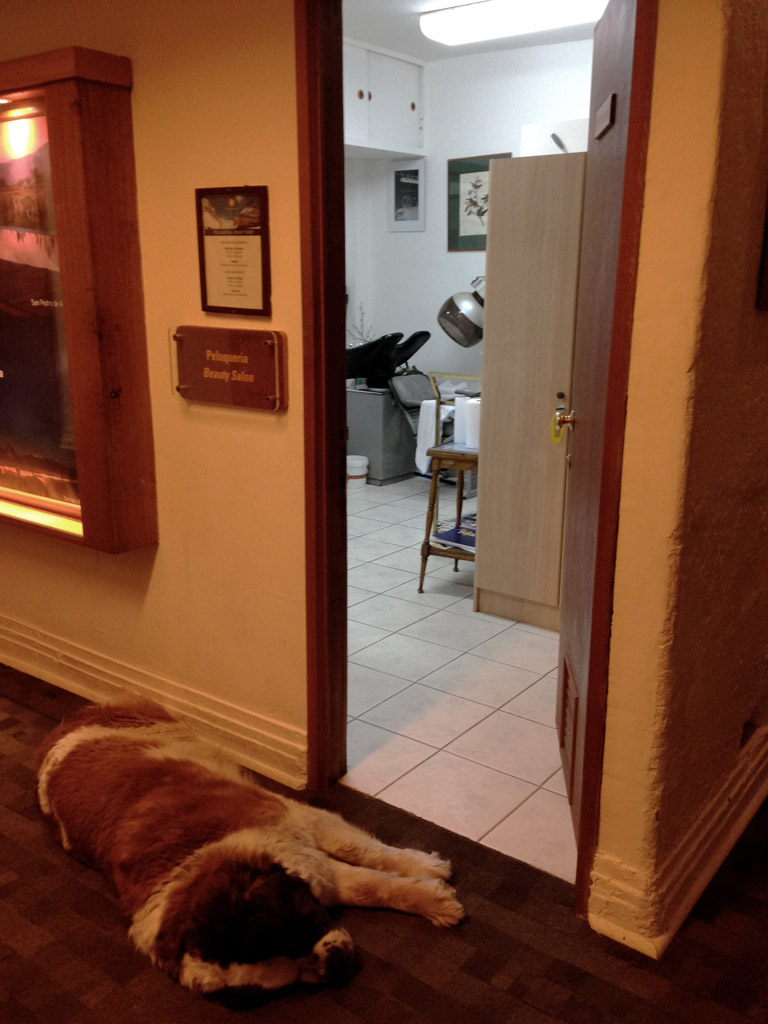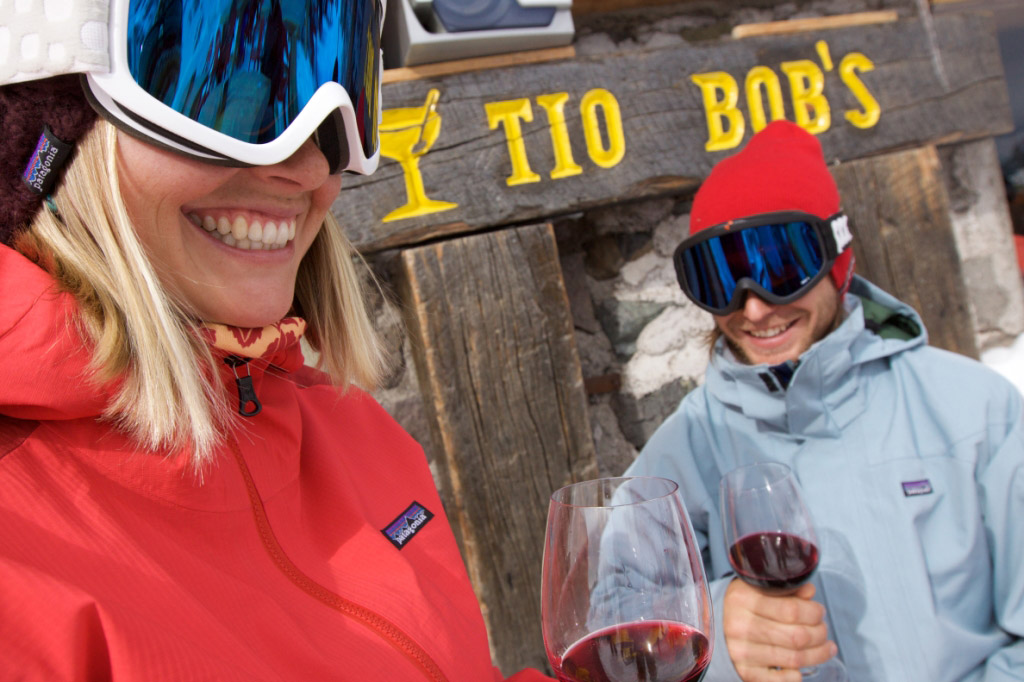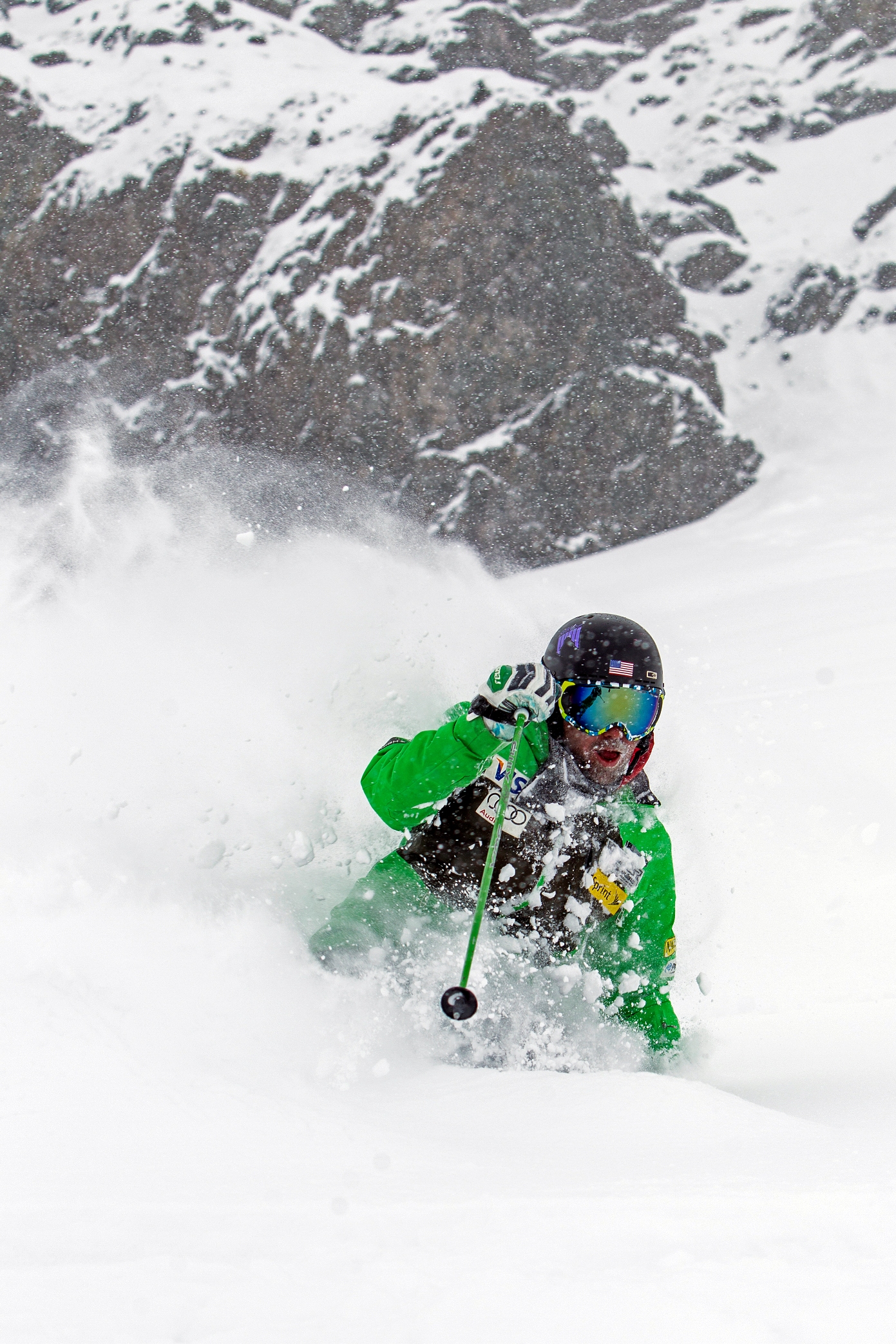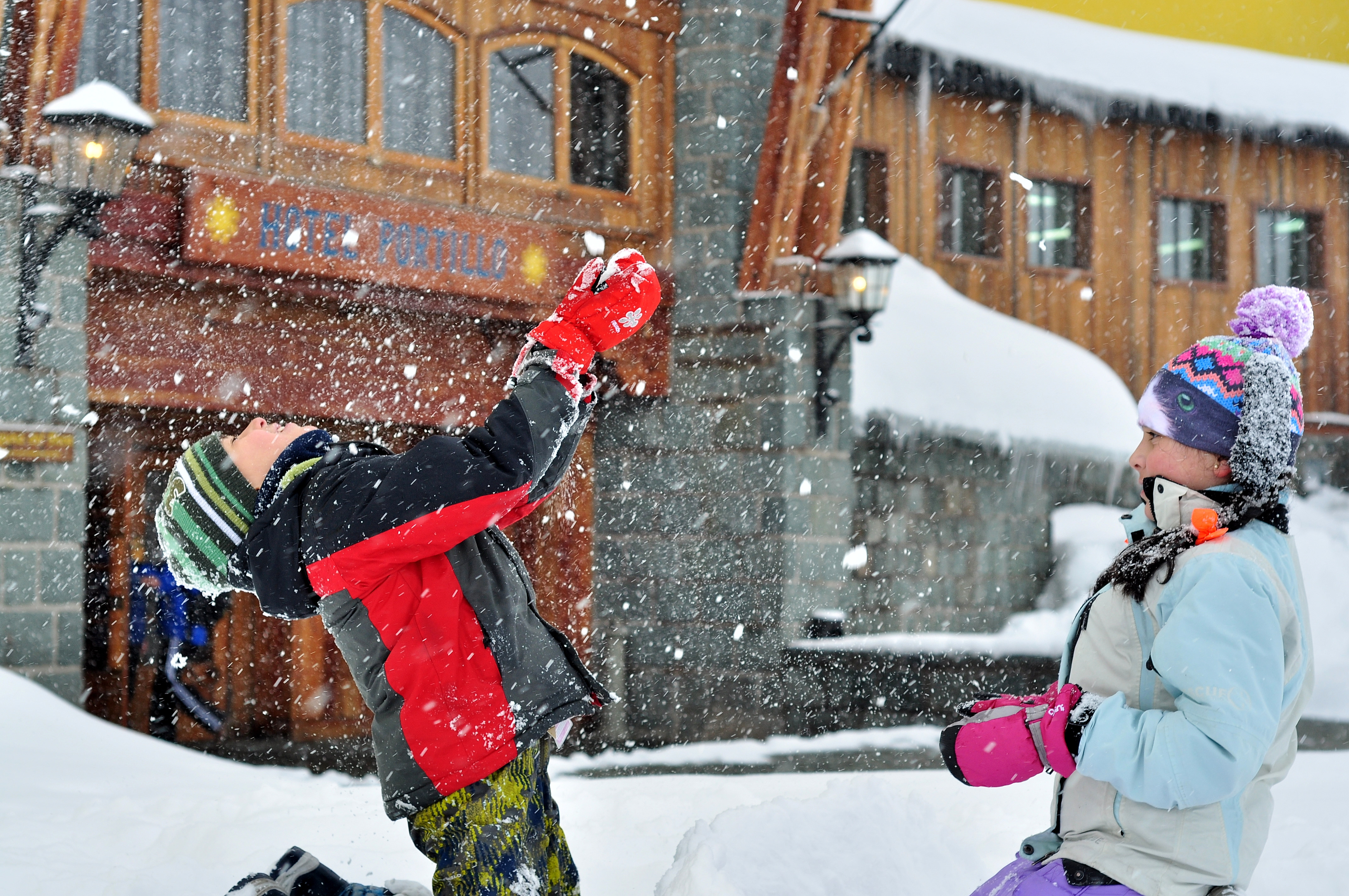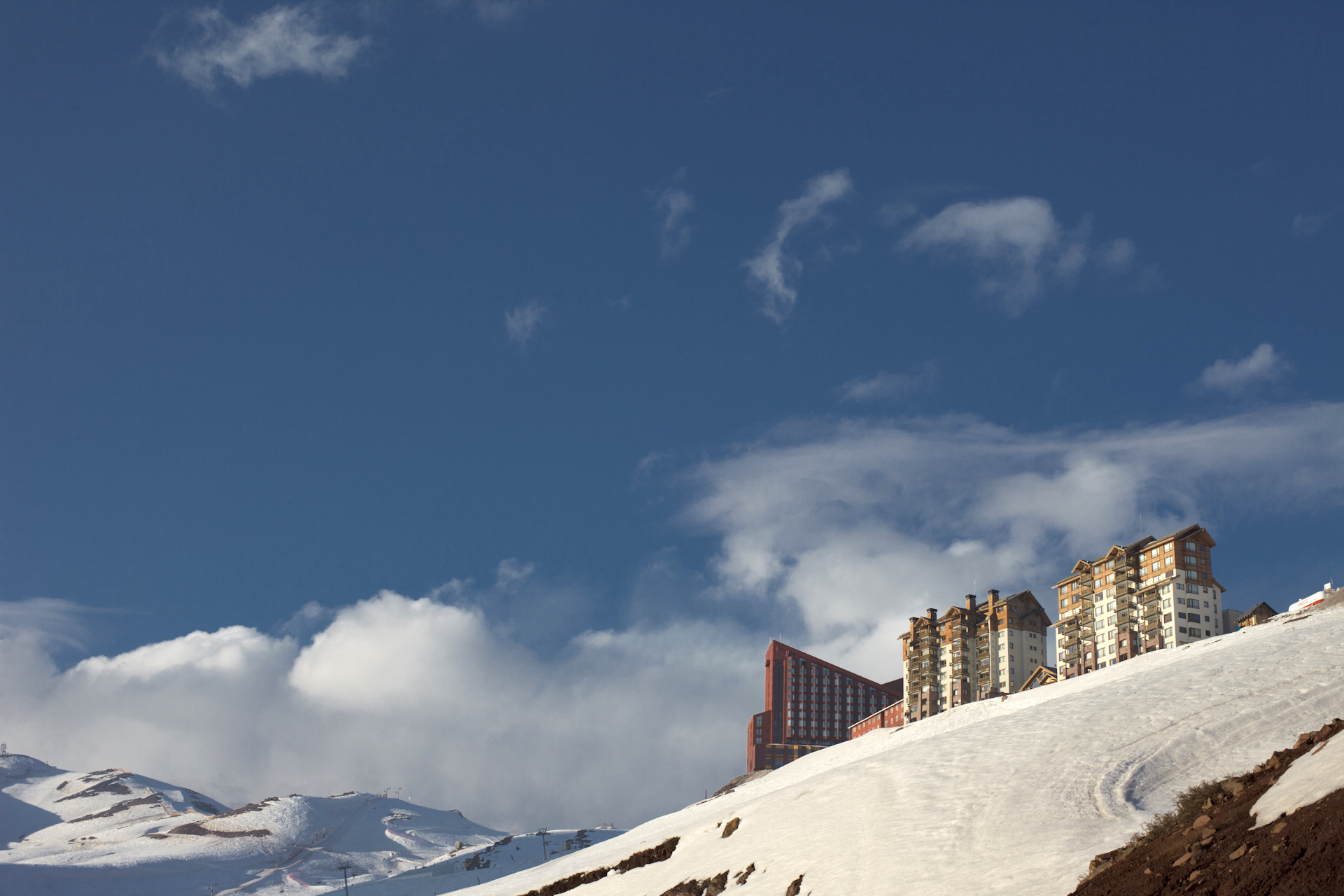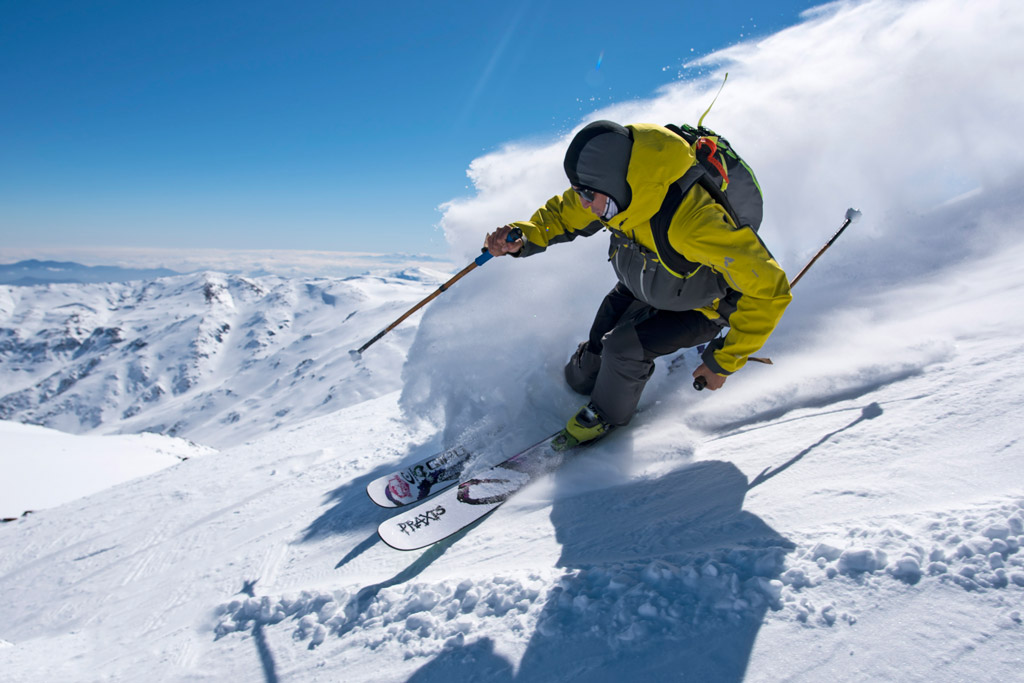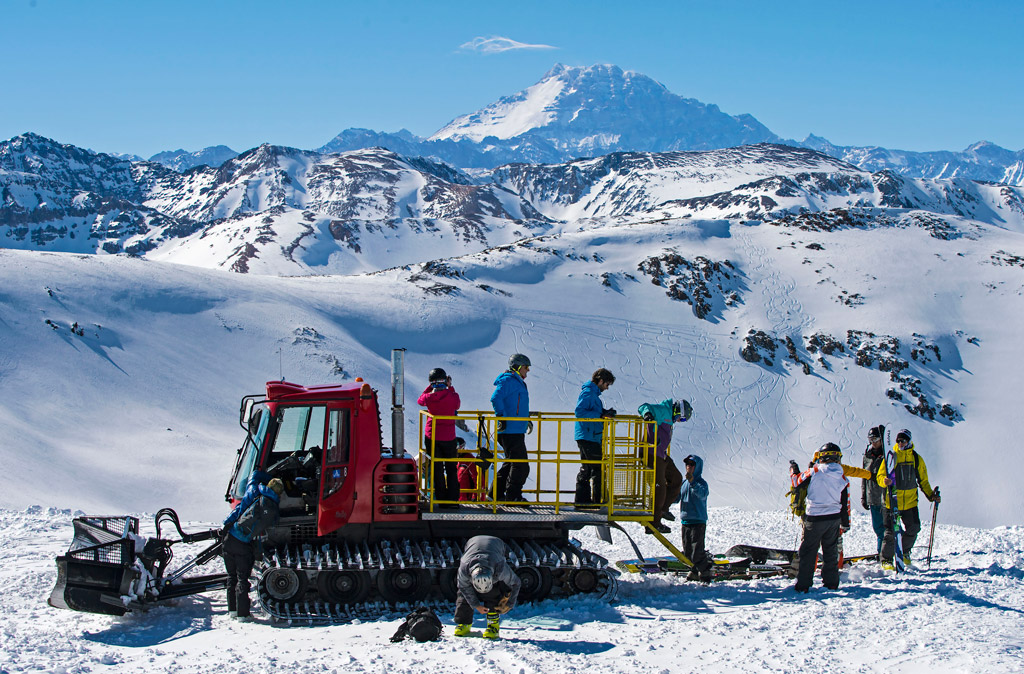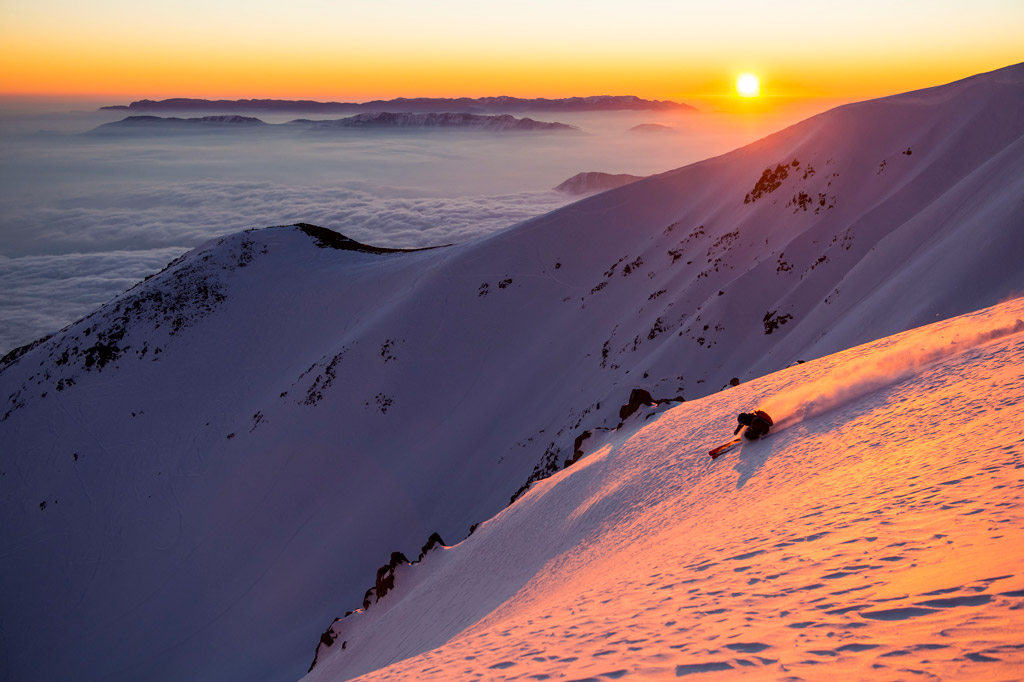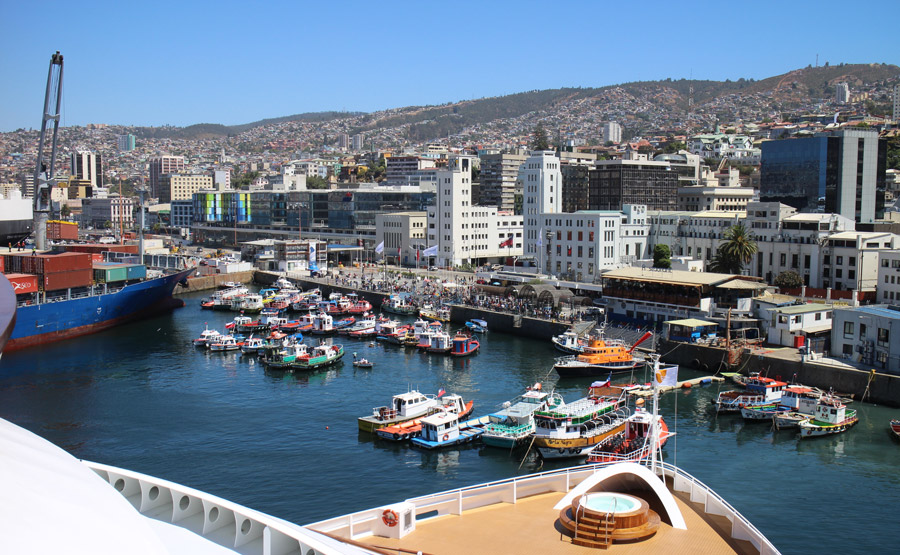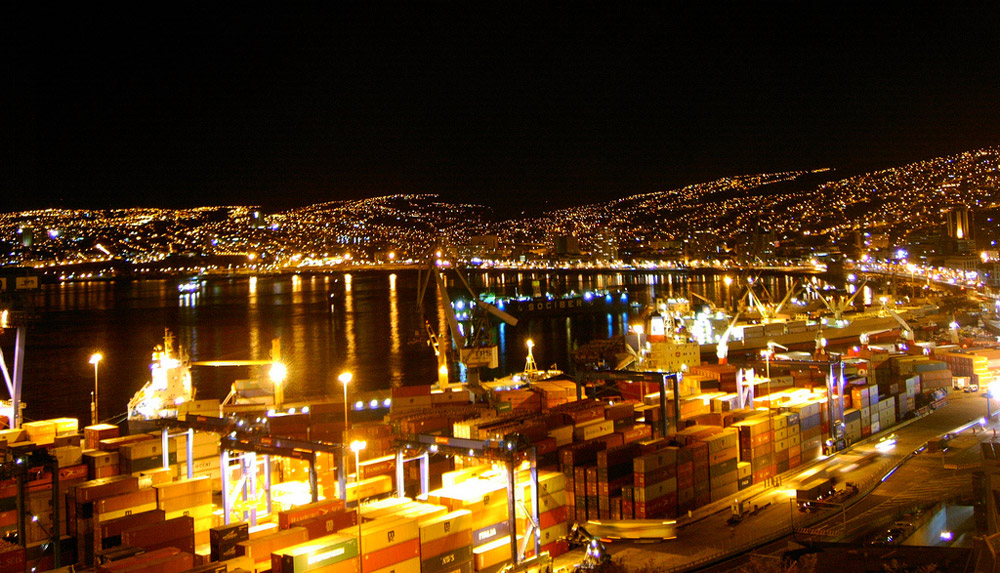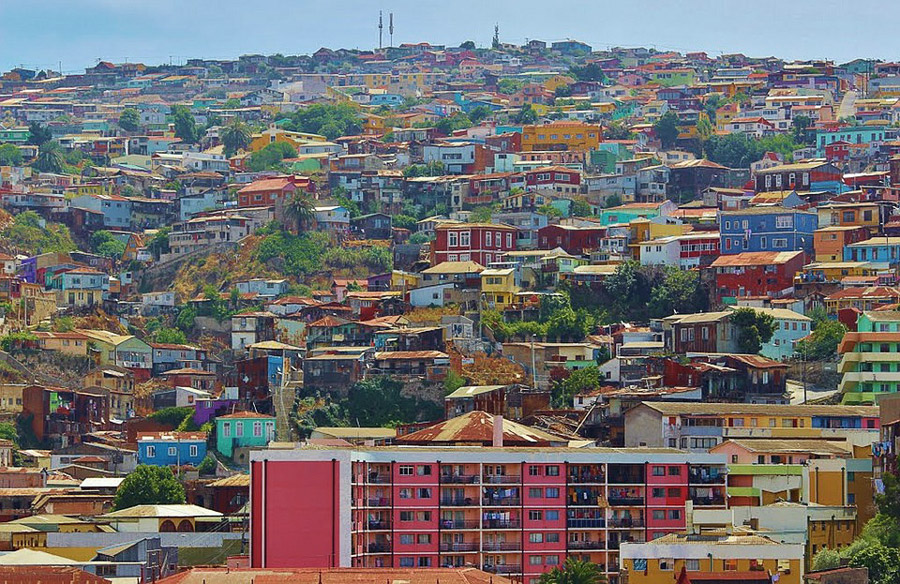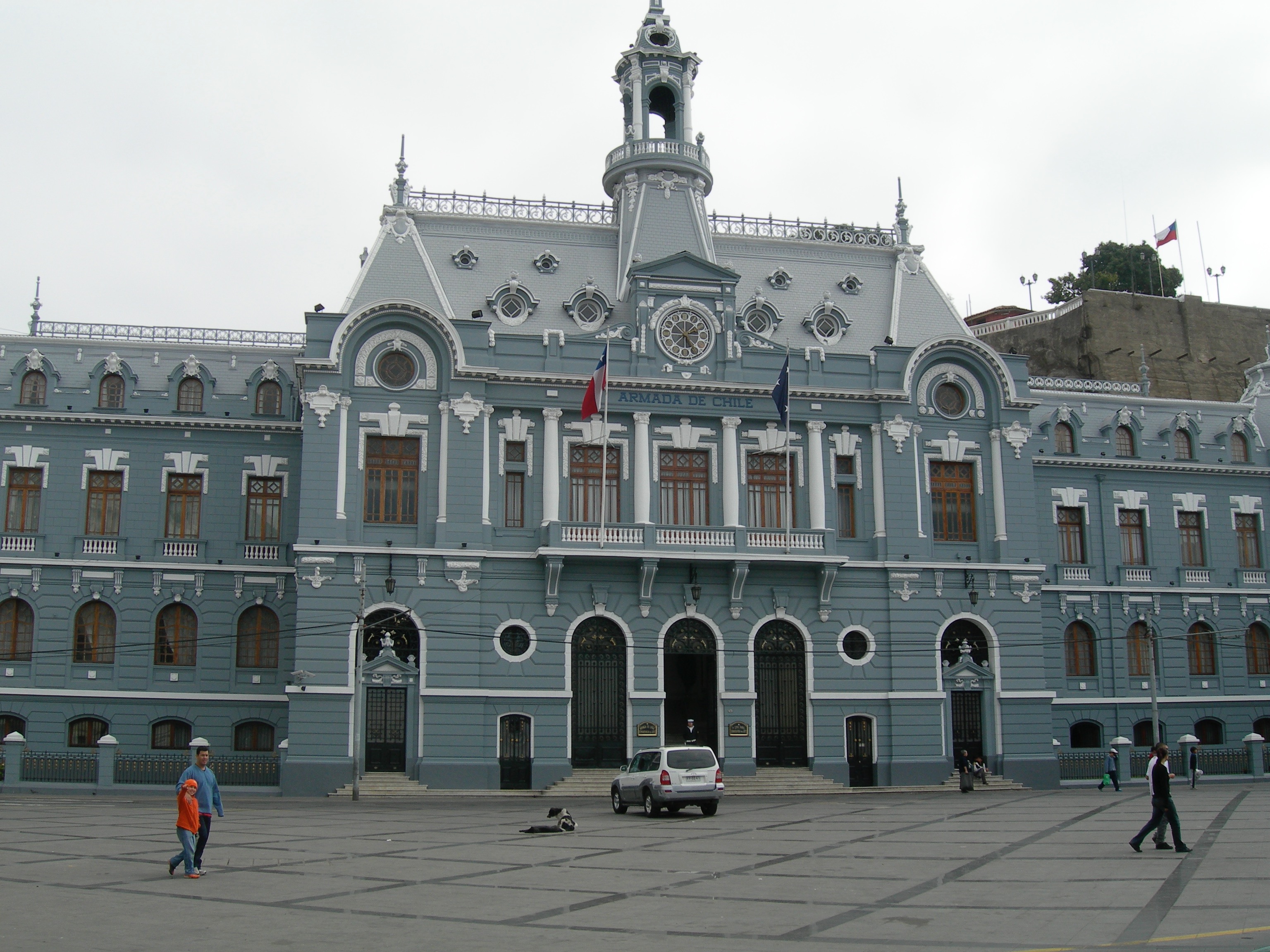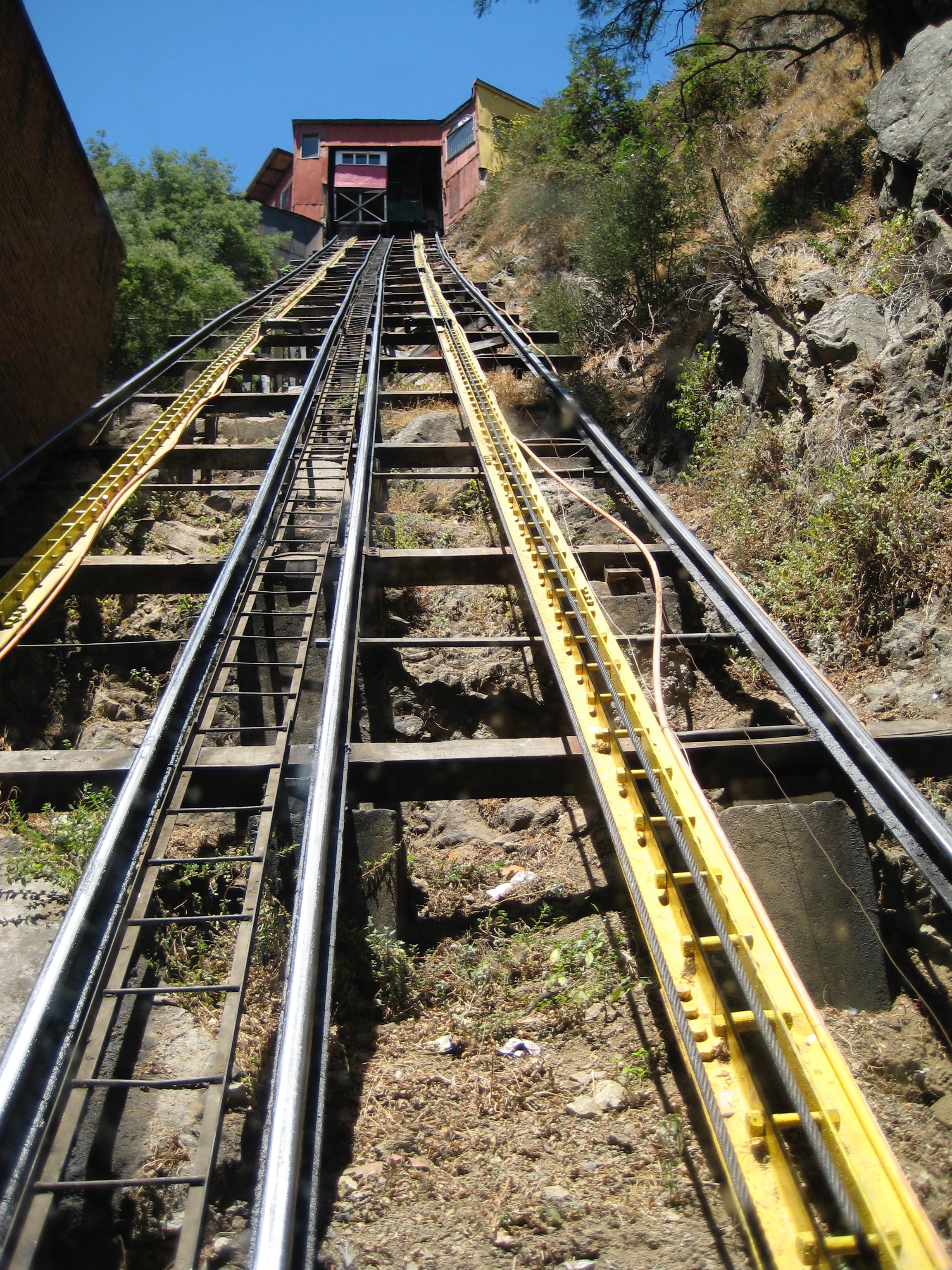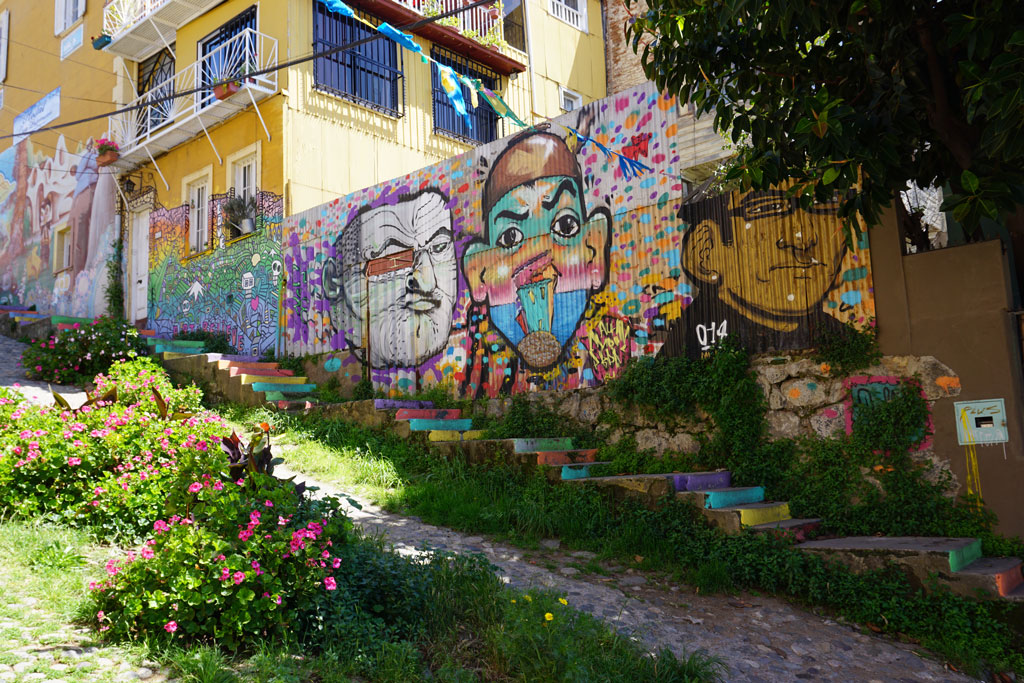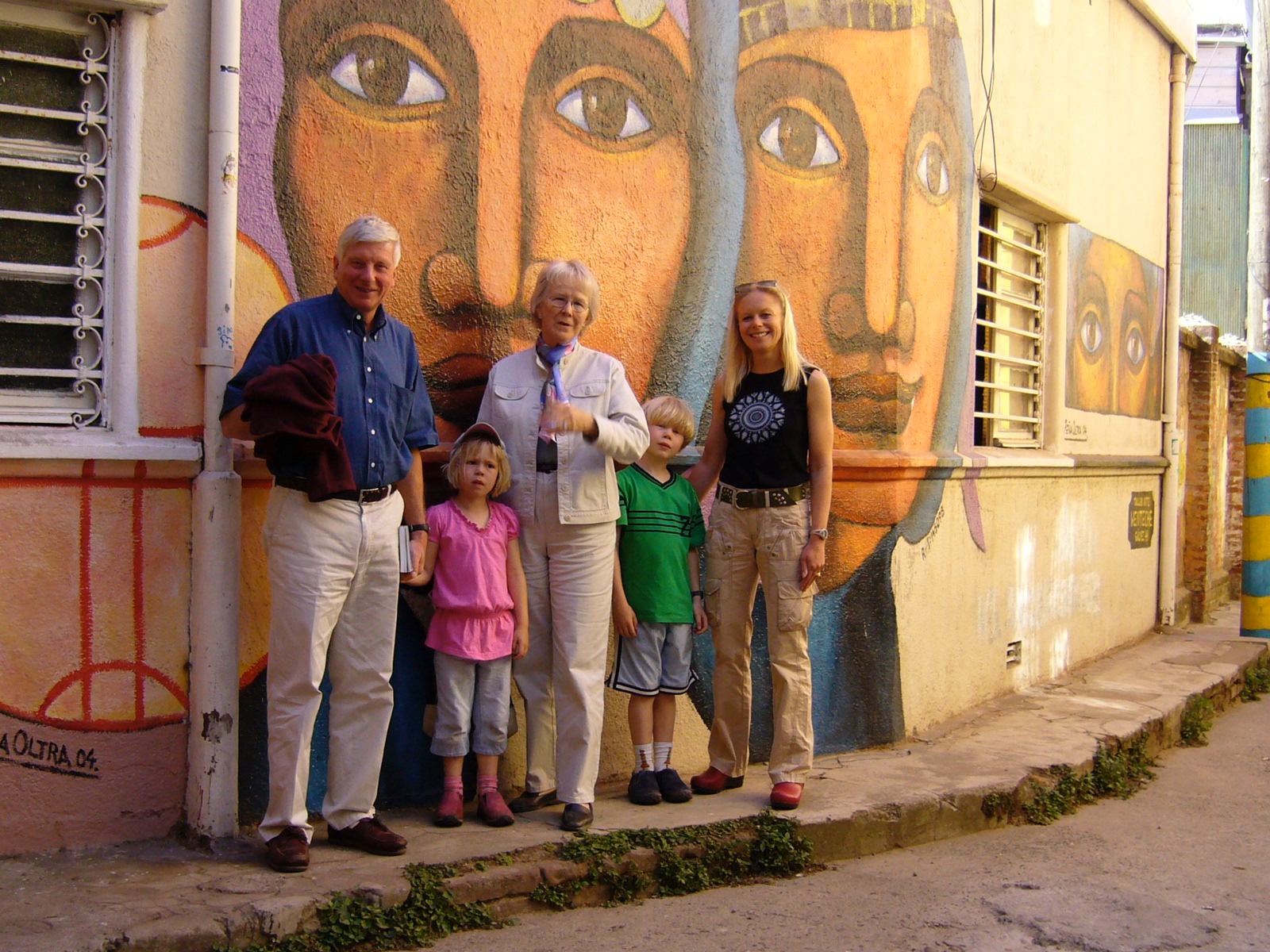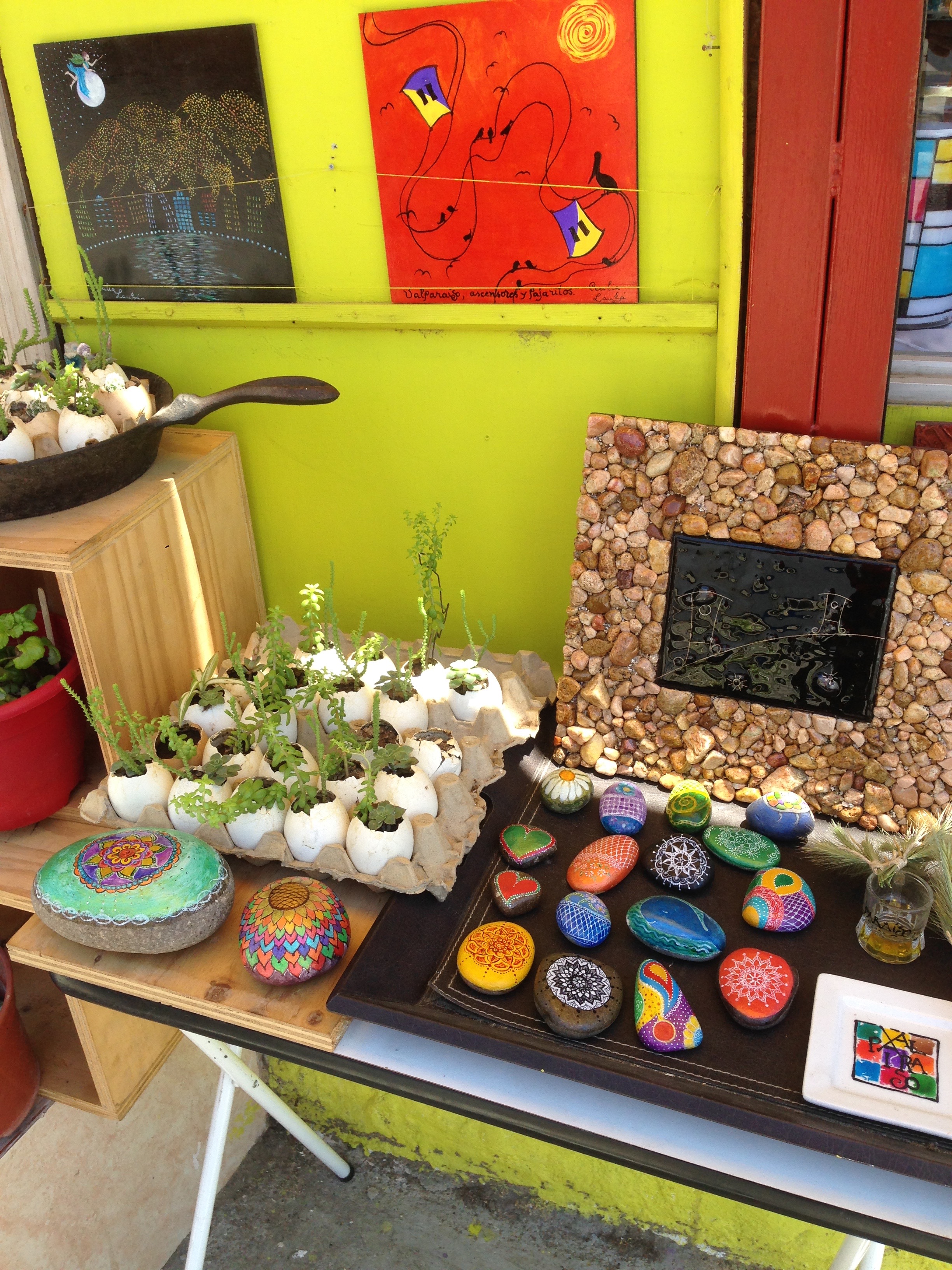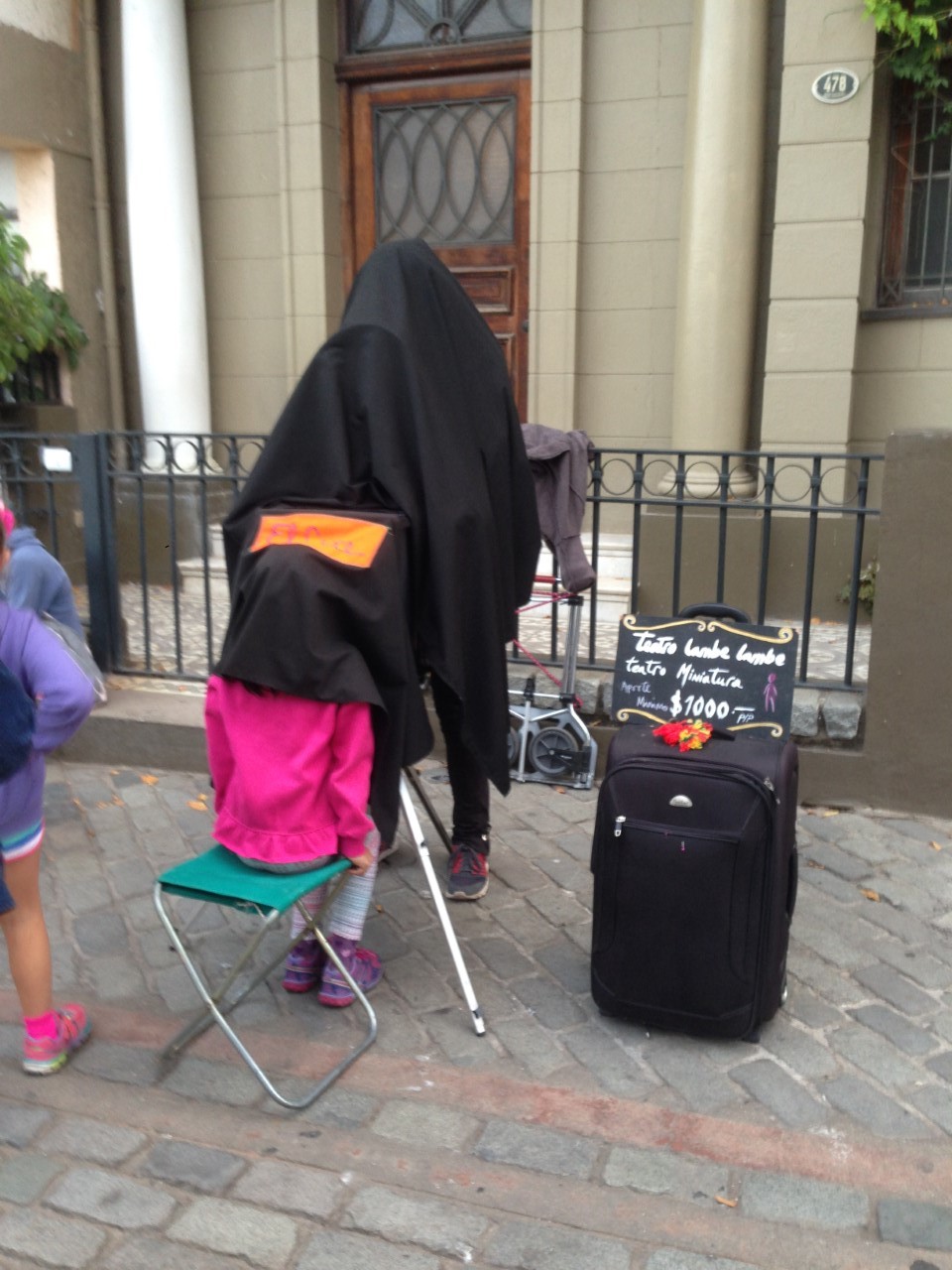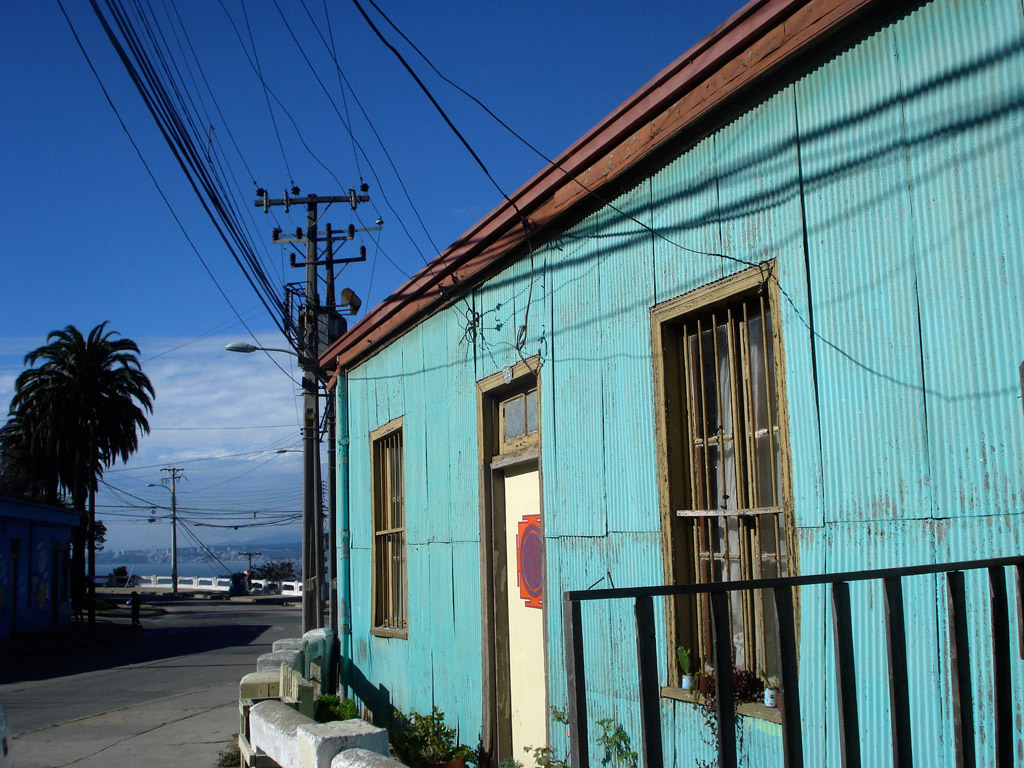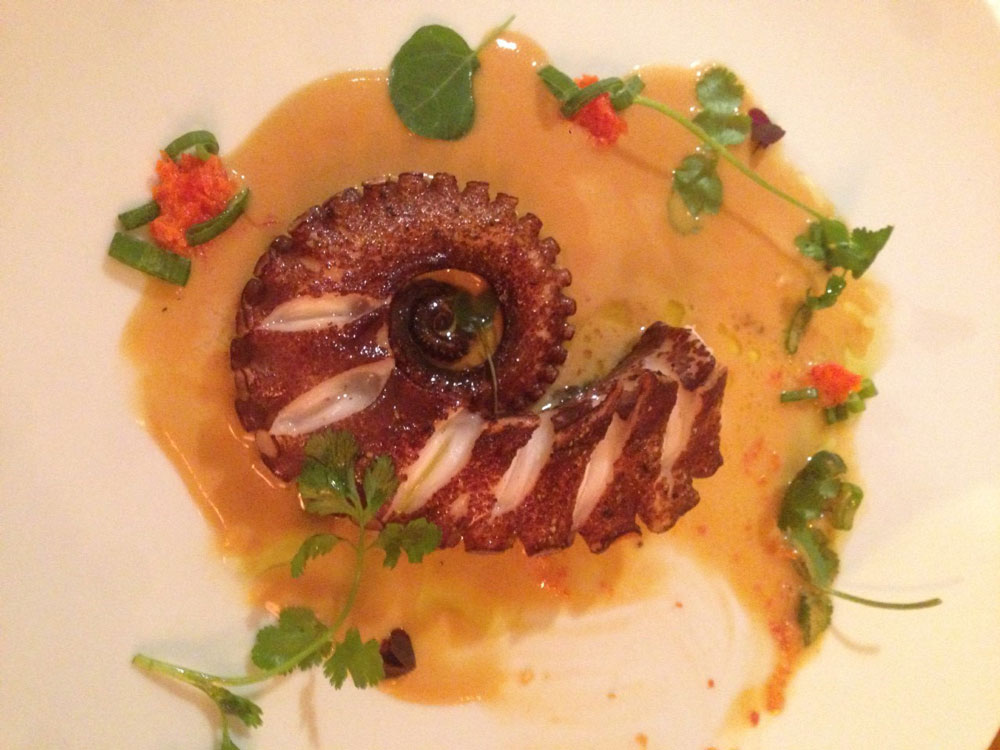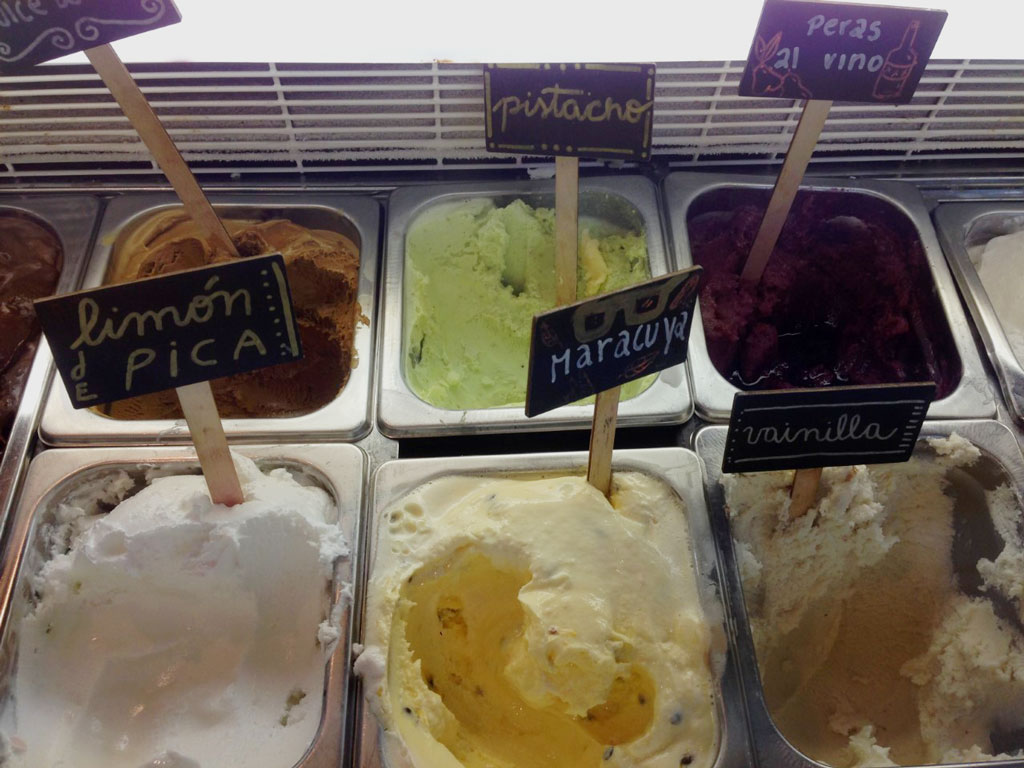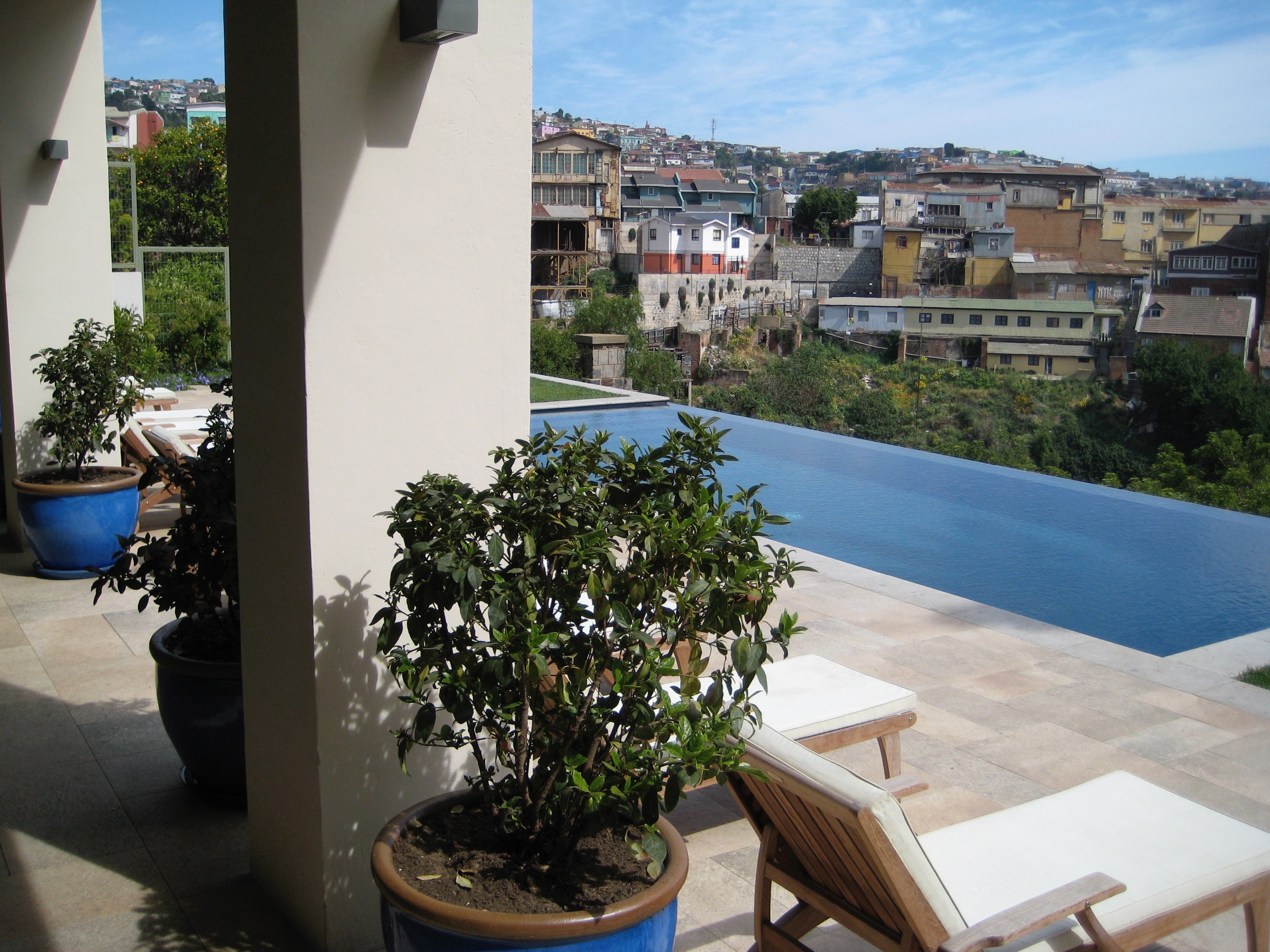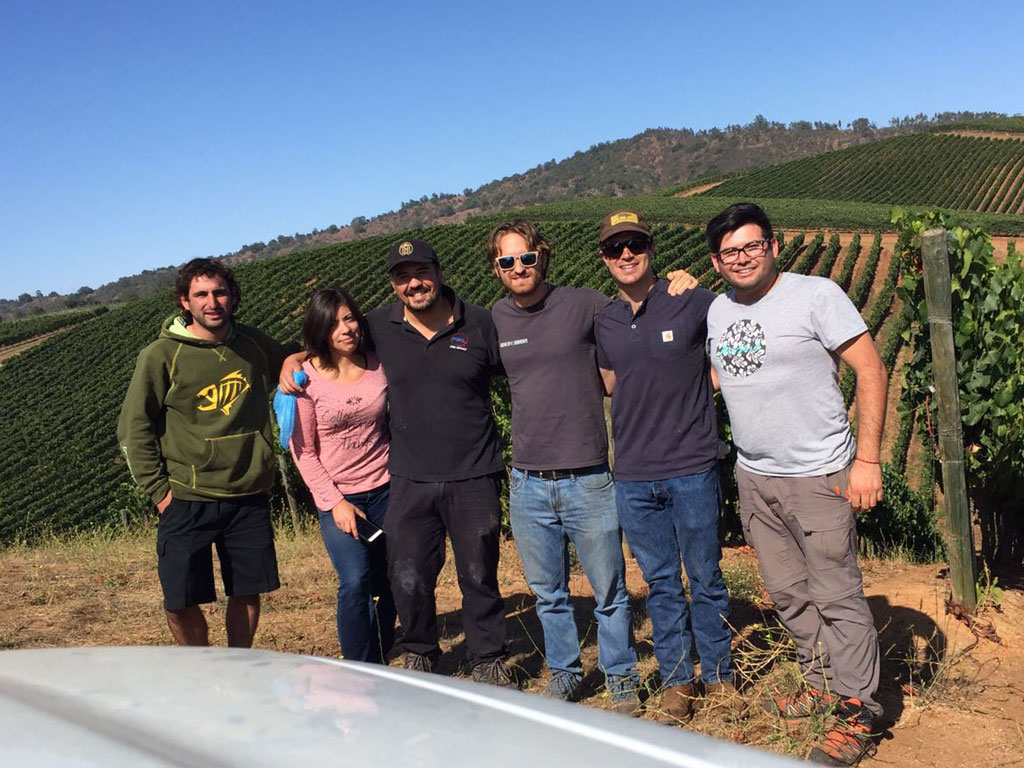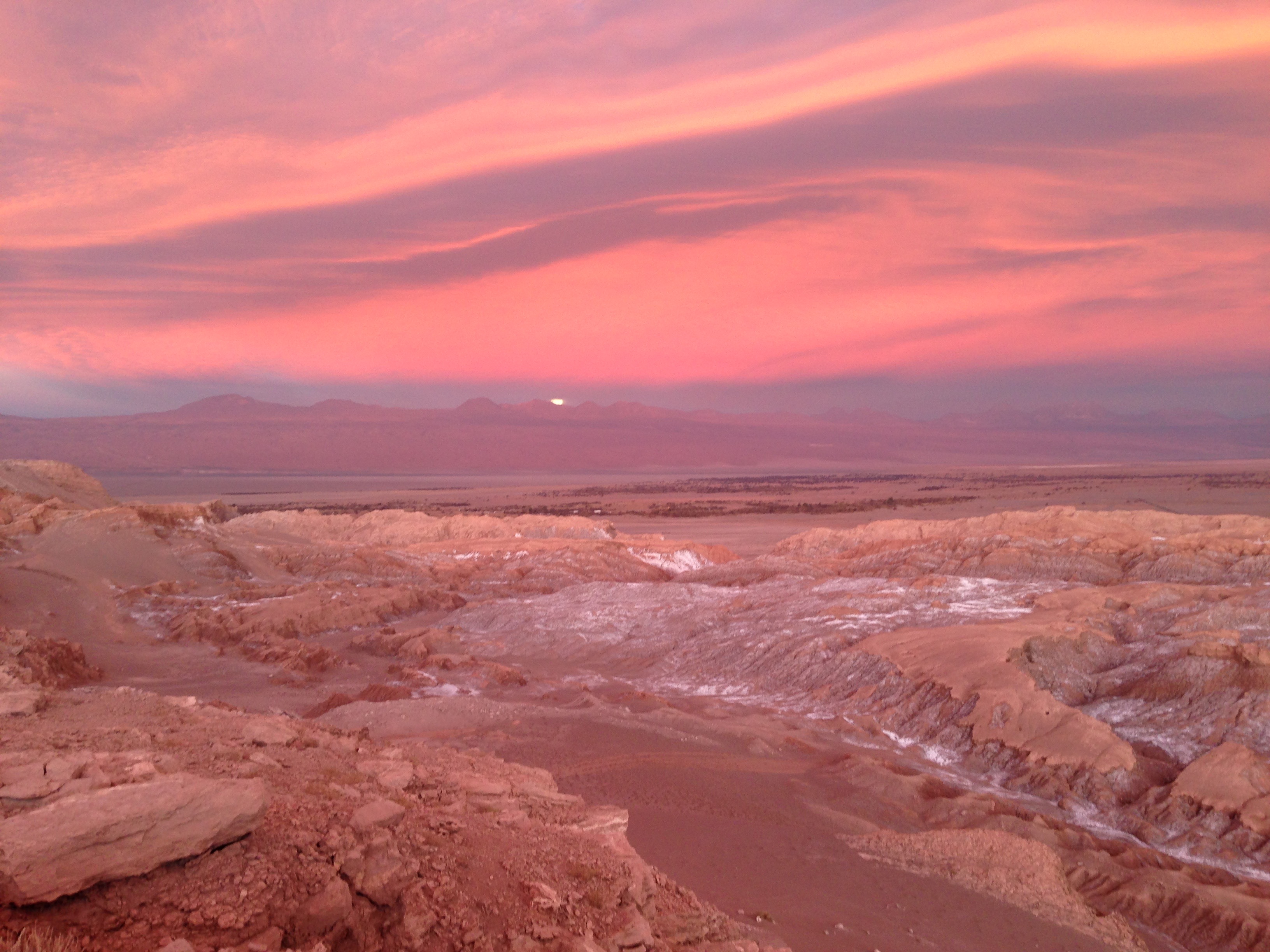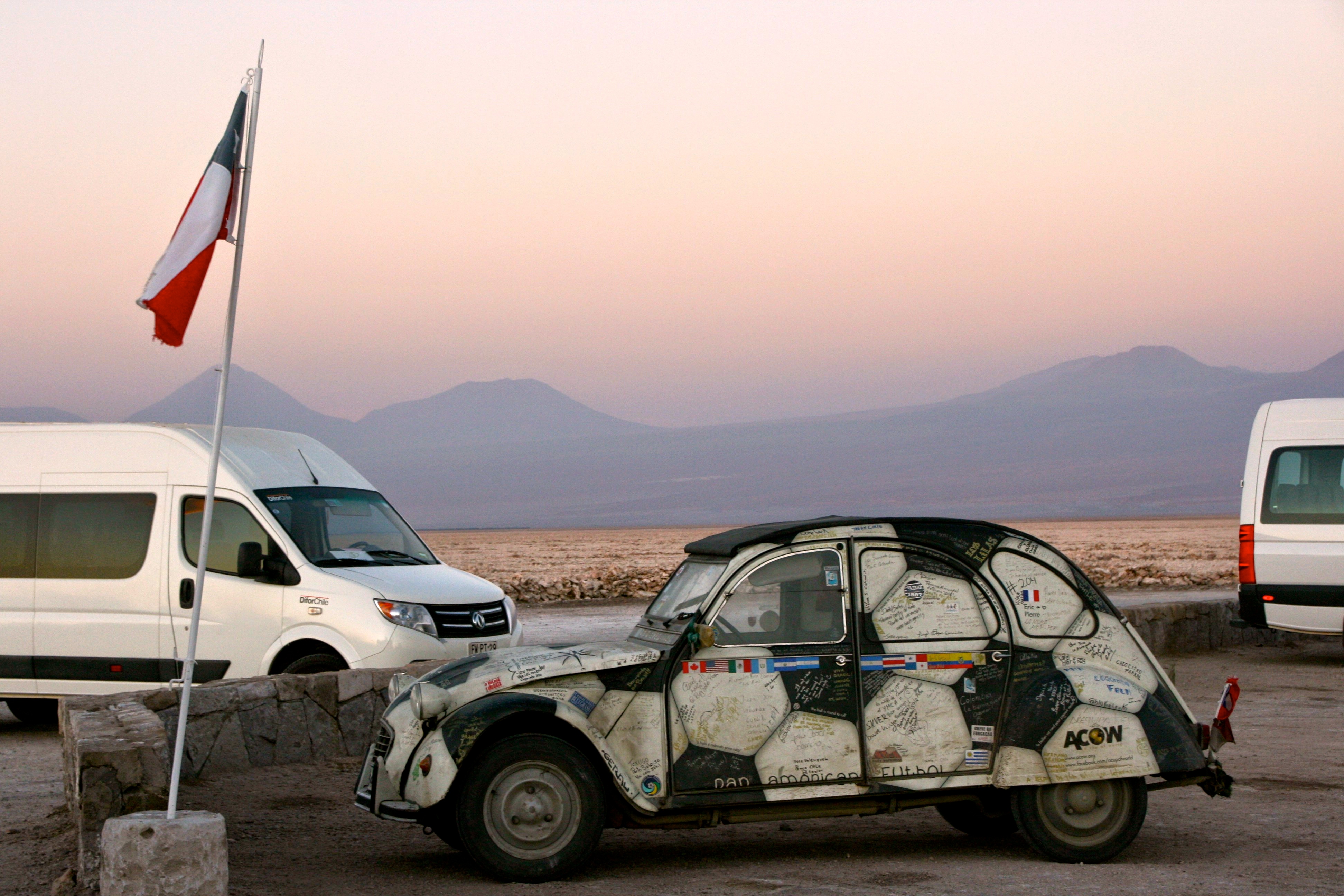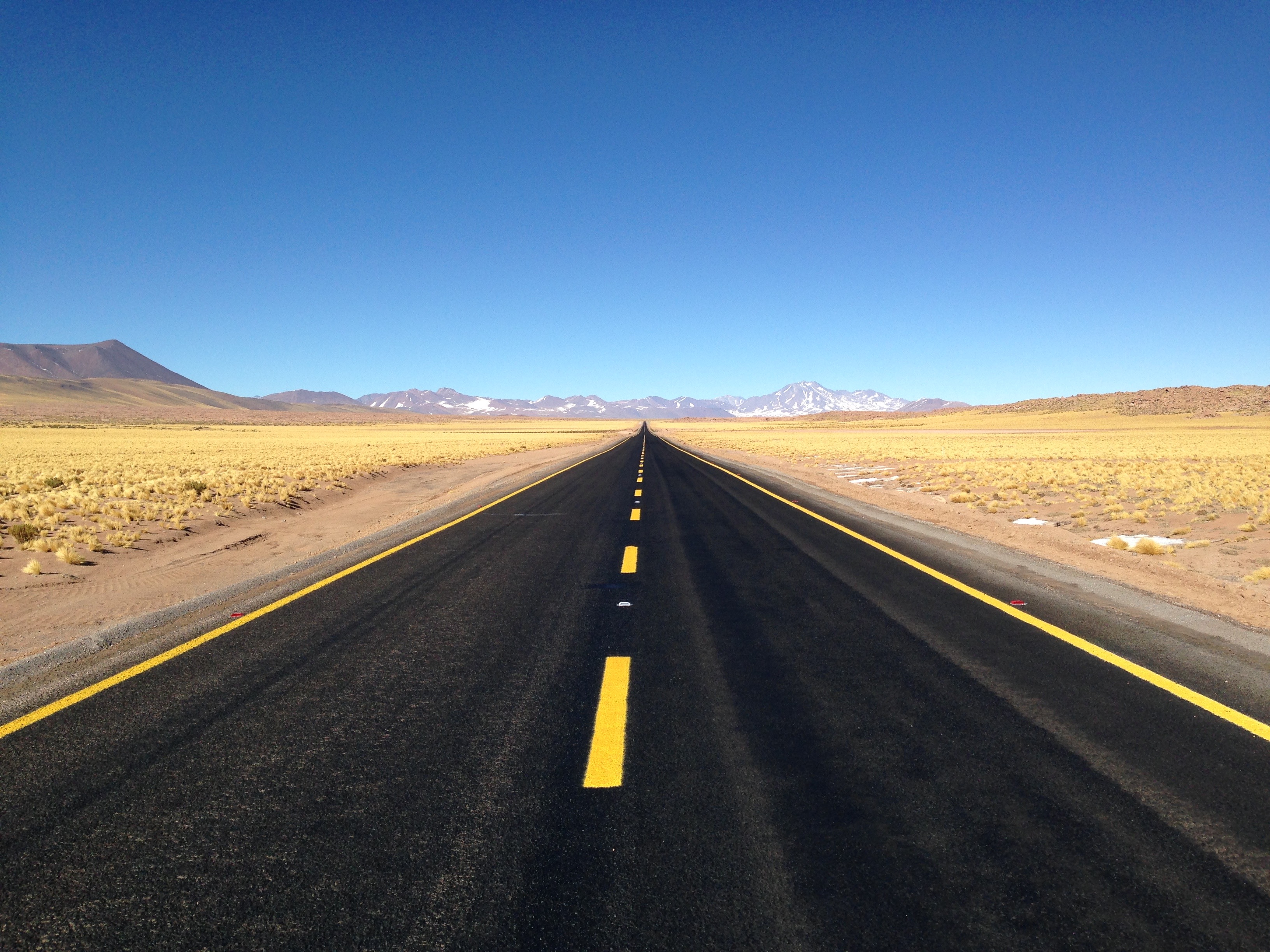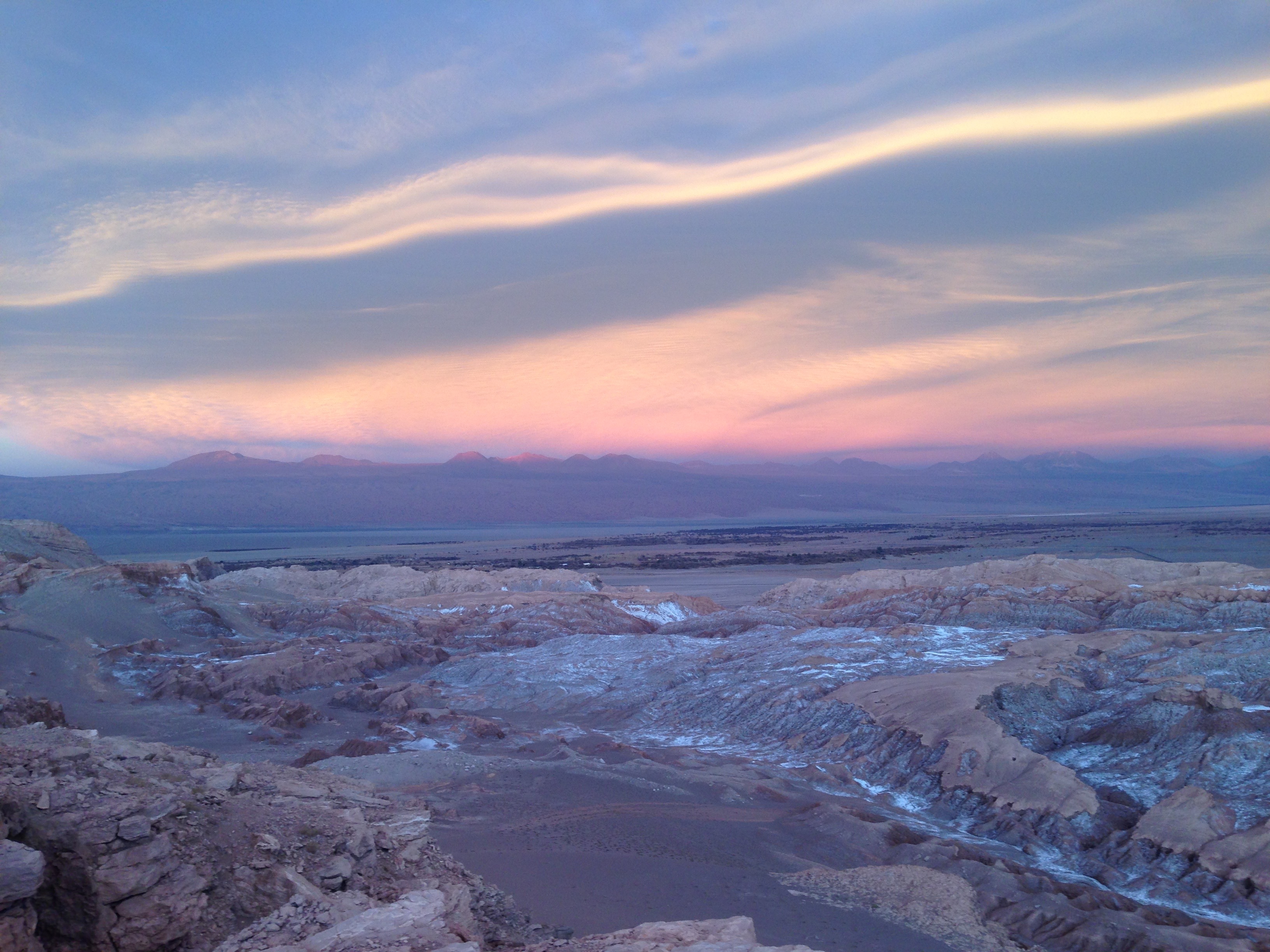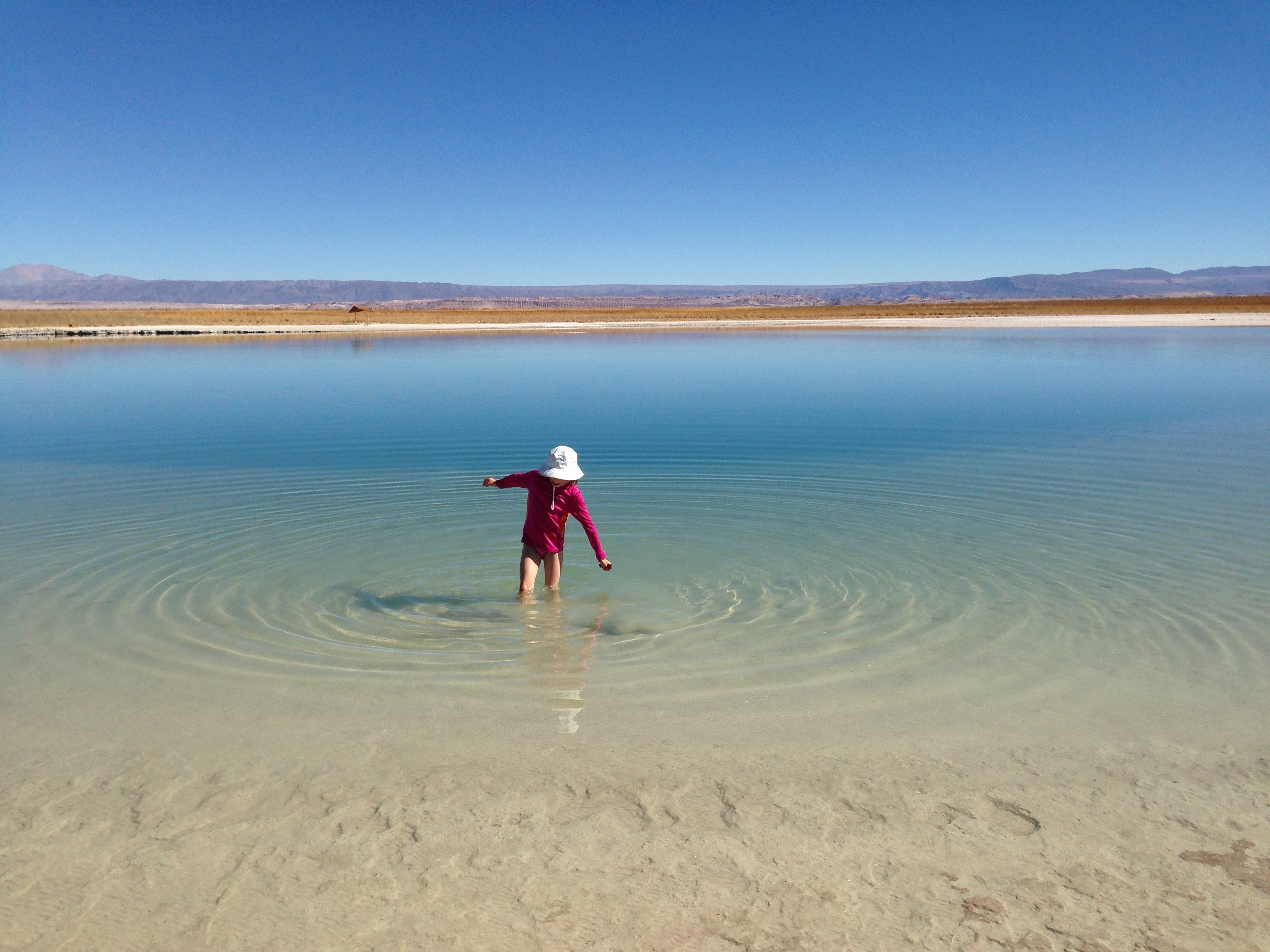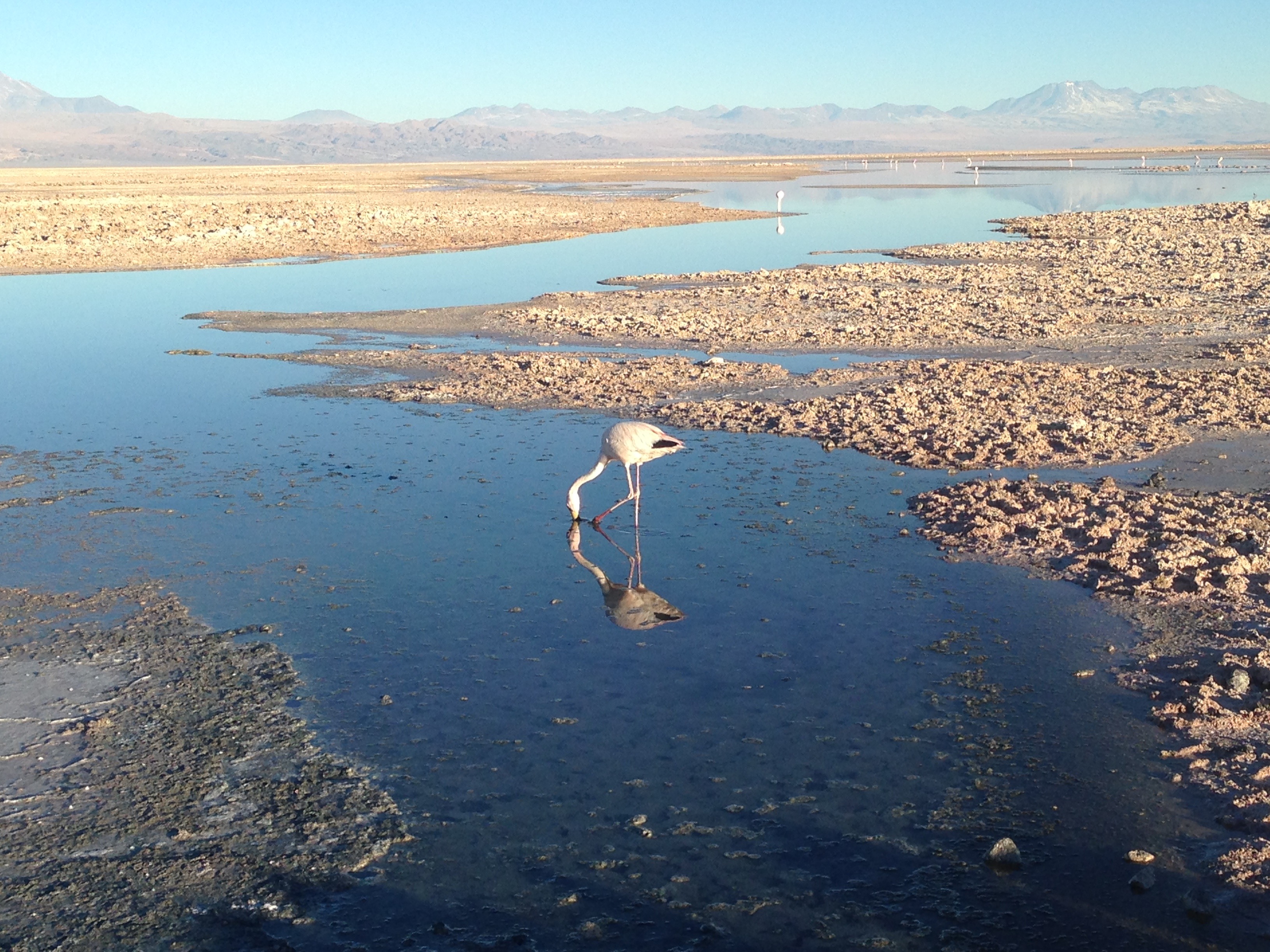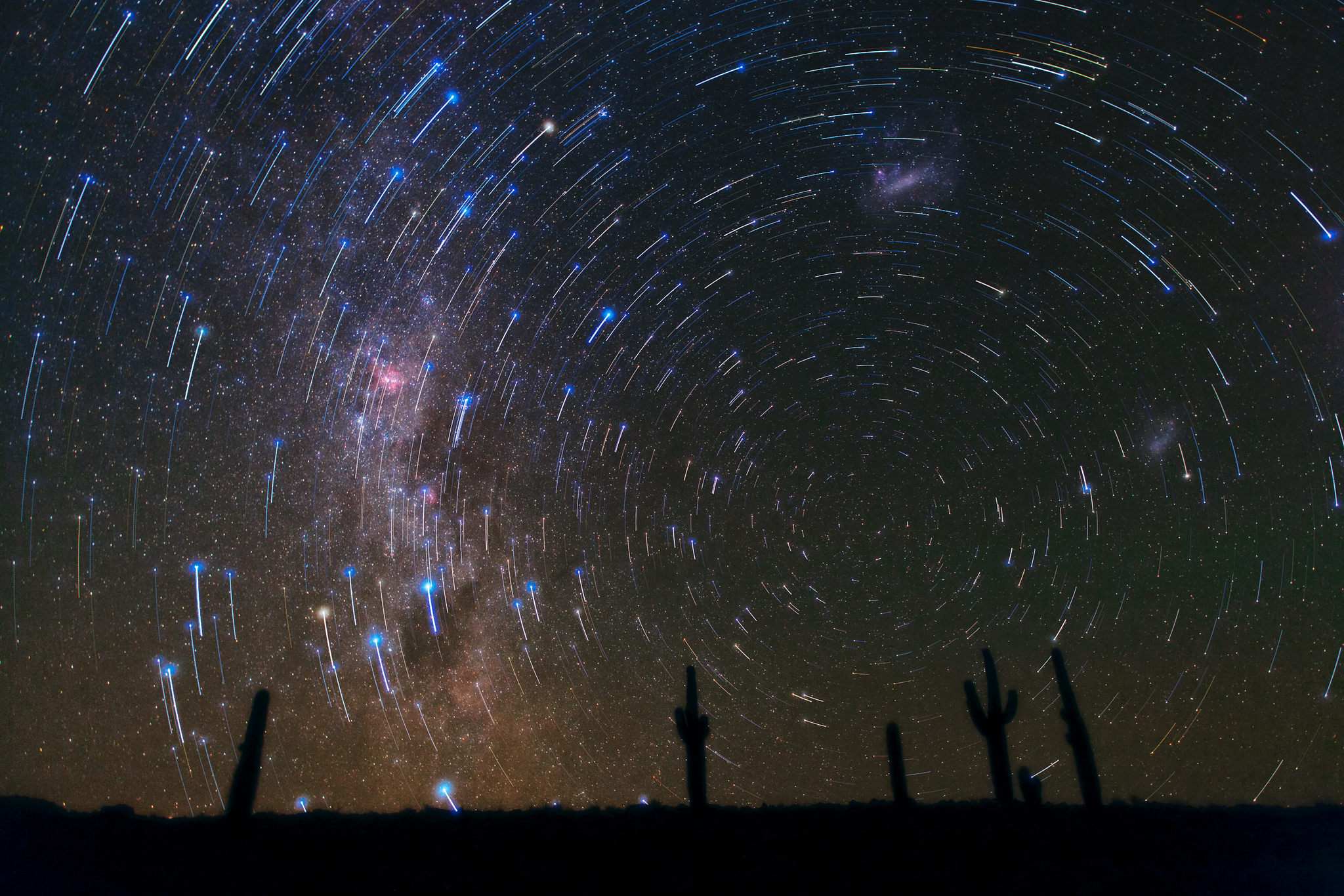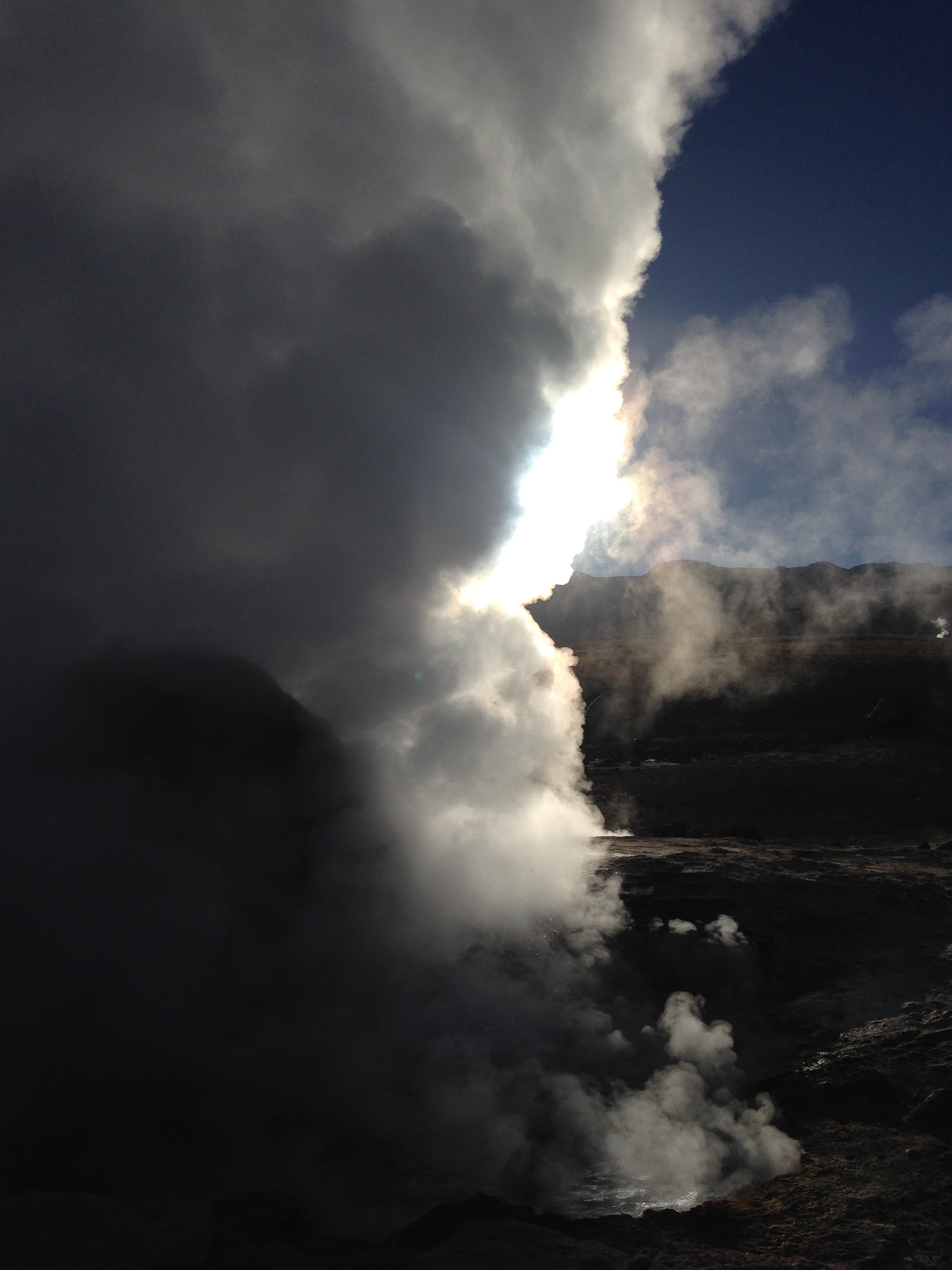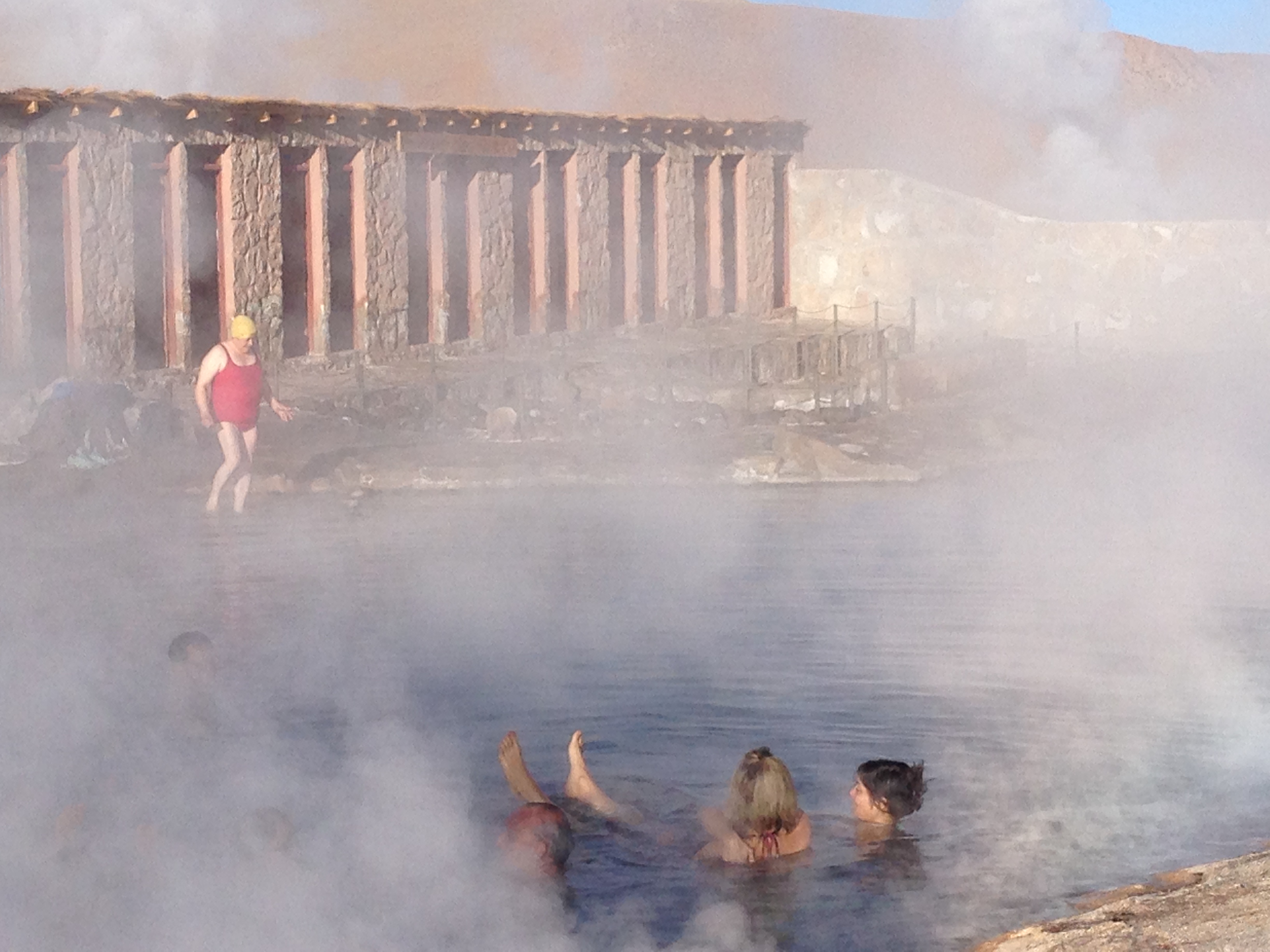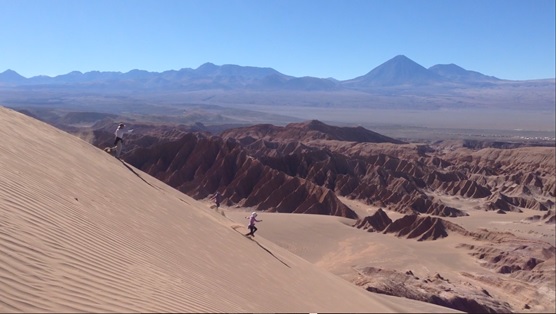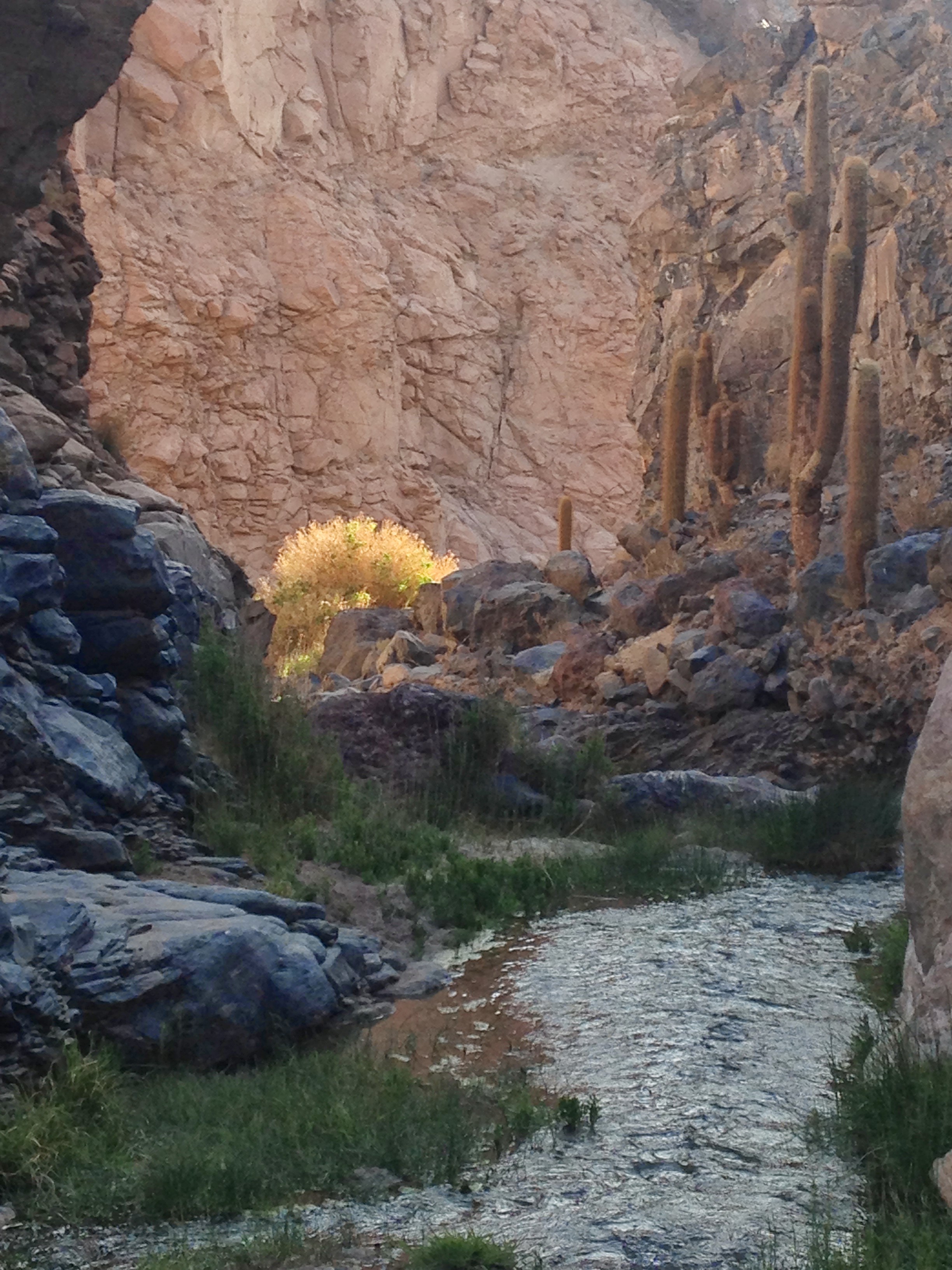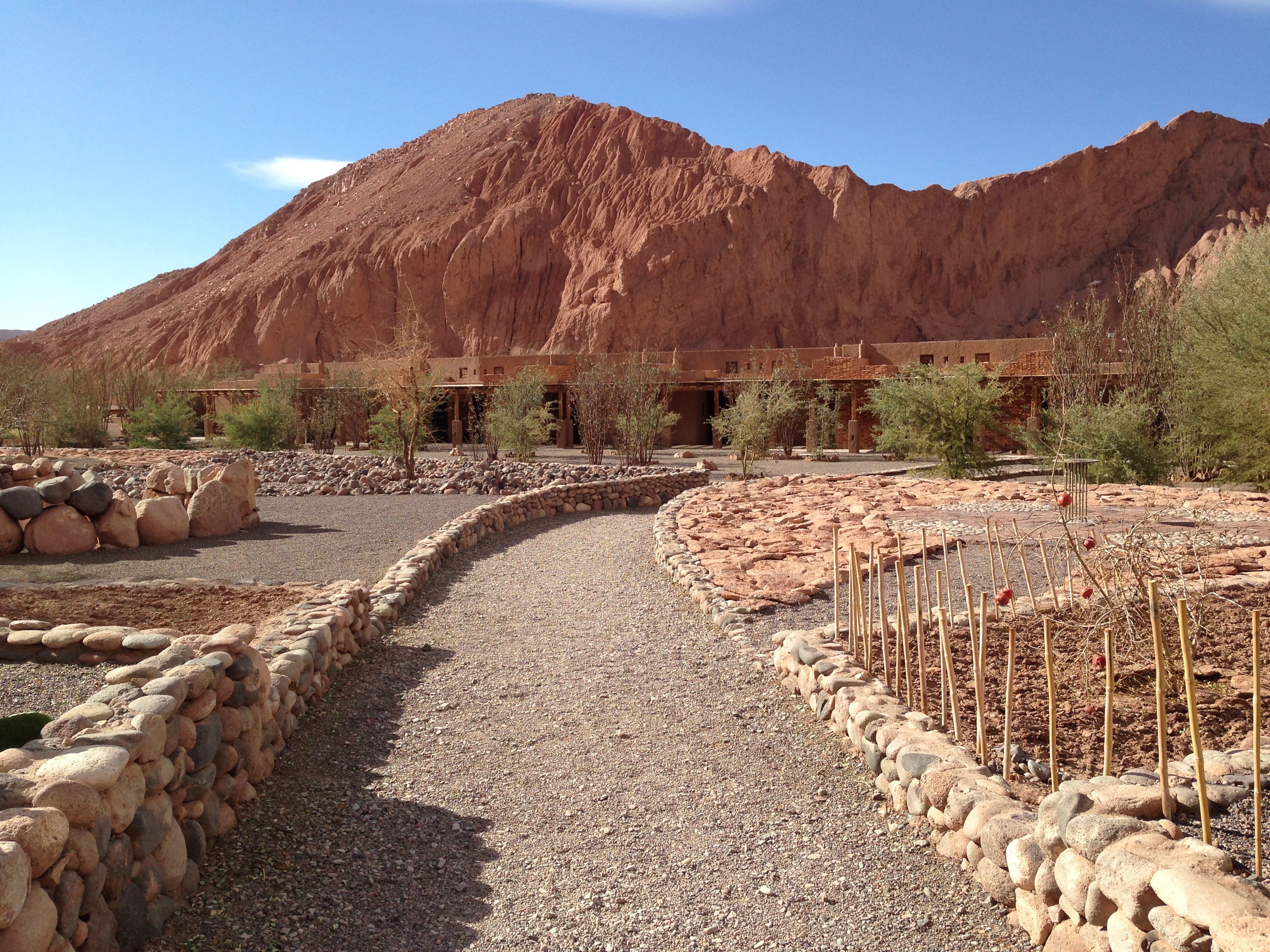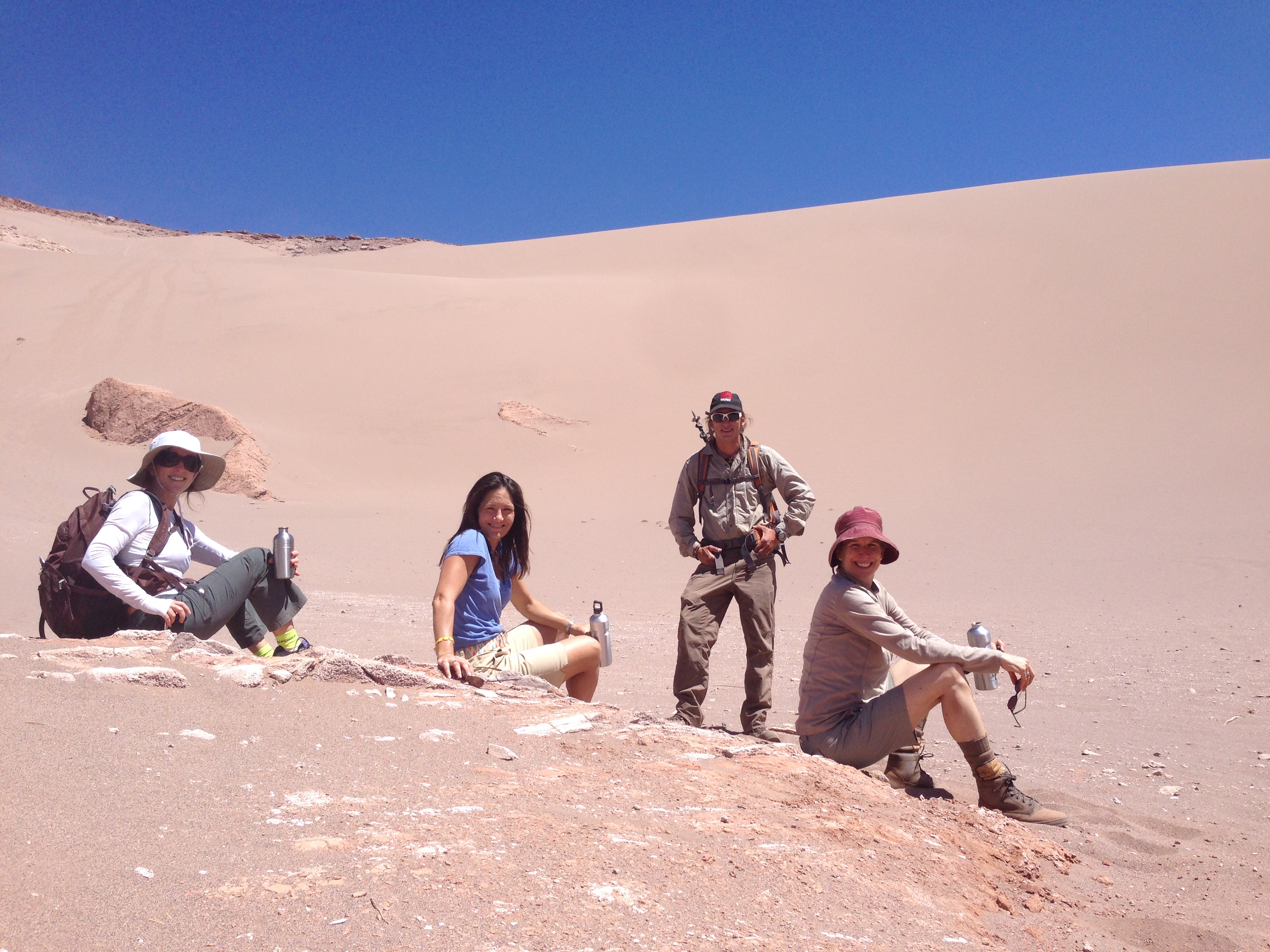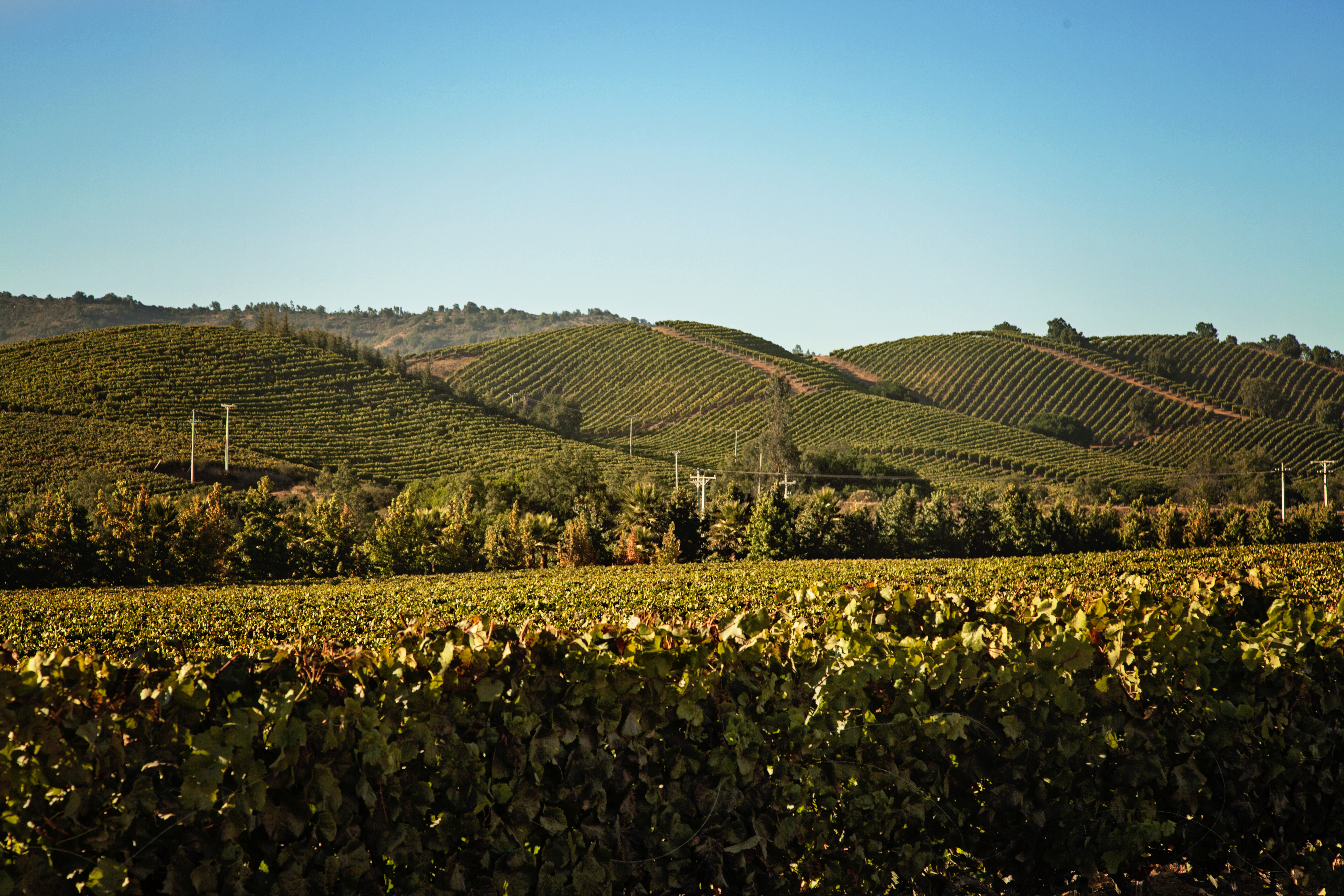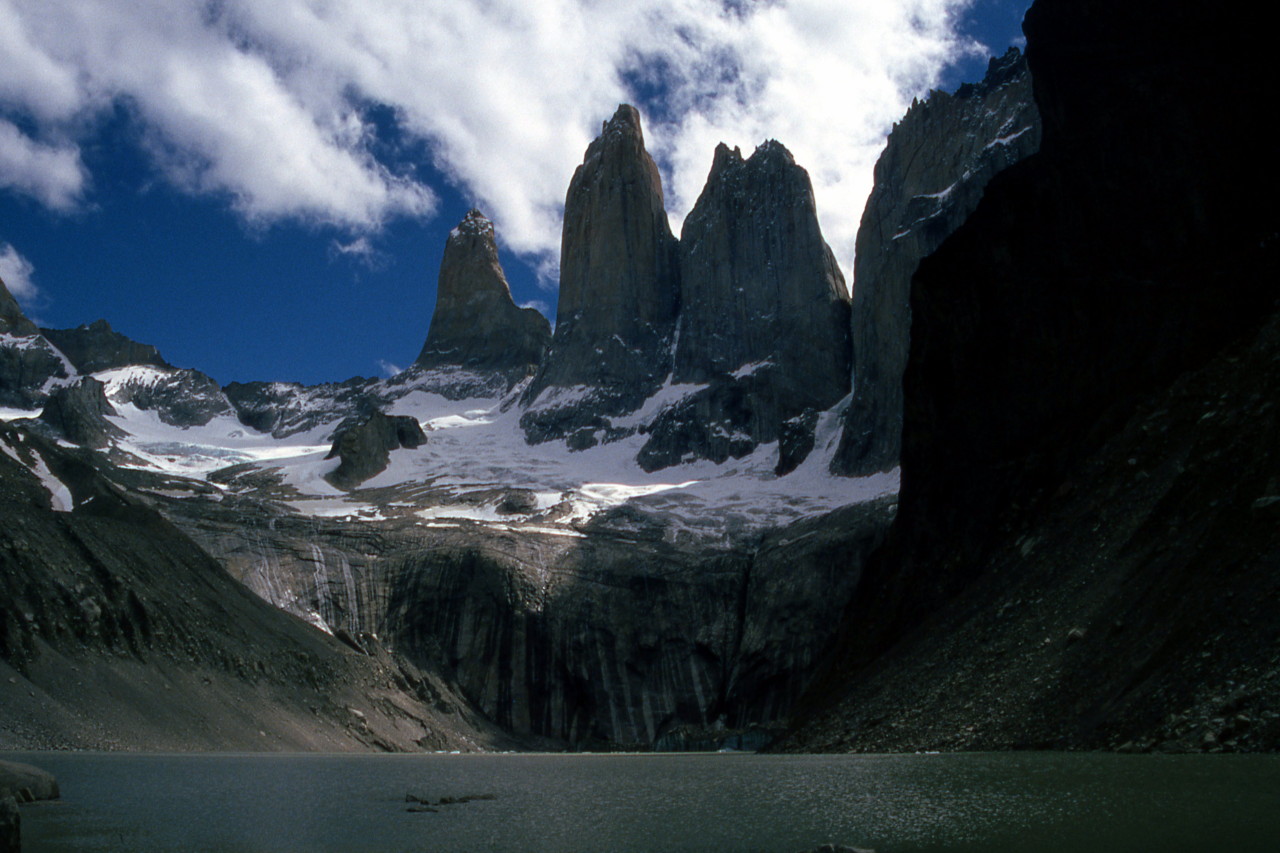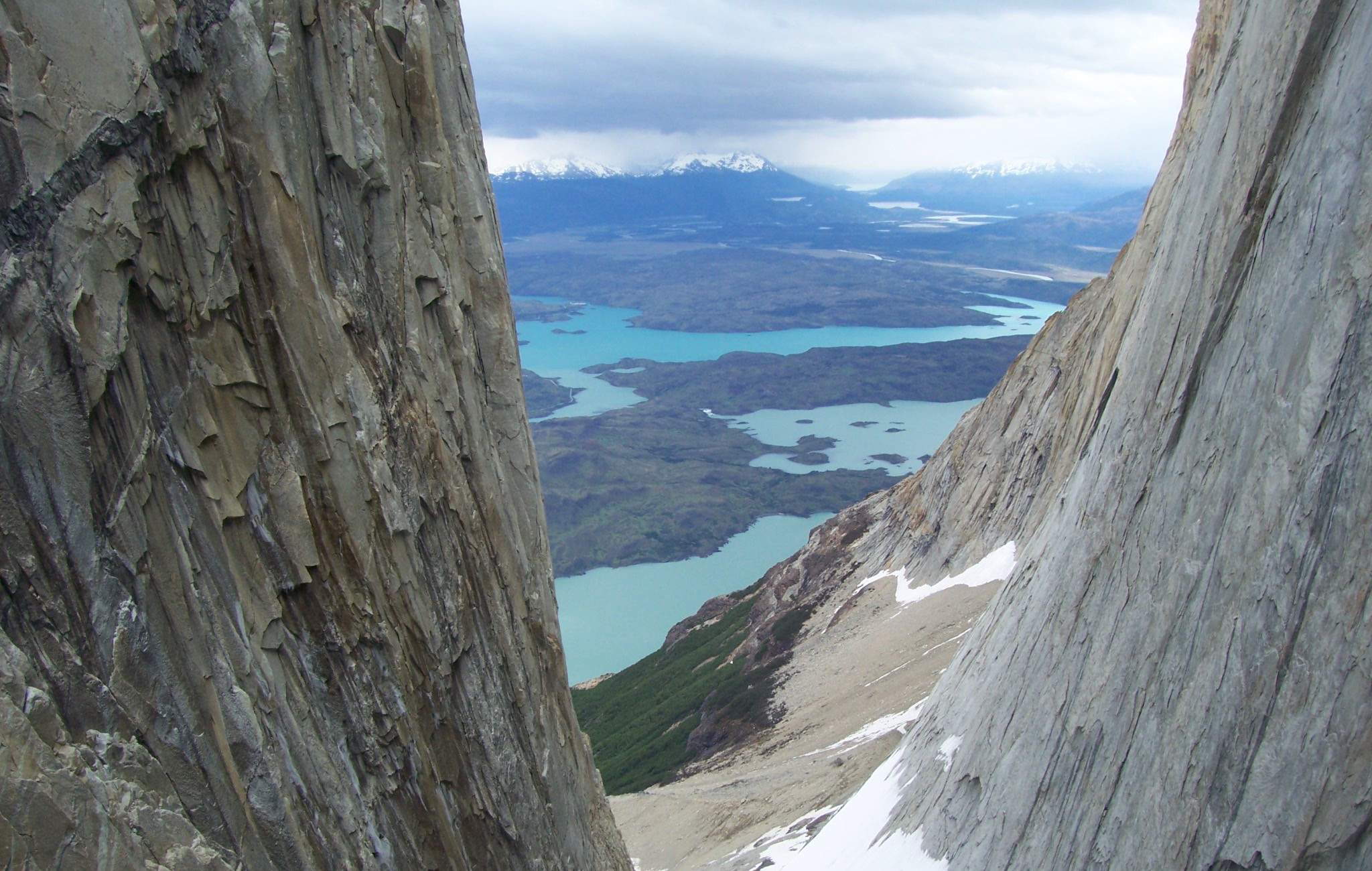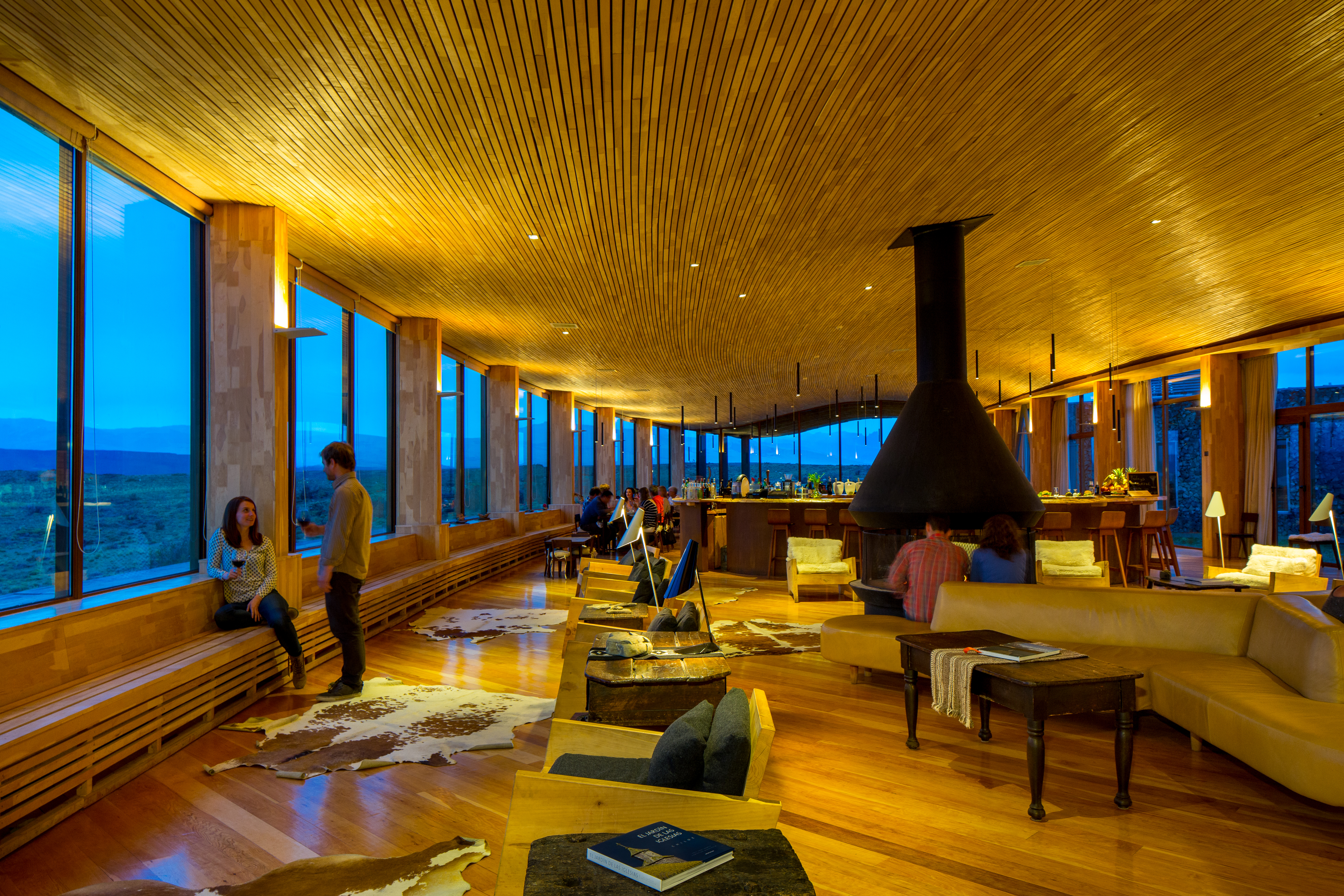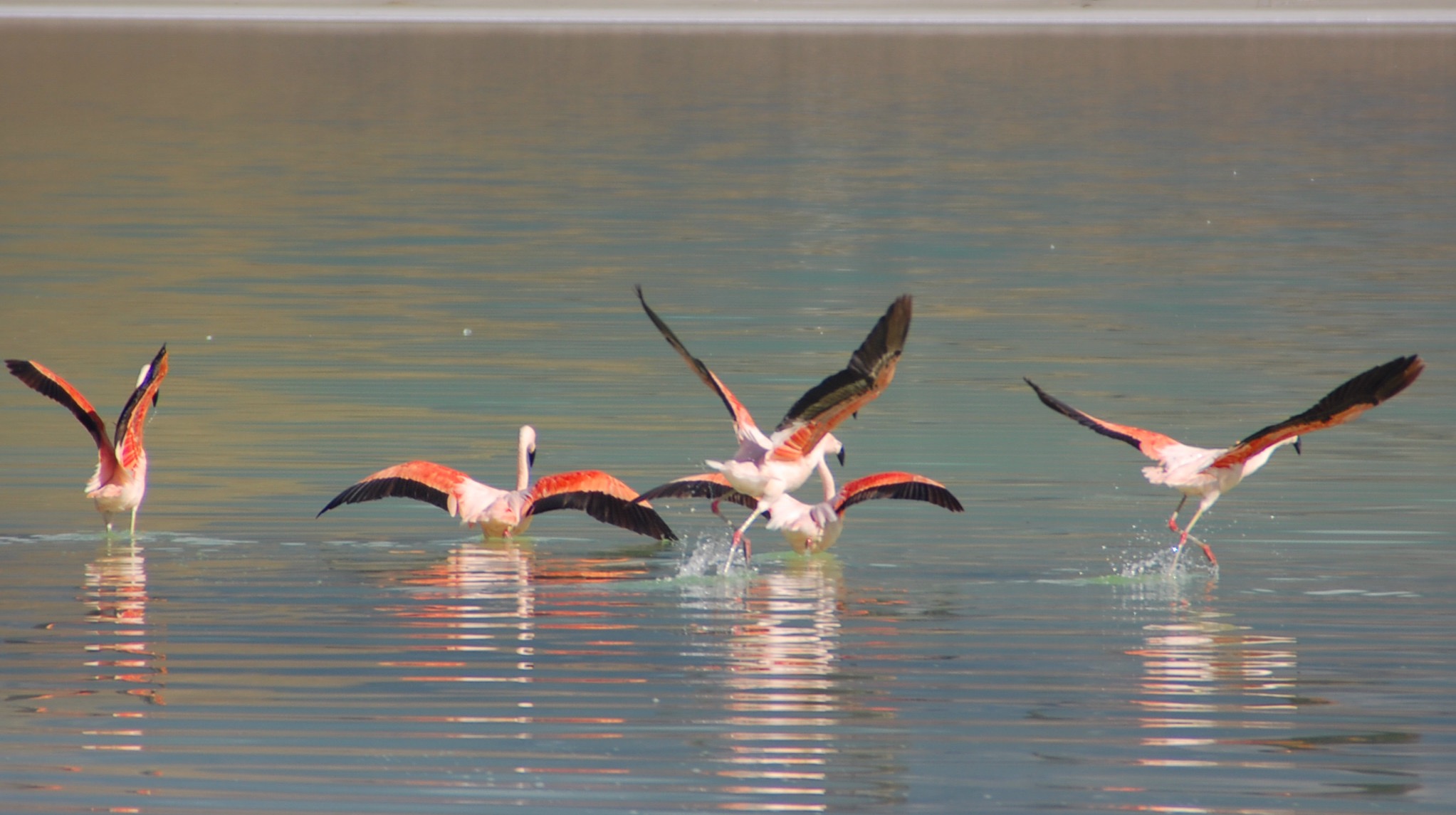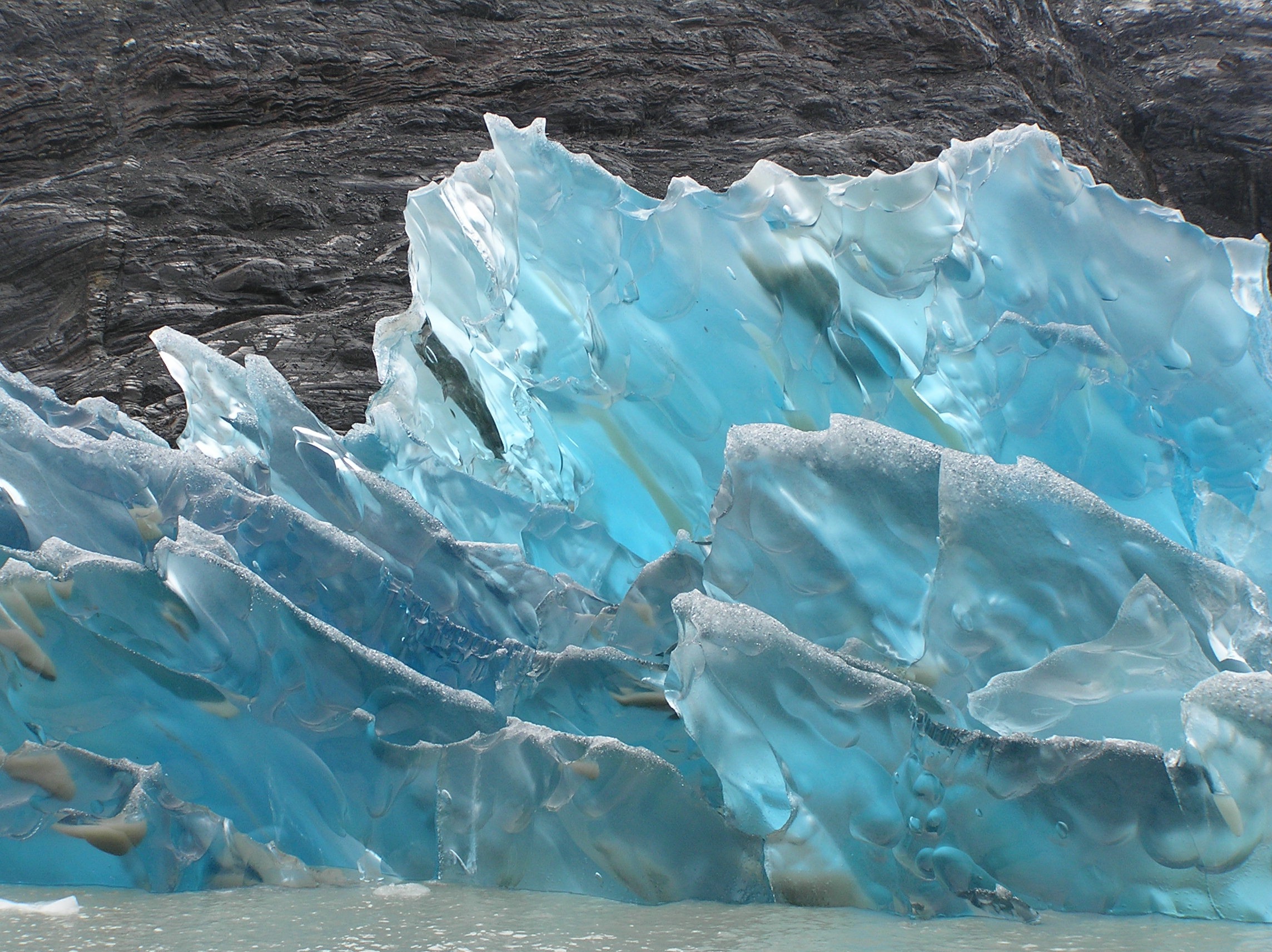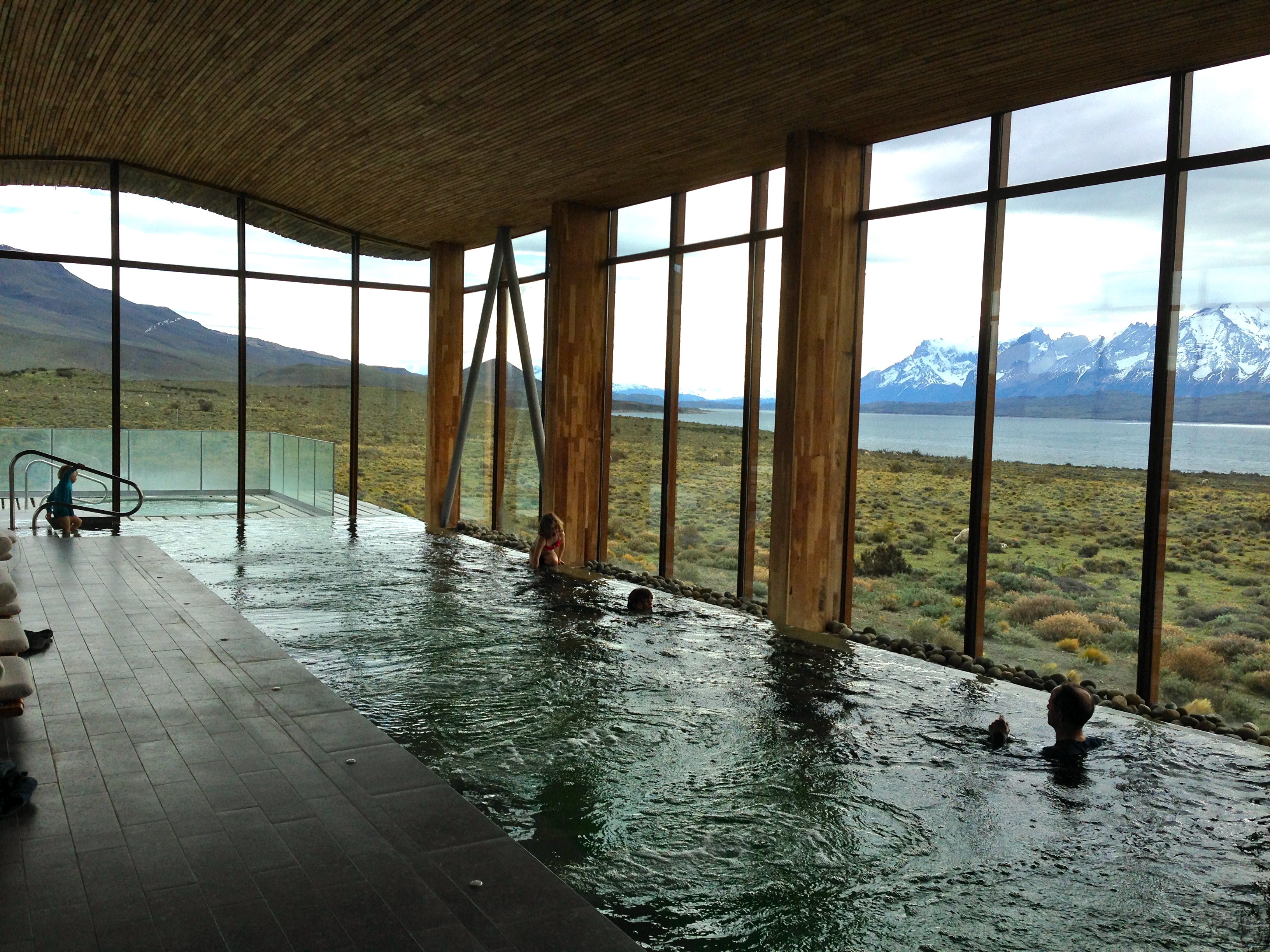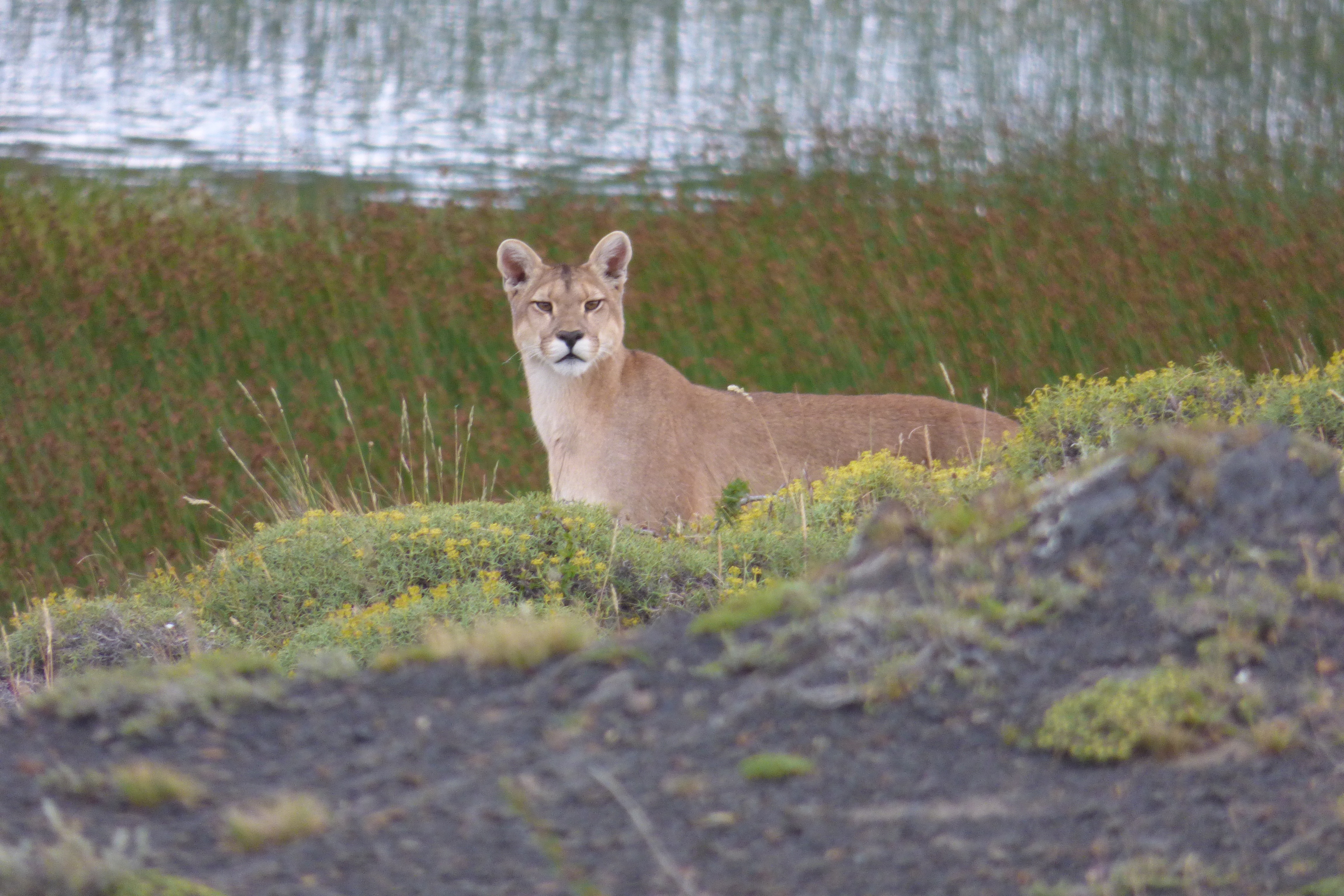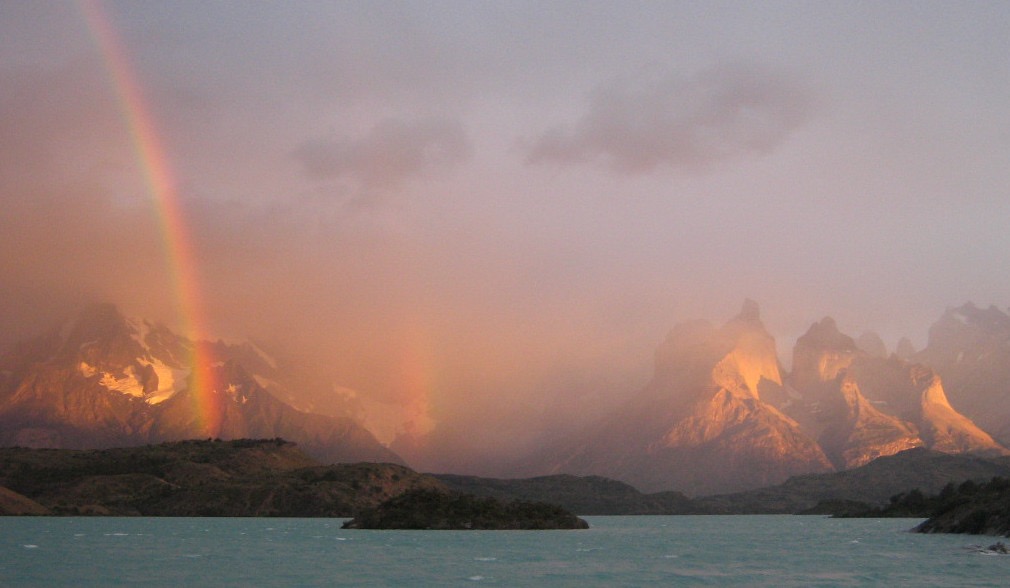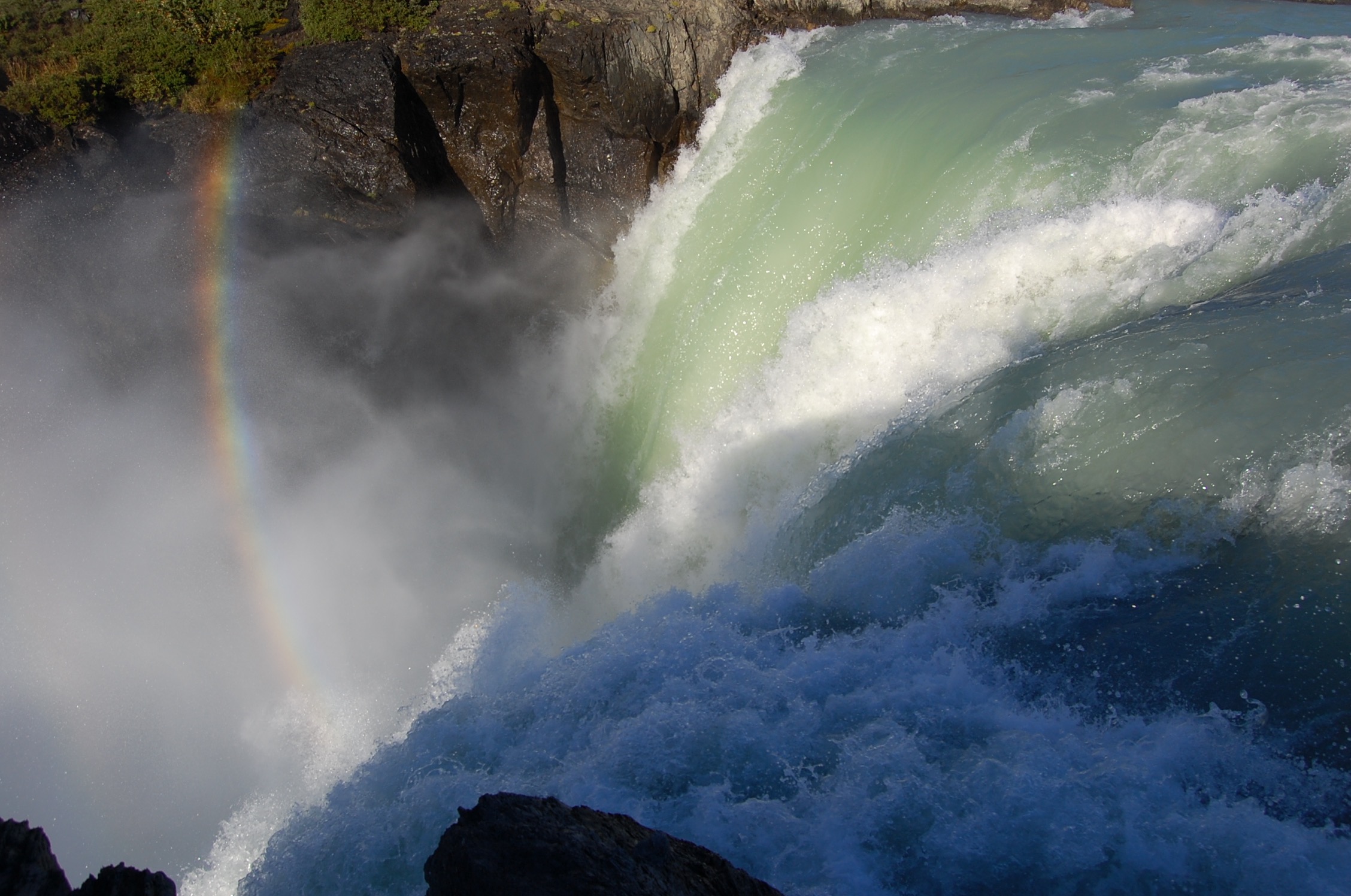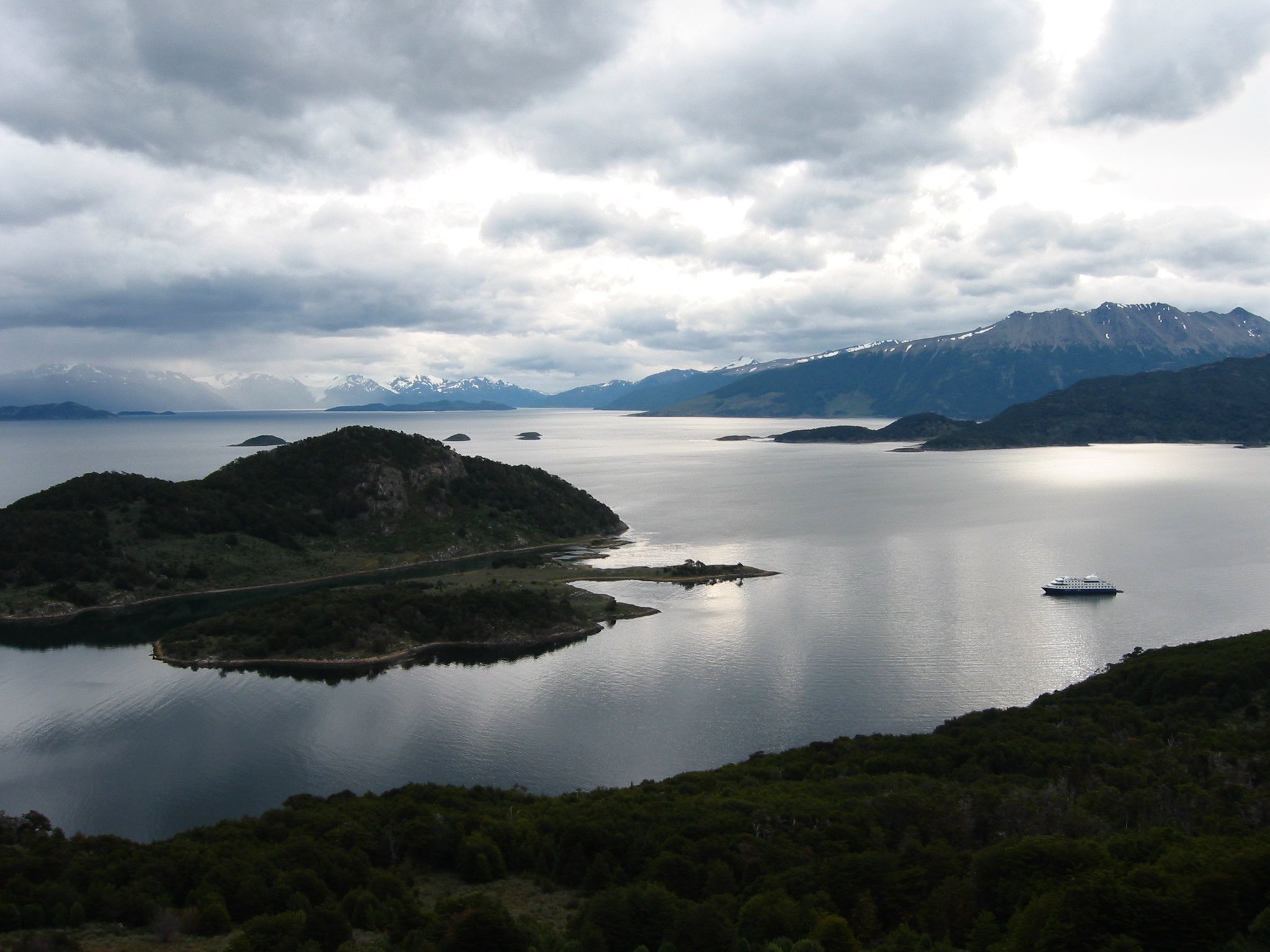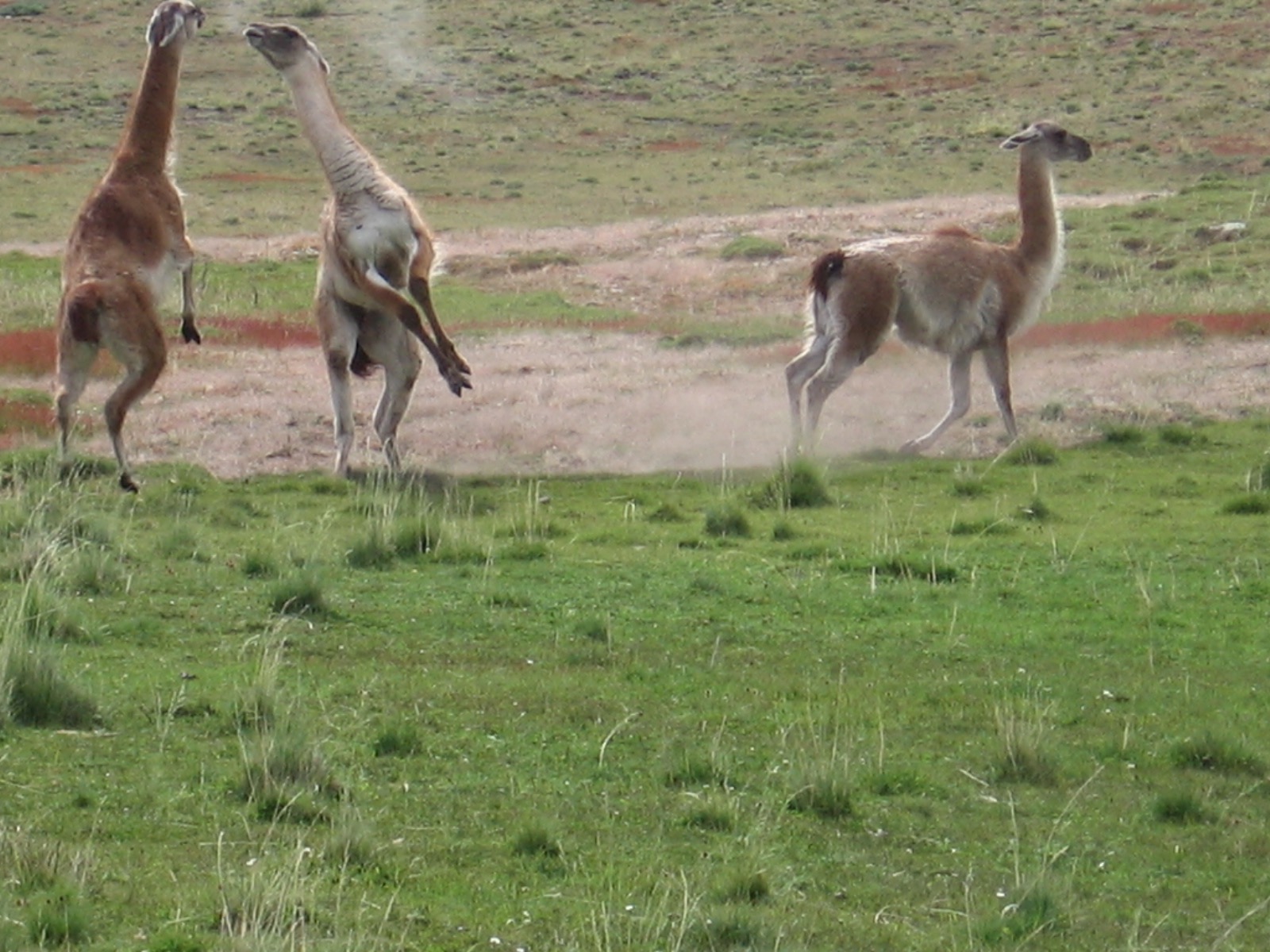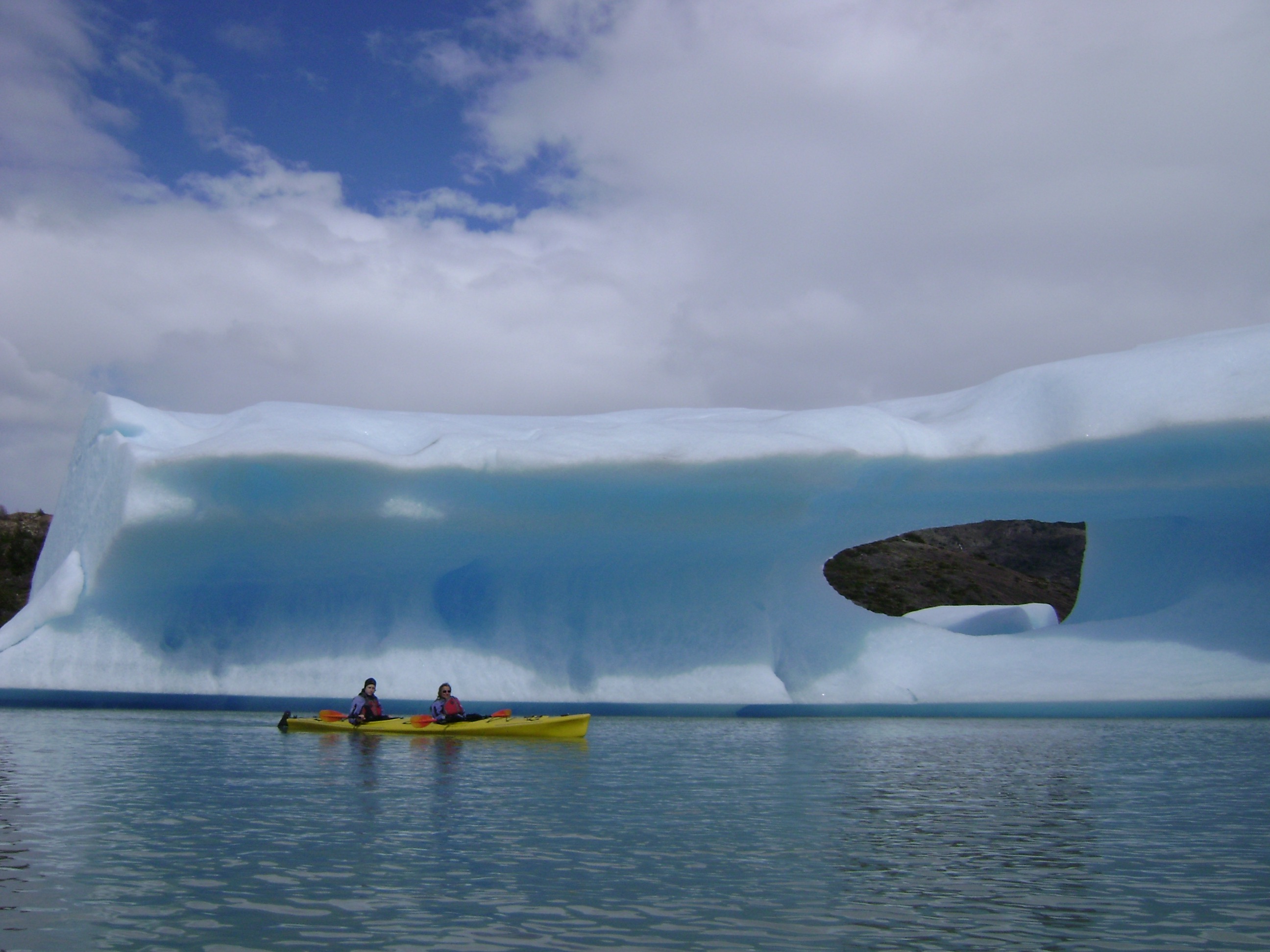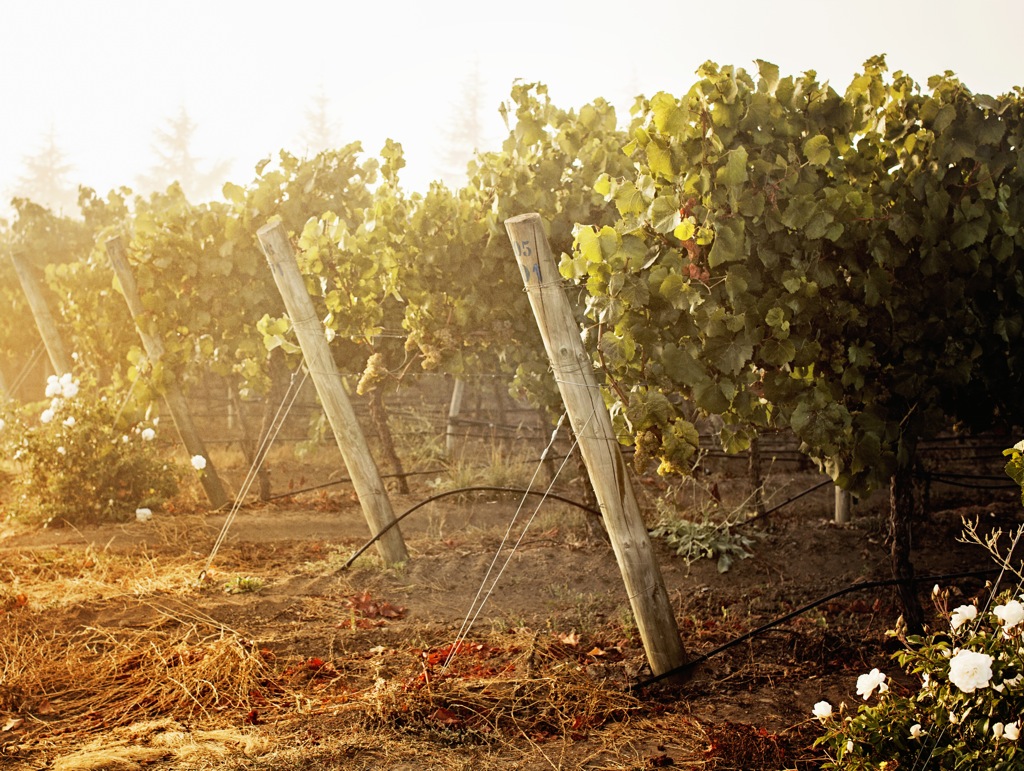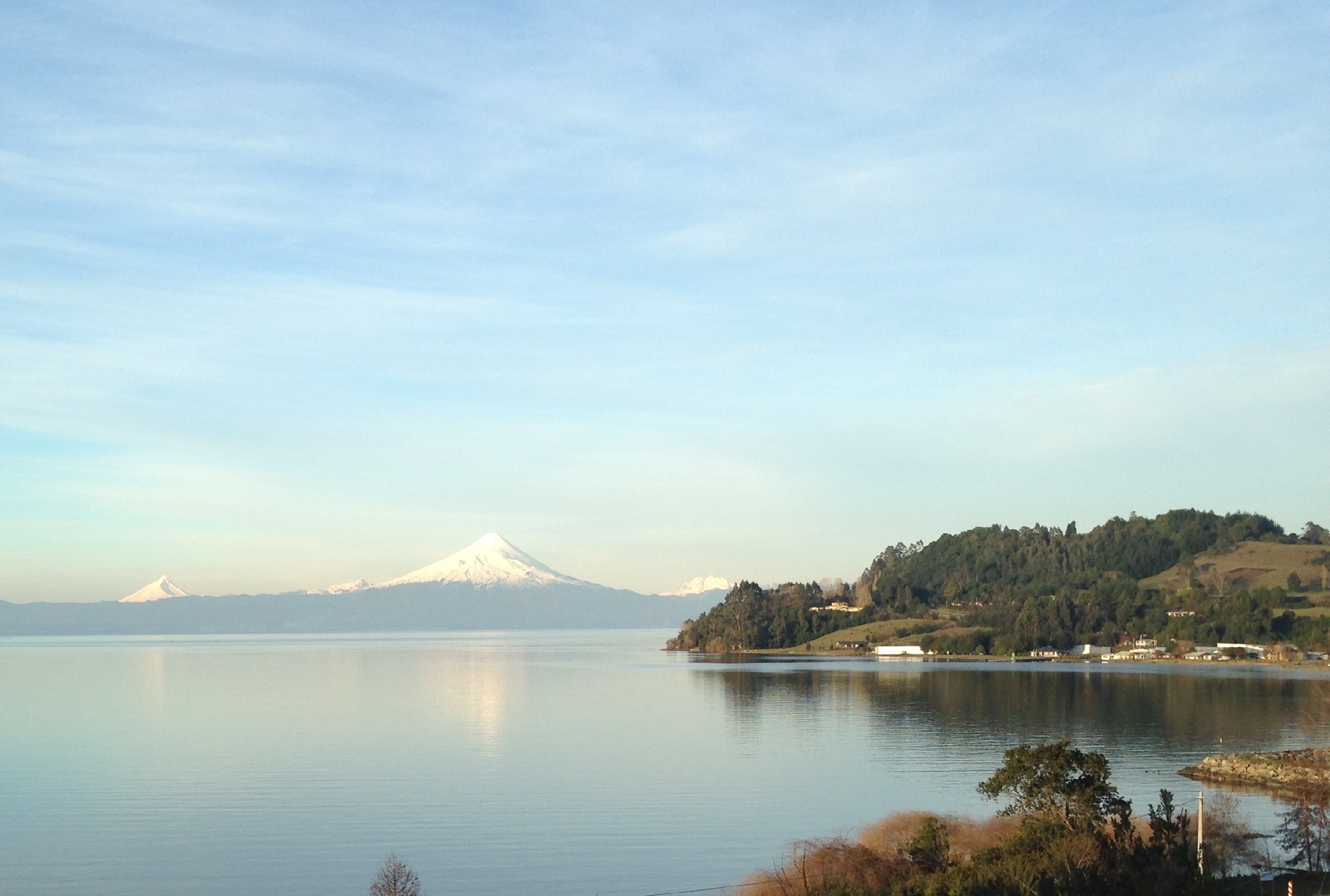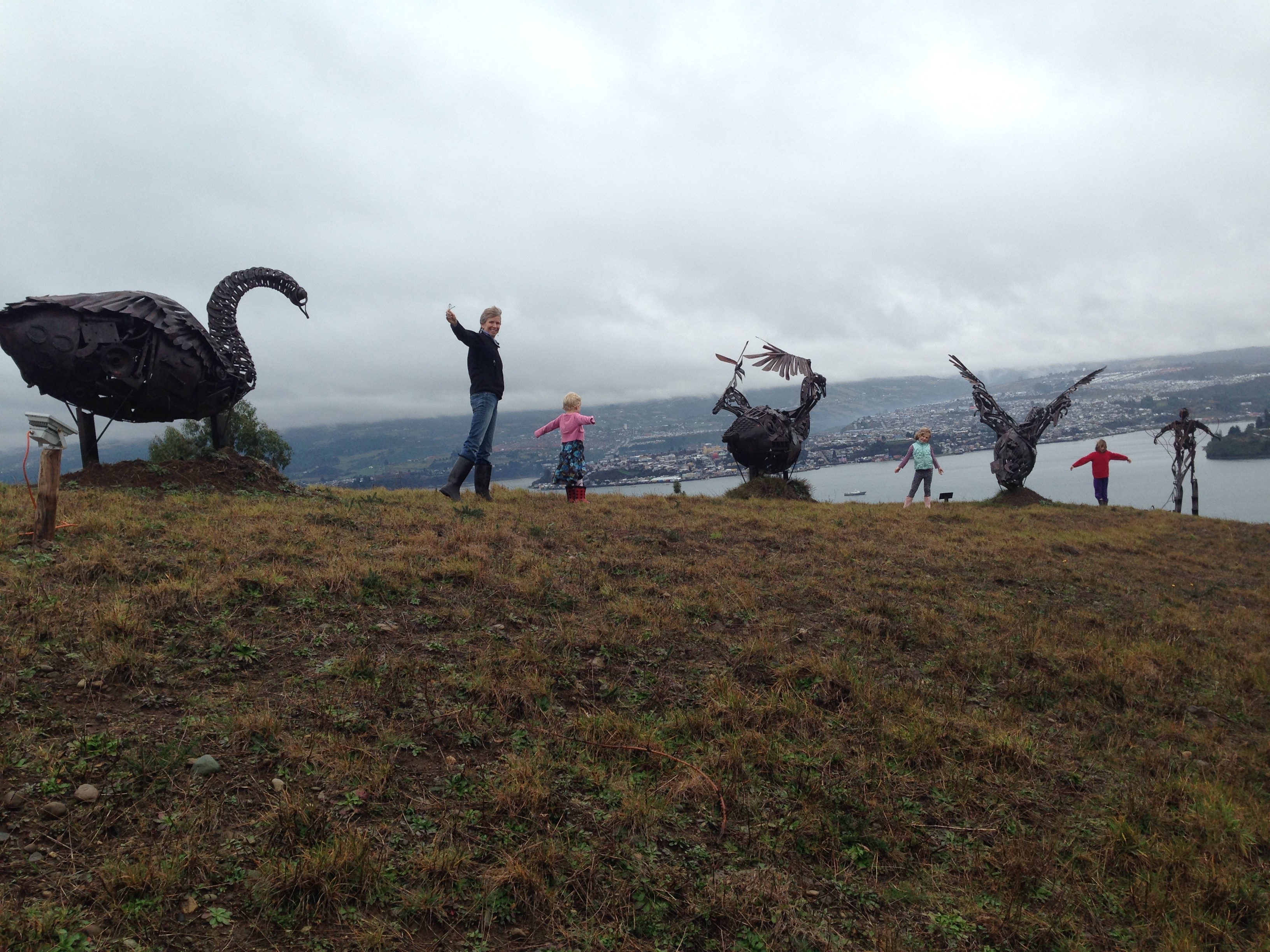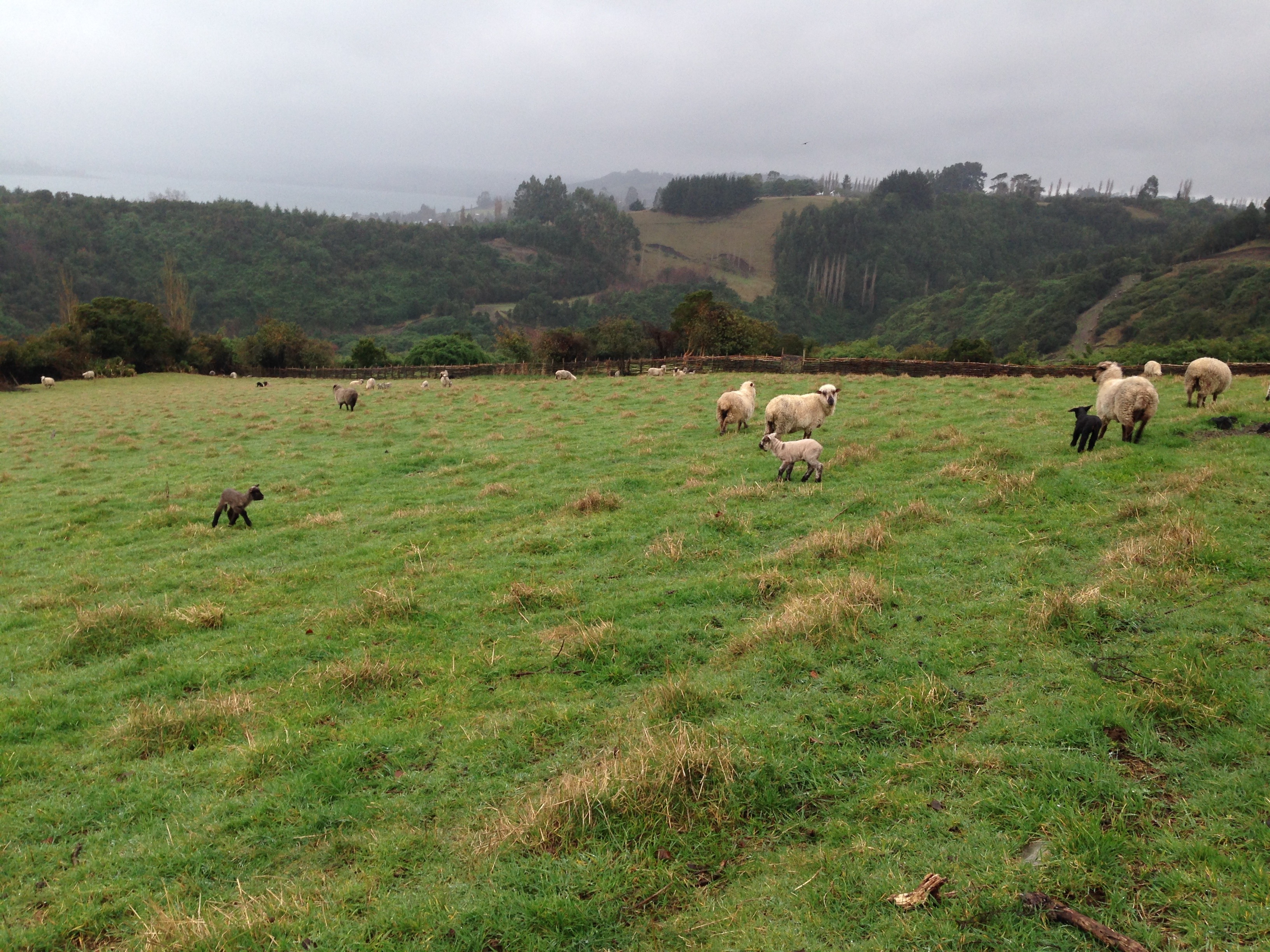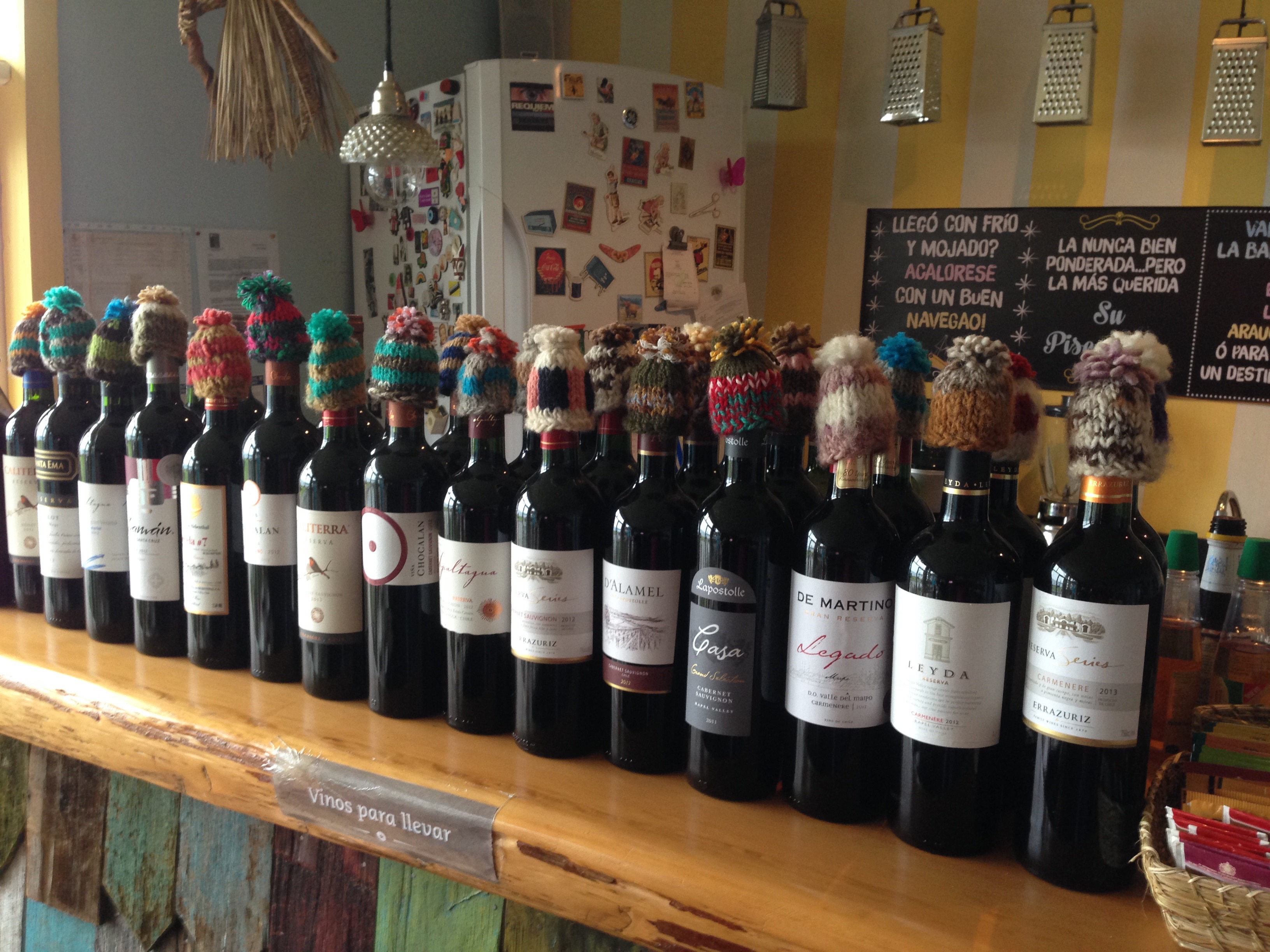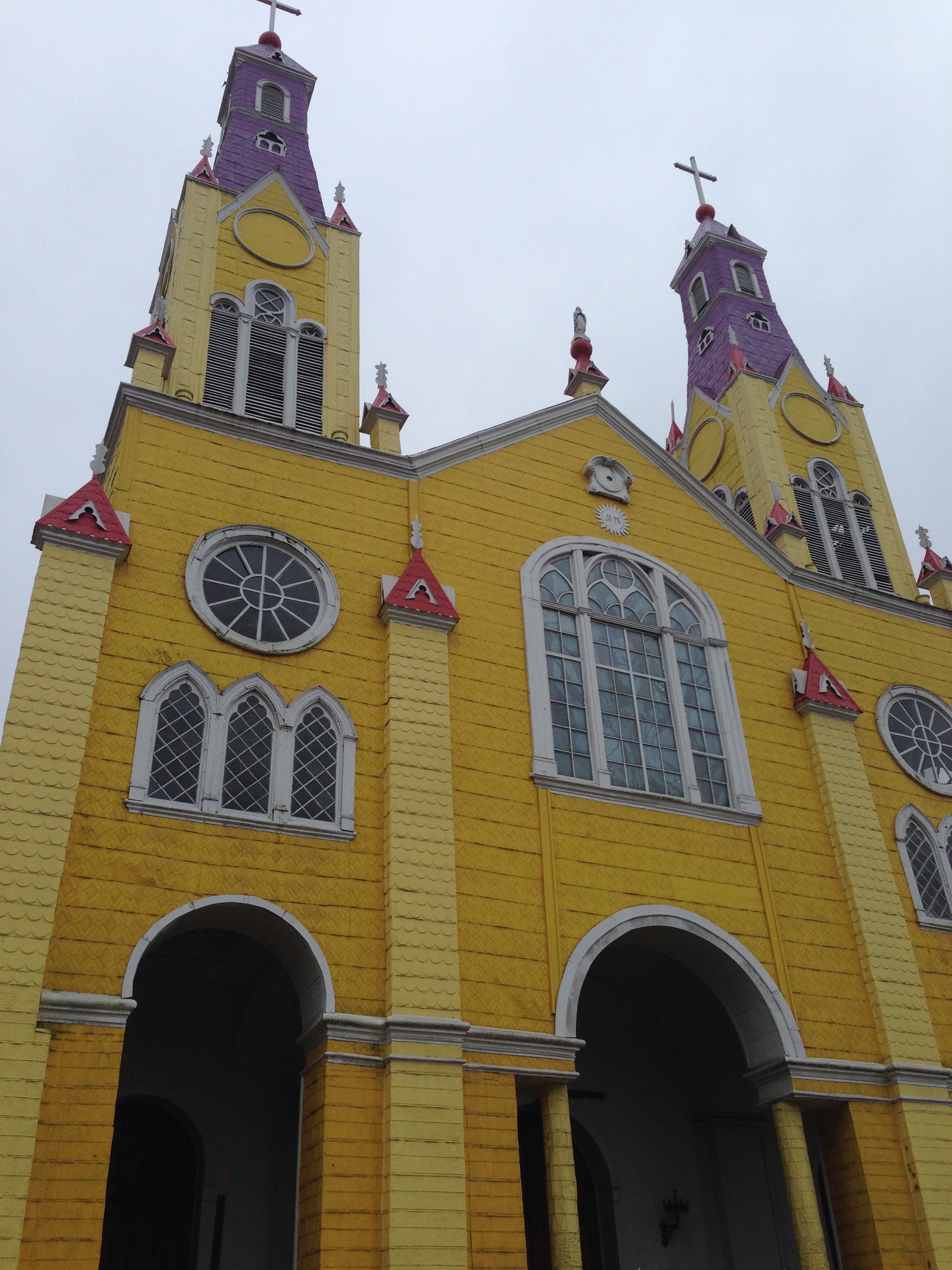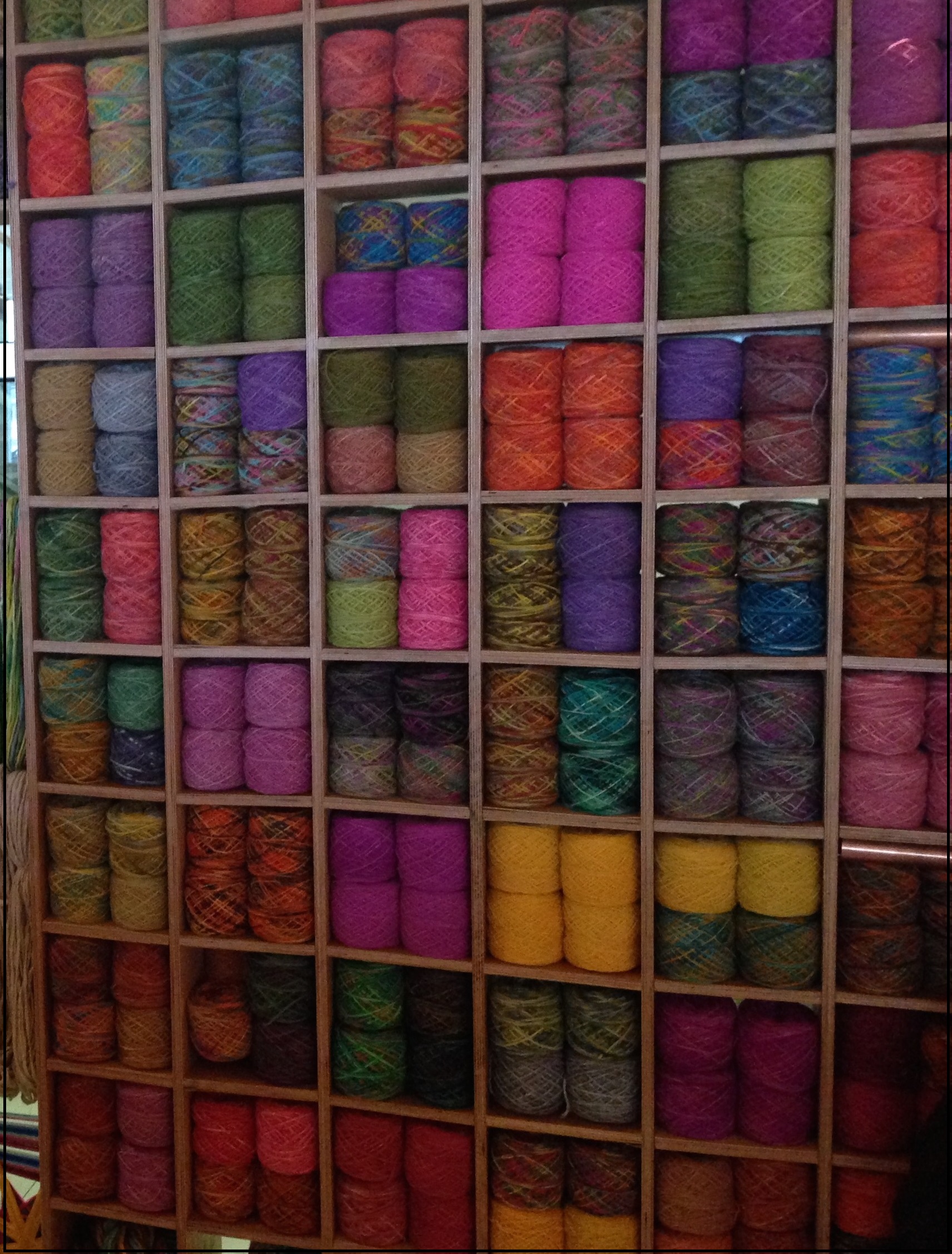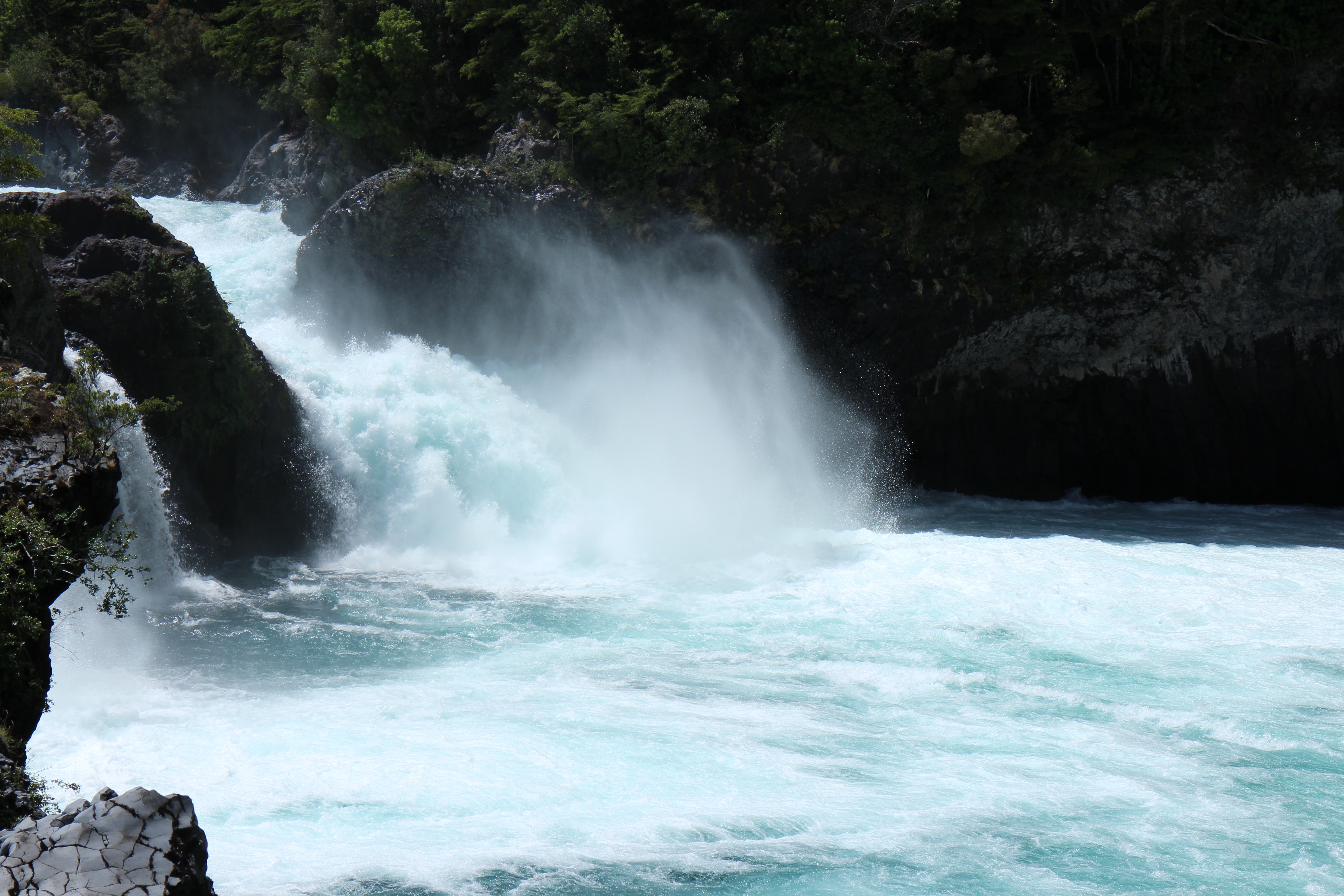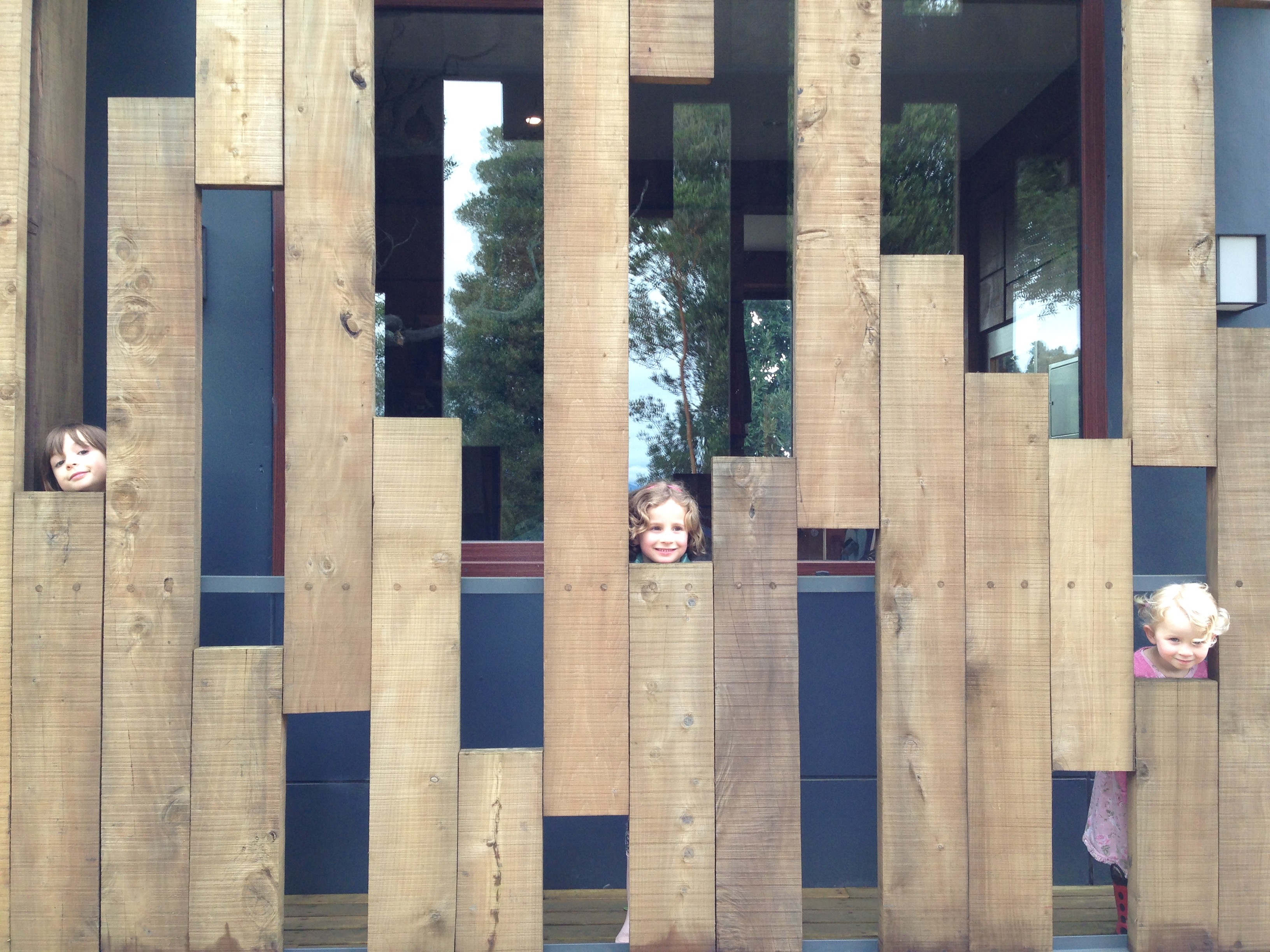Blog
A Room with a View

We can hardly believe that 2018 marks our 20th anniversary as a winery. Over the years we’ve had lots of thrilling moments and countless “firsts” – planting the first vines, picking the first grapes, hiring our first winemaker, transitioning to organic farming – the list goes on and on. We’ve made mistakes along the way and learned a lot from them. Our focus has always been on trying to make the best wine we could. So much so that we weren’t always thinking about other aspects of owning a winery. Such as hosting visitors.
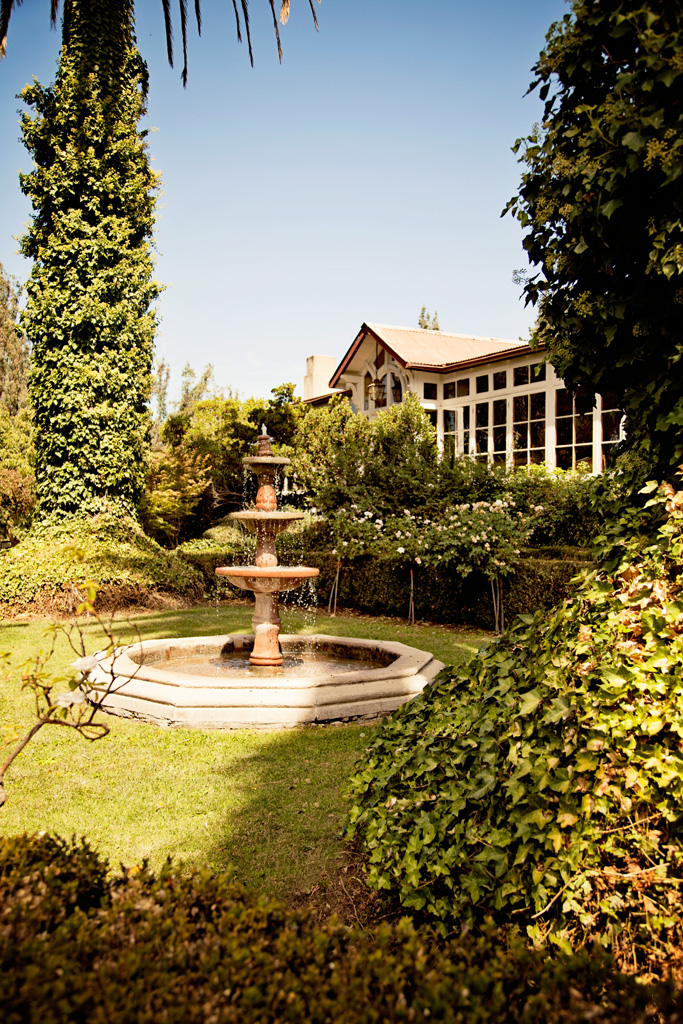
Yet that is increasingly what we’ve been doing for the past eight years or so, ever since our first “guest” arrived. We laugh about it now, but we we were pretty shocked that sunny afternoon in 2010 when friends of a friend dropped by to see the winery. My dad and I were eating lunch at the house when something caught his eye outside. He went over to the window, then came back and whispered “Courtney – there's someone in garden. Does anyone know them?”
Since then, we’ve been incredibly fortunate to welcome many of you to our farm. With regular flights from the US, as well as improvements in GPS, it continues to get easier to stop by and see us – whether you’re on the way home from vacationing in Patagonia or the Lake District, or in Santiago for business. We know it’s the wine you’ve been coming for – and we hope we’ve exceeded your expectations in that area – but we must admit, we never really had a “grand plan” for what to do with you when you got here. Truth be told, we’ve been winging it. Which is why we’re incredibly excited to share some news: last May we broke ground on a beautiful new tasting room with a fully-equipped professional kitchen. It’s currently on track to be finished in November.
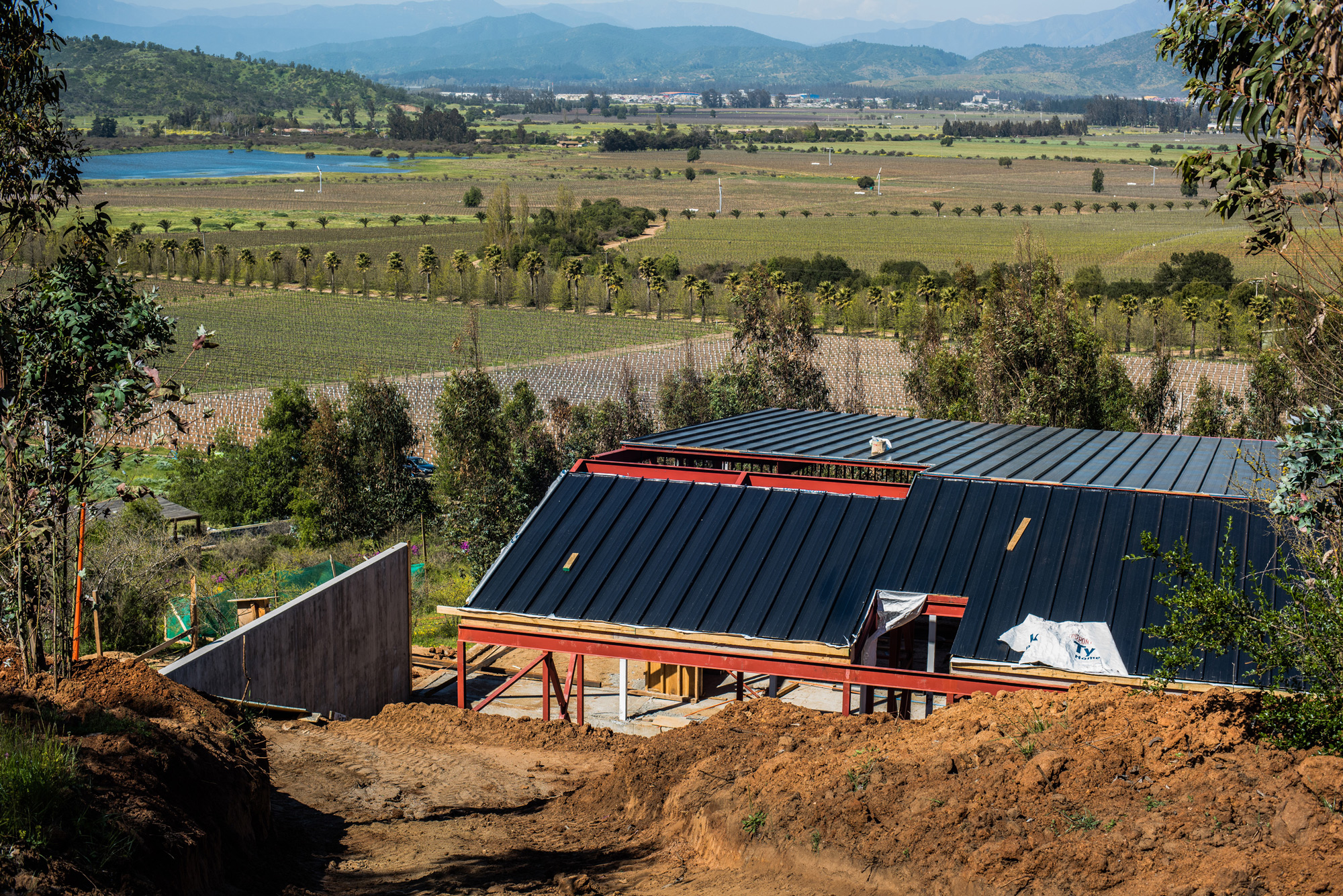
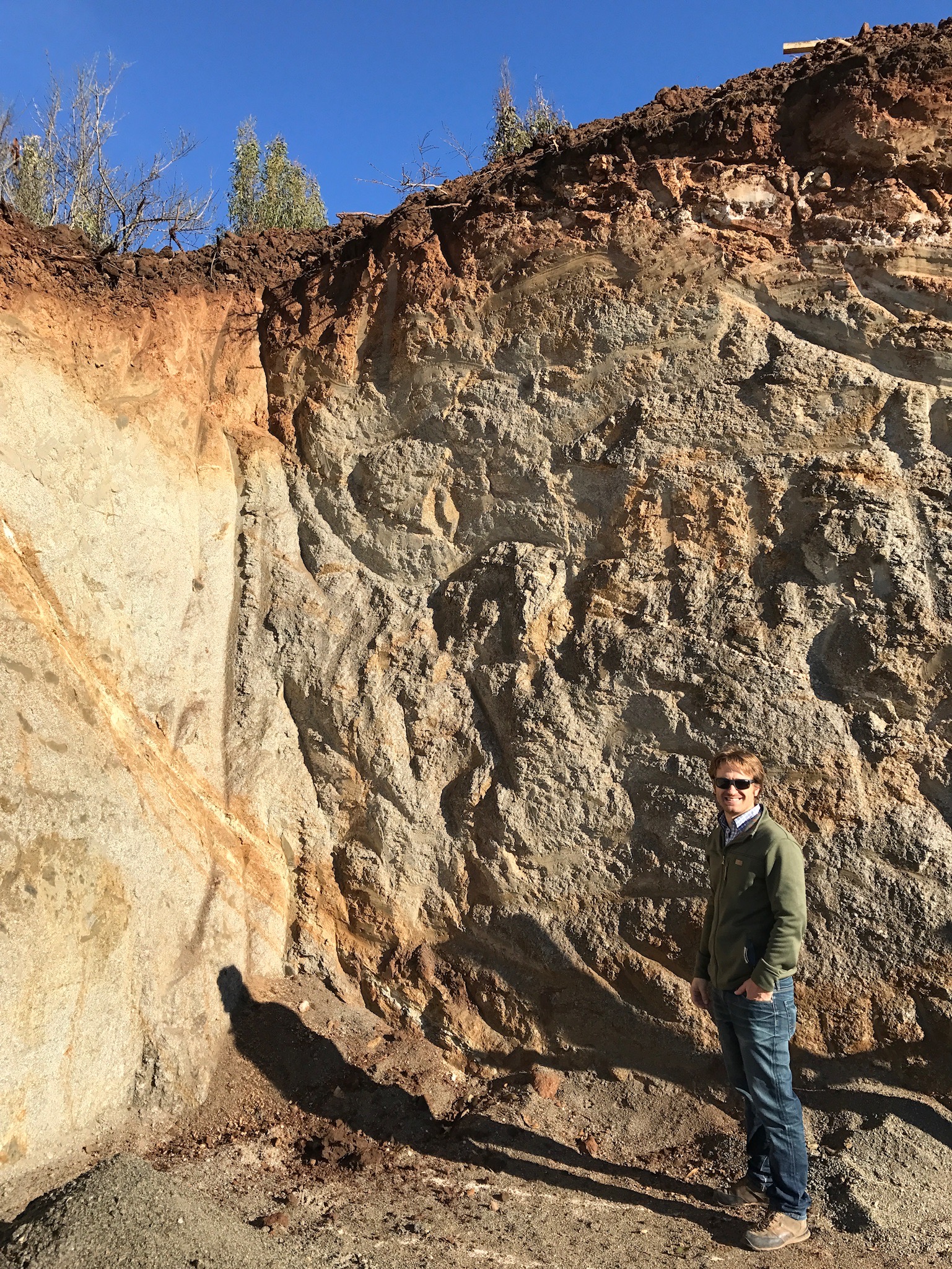
Those of you who have enjoyed a glass of wine or a paired tasting on our terraza probably understand why we’re growing. Our current cozy spot is great for a small group. Until it gets cold. Or dark – because we don’t have lights. At which point we move you inside to our staff kitchen, which is essentially an office kitchen, or into the middle of the winery, by the destemmer. We then throw a batik tablecloth (sewed by my mom for my brother’s wedding reception) over a wine barrel and pull up some chairs. Although intimate and memorable, this set-up is really not ideal, especially during harvest when we’re literally pumping pinot over your heads. There’s no view from inside, either.
We have huge hopes and dreams for the new tasting room. We started planning and designing nearly two years ago. We’re hoping to create an environment (or "onda", as we say in Chile) where our guests can try our wines, relax as if they’re at home, and come to love the beautiful views of the Casablanca Valley as much as we do. We’re especially excited about the professional kitchen, which will allow us to host harvest dinners and evening tastings under starry skies, offer Chilean cooking classes with guest chefs, and make artisan cheeses and homemade ice cream from our own cows. Who knows what else we can do... We’re open to your suggestions.
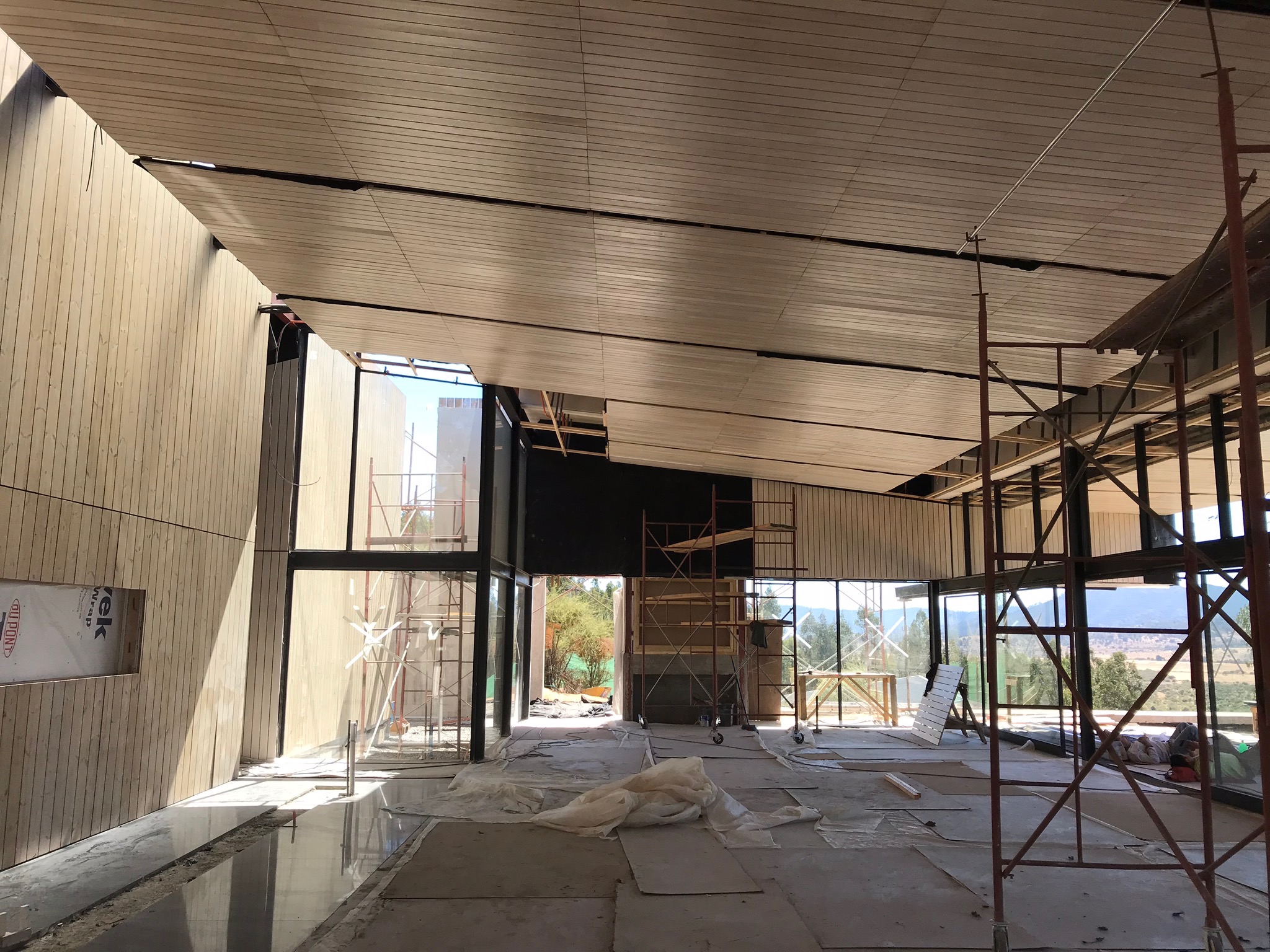
This project has been a long time coming. Although we never imagined we would need it when we first started out 20 years ago, we’re excited about what this building means for our family and its future on our nearly 100-year-old farm. We hope the new tasting room creates a sense of place that marries the past and present. We want it to be welcoming for first-timers to Chile, and for it to beckon those of you who have been before to come back. We sincerely hope you will join us here in 2019. We may even be able to offer you a place to stay… More on that later!
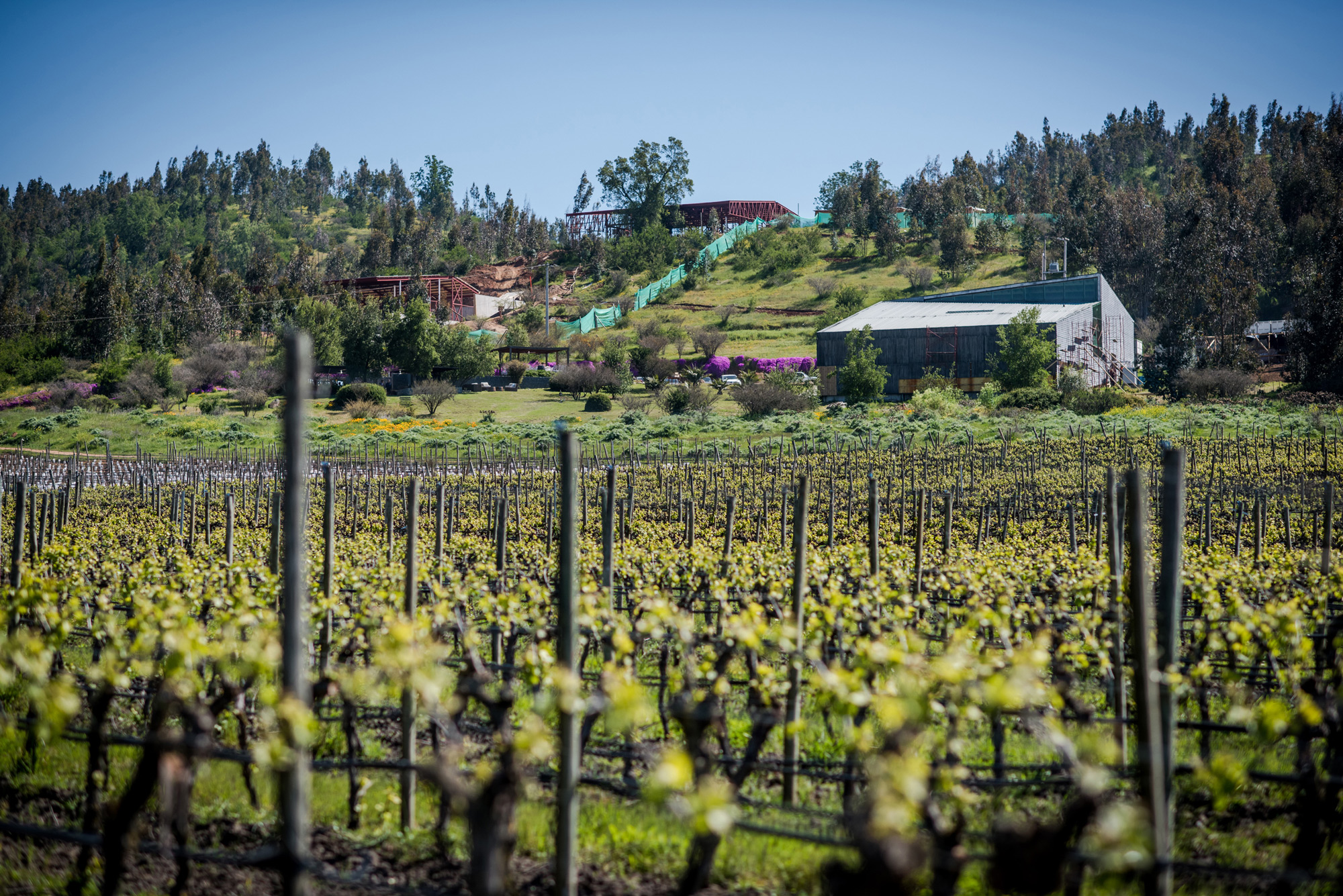
The Kingston Family Fellowship Program

Wait so...how did you end up here? a visitor asked as I wrapped up the intro section of my tour at Kingston Family Vineyards. It’s a fair question, and one I am asked almost daily. Guests are often surprised to be greeted (with our signature welcome glass of Rosé!) by a New York-born, Chicago-raised 22-year-old when they step foot onto a Chilean vineyard. The answer is that, after spotting a random Facebook post in a university job board that I rarely check, I stumbled upon a unique opportunity: the Kingston Family Vineyards fellowship. For the past three years, Kingston Family Vineyards has offered recent college graduates the chance to move to Chile to lead tours with the hospitality team, engage with a new culture, and throw ourselves into the day-to-day operations of a small, binational family business in the Casablanca Valley. This year, Taylor Myers and Aubree Andres, recent Princeton graduates from Florida and Boston, respectively, and I moved to Chile in September to get to work at the winery.
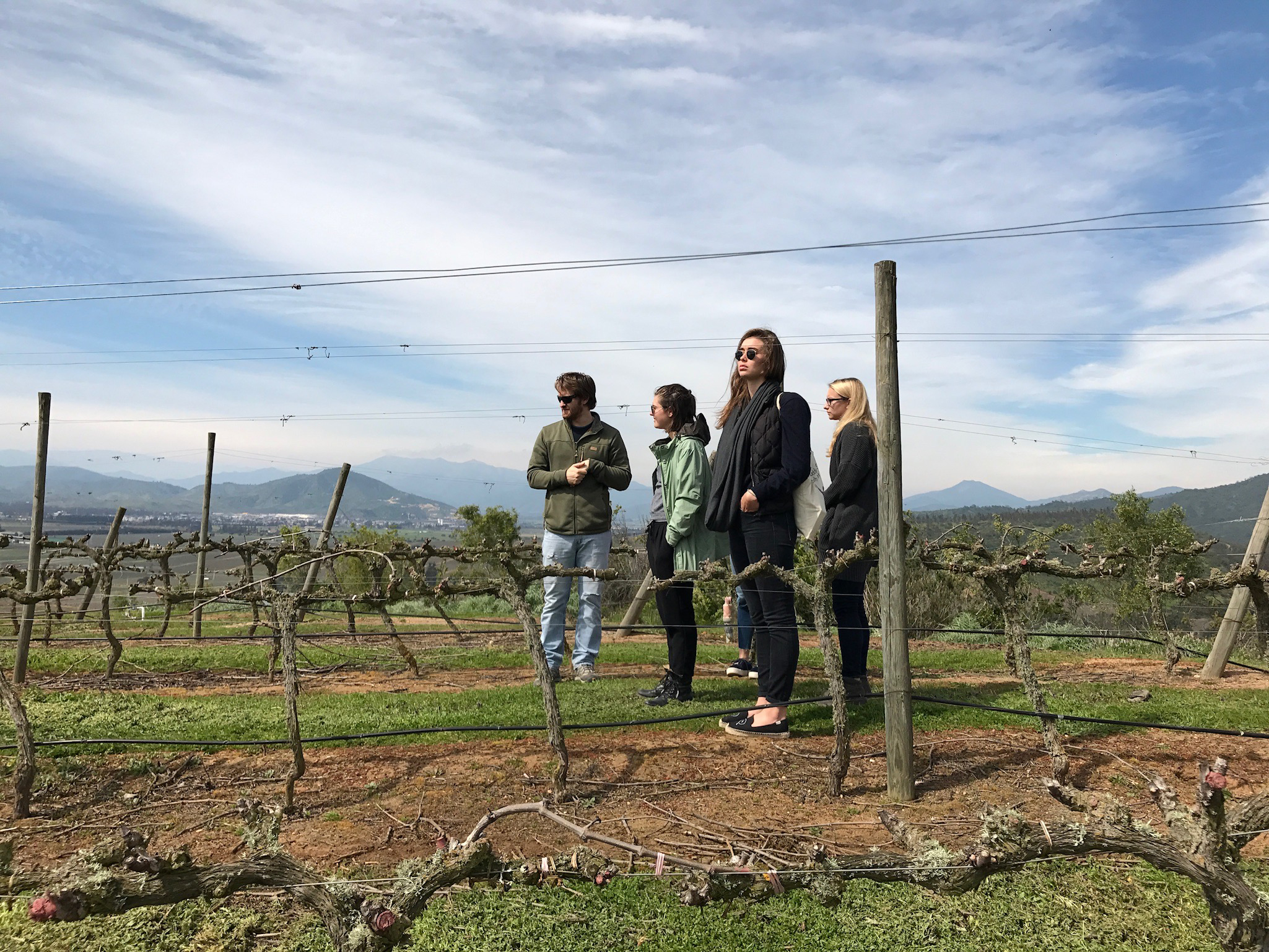
A History Lesson
In the spring of 2014, as she was preparing to graduate from Princeton with a B.A. in History, Blaire Bloxom spotted an ad that caught her eye in the Princeton alumni magazine. She noted the name “Kingston Family Vineyards” and decided to reach out to the Kingstons to inquire about a job on their farm. Initially, the family discussed the possibility, but decided a young college graduate wasn’t in the cards for that year. But Blaire persisted. A year later, as she was sharpening her Spanish working in Ecuador, she reached out to the Kingstons again. This time, they invited her to come down to Chile to work on the farm for a year. And thus Blaire launched an exciting precedent! In the couple of years since Blaire came down to Chile, the family has worked to develop the recent graduate roles, bringing on Constanza Beytia as a Chilean mentor. Jen Kingston, in charge of Human Resources and fellowship training, says that, “the Kingston family is so thankful for the ways in which the fellows have consistently brought new ideas and great energy to our developing business.”
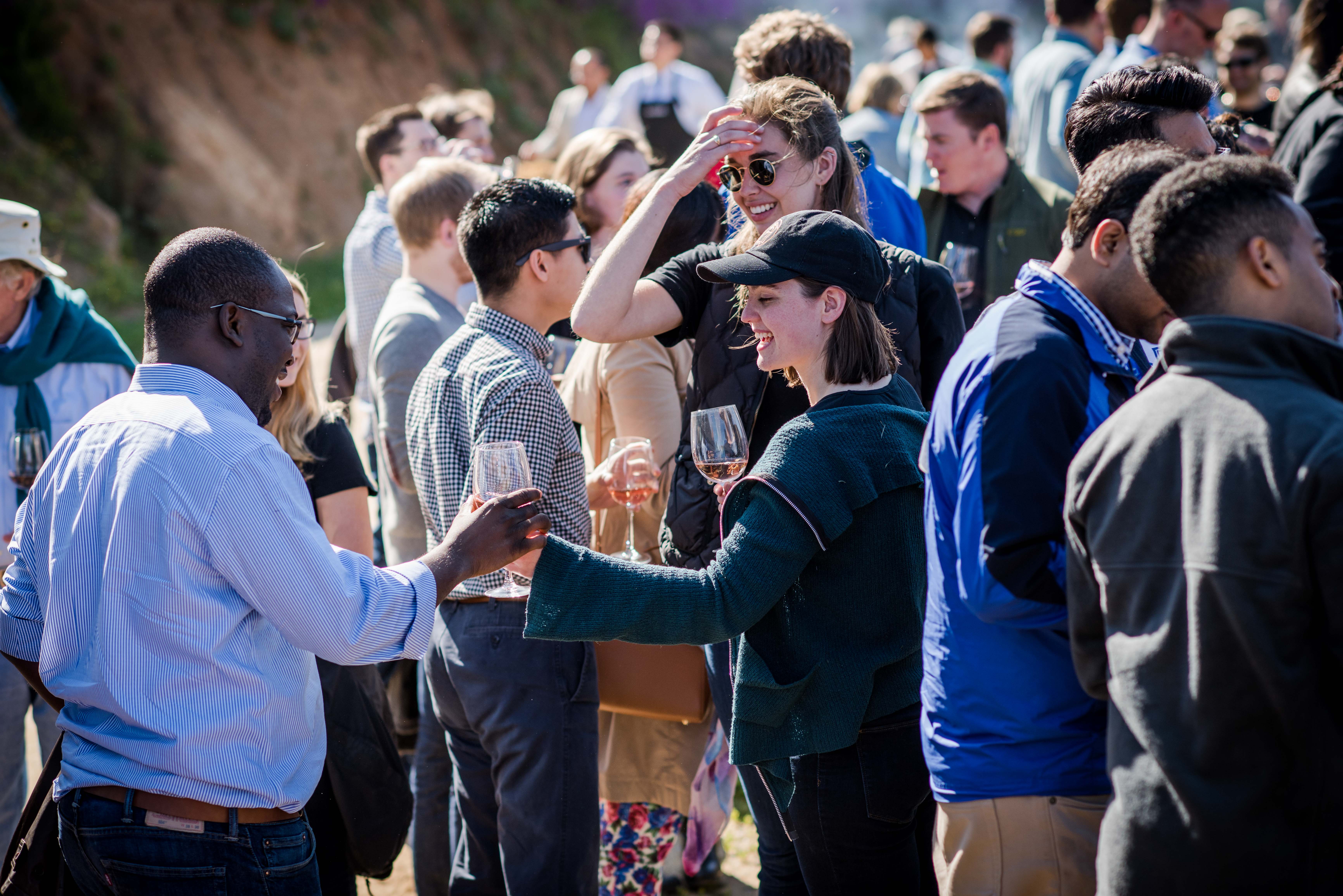
A Day in the Life
There is no such thing as a “typical” day at Kingston Family Vineyards. The core of a fellow’s job is leading tours and tastings for guests. On busy days, fellows lead as many as three tours each. I’ve had days where I’ve greeted a group of Americans for a 10 AM tour, taken a quick lunch break, then spent the rest of the afternoon walking bike tour groups around the cellar or pouring tastings for newlyweds.
Even on days when our schedules are less packed with tours, we keep busy with tasks around the winery. With harvest, events, and big shipments to the US on the horizon, there are always opportunities to get our hands dirty. Hand-labeling bottles while blasting music in the barrel room is a regular pastime, and we help out with restocking our little on-site wine shop almost daily. Sometimes our tasks are less routine: one day last month, Aubree and I put on knee-high wader boots and got into the fountain to shovel out the leaf-filled water as part of spring cleaning! Other days we pile into the vineyard’s white pickup truck for stick-shift driving lessons in the vines. (“A good skill for someone working on a farm,” Michael Kingston, age 76, confirmed when I recounted our stick-shift escapades to him.) Working on a small team where everyone wears so many hats enables us to try out a range of jobs and apprentice with team members, from our winemaker Amael Orrego to our client partnerships manager Marco Vera.
We also have the opportunity to work on projects in other parts of the business that interest us. This allows us to learn about the inner workings of a small family vineyard beyond hospitality. For example, last year Douglas Guyett initiated a project on financial modeling, and Ben Culver worked with our agriculture team on organic farming. So far this year, Taylor, a chemistry major in college, has been learning from our part-time wine chemist in the lab. Meanwhile, Aubree has been spearheading recruitment for next year and putting her art minor to good use building sculptures out of used corks. Working with our marketing manager on projects like this very blog post has been a highlight for me.
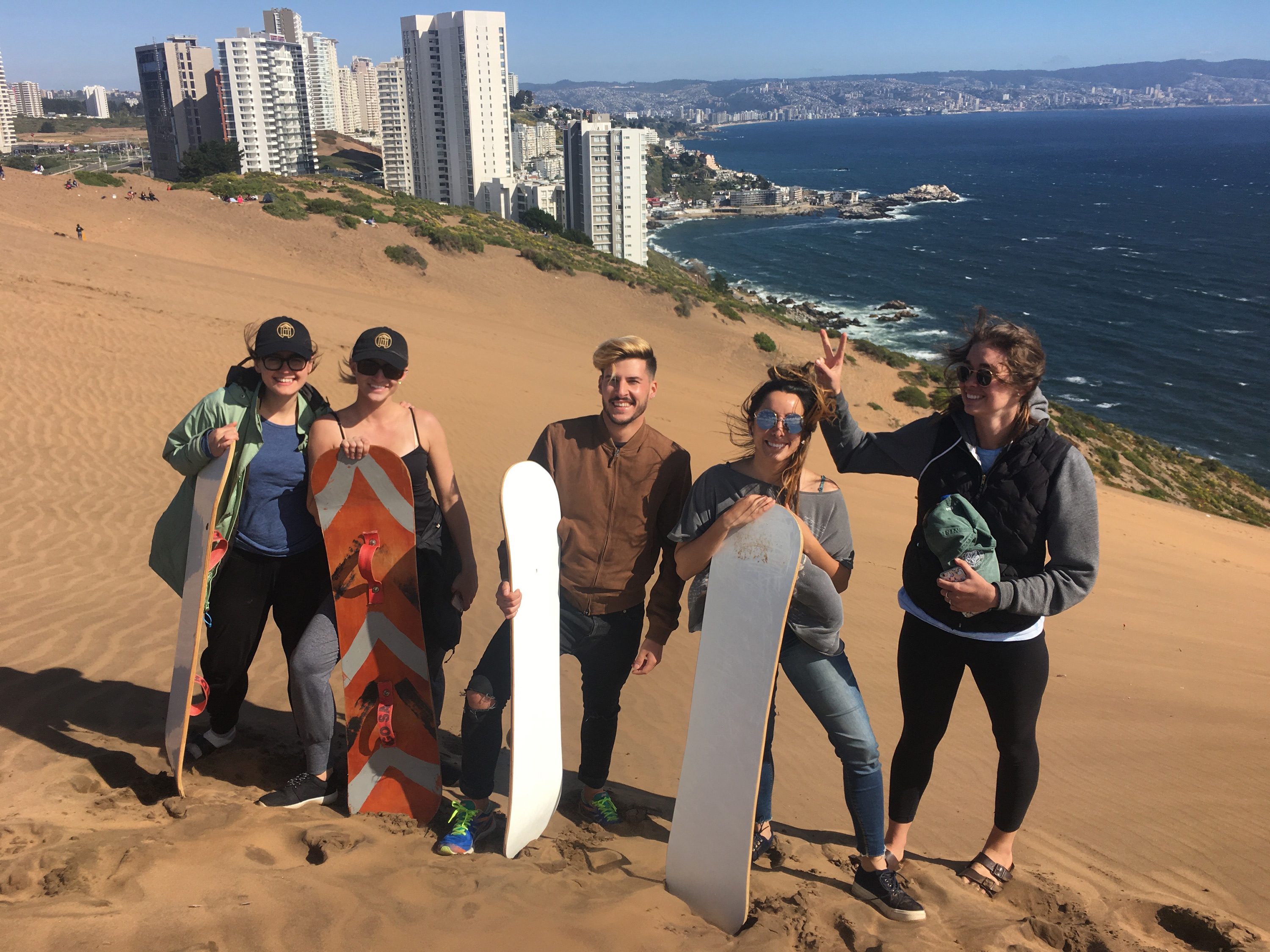
Life in Chile
After visitors learn about how on earth I ended up in Chile, they’re often curious to know where we live, and what life is like for us here. The fellows share an apartment in Viña del Mar, a gem of a city on the ocean about forty minutes from the vineyard. Our building is full of Chilean families, and we are a short walk from the ocean and the lively local farmers market. We can practice our Spanish daily with everyone from our doormen to the attendants at the small museum across the street, and while we’ve had a couple of mishaps with the intricate network of local buses, for the most part we’re figuring it out. It doesn’t hurt that most of our Chilean team members live in Viña del Mar or nearby Valparaiso and are always willing to help. We carpool to the vineyard with them in the morning, too. Personally, I’m famous for sleeping in the car from the moment we hit the highway until we pull into the winery for our daily team breakfast in the kitchen.
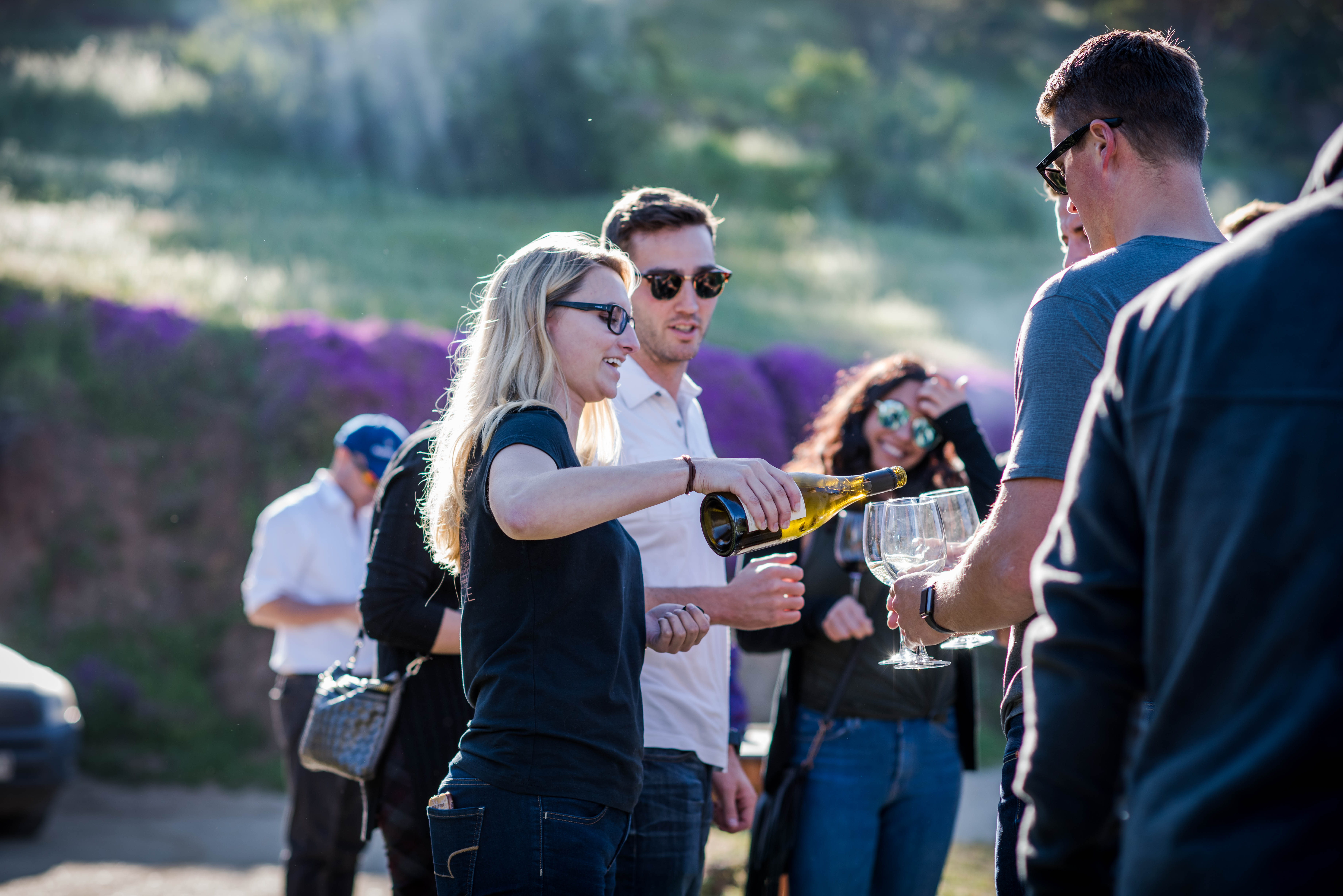
Sharing the Kingston Story
Fellows are daily stewards of the Kingston’s family story on the Farm. I’ve been asked more than once if I am a member of the Kingston family, perhaps a great-great-great granddaughter of CJ Kingston or a cousin of Courtney Kingston. While the answer is no, I have been delighted to share the family’s rich history on the Farm since arriving in early September. There are black and white photos of the family and farm everywhere in the winery, and Louise Kingston has been generous about sharing the stories of the photos and the generations of Kingstons pictured in them. The vineyard is just the latest chapter of the Kingston family’s nearly 100-year story on their farm, and the fellowship opportunity, while only three years old, is an exciting addition to the constantly evolving and growing family business. Whether we’re shoveling leaves, leading tours, or carefully placing the Kingston label on a new bottle of sparkling wine, we are grateful we ended up here.
Where to Stay in Santiago

For most travelers to Chile, Santiago is both the starting and ending point. Whether you’re heading to Patagonia, Atacama or - we hope - visiting us in the Casablanca Valley, you’ll likely spend some time in Chile’s dynamic capital city. Where you stay after a long international flight can make a big difference in your perception of the country, so we want to help you get your visit to Chile off to a good start.
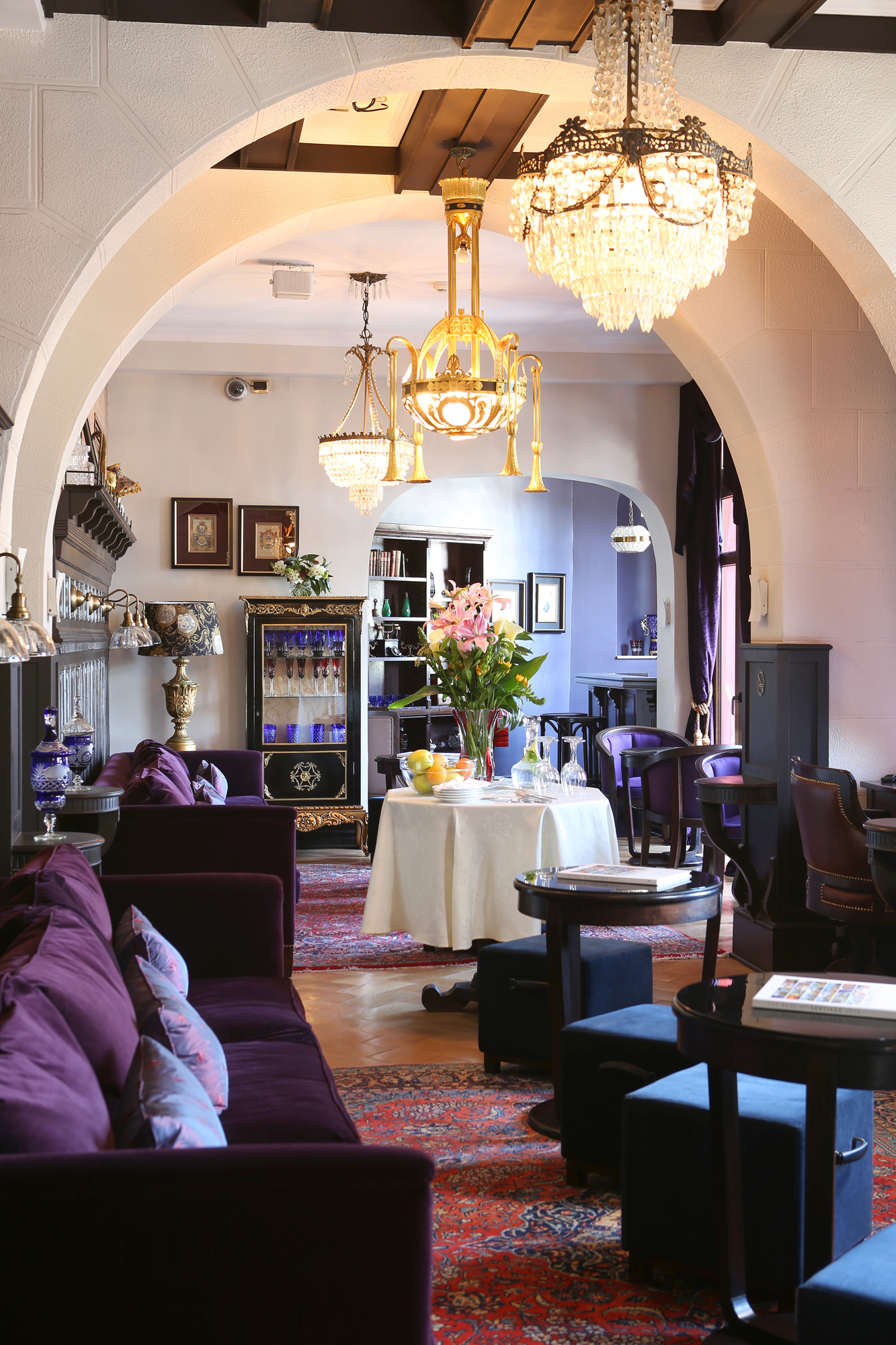
Our sense of the current hotel scene is that it’s undergoing a subtle renaissance. It used to be that everyone we knew stayed in large international chain hotels for convenience. Lodging was basically utilitarian in nature, and there wasn’t a lot of thought given to design or service. Over the past decade that has shifted. Now Santiago offers a number of great stylish boutique hotels and good service is an important part of the equation.
Whenever we write a post we try to incorporate our experiences, or those of our family members. We also try to ensure that we cover topics that reflect unique aspects of Chile’s culture and history. This is a little difficult when it comes to lodging because we live nearby and don’t frequently stay in Santiago hotels. Also, Chileans are subtle when it comes to touting their culture and history. Unlike a resort in Hawaii, for example, where you might find tiki-themed hotels with Asian-fusion fare served on palm fronds and spa treatments that leave you smelling like plumeria, Chileans are more refined. Their lodging offerings reflect this trait.
Below is our list of recommendations, based upon where we’ve stayed and where friends and extended family have reported are the best lodging options. When deciding where to stay we look at location and cleanliness first, then amenities, such as a pool (when traveling with the kids). We hope you find it helpful!
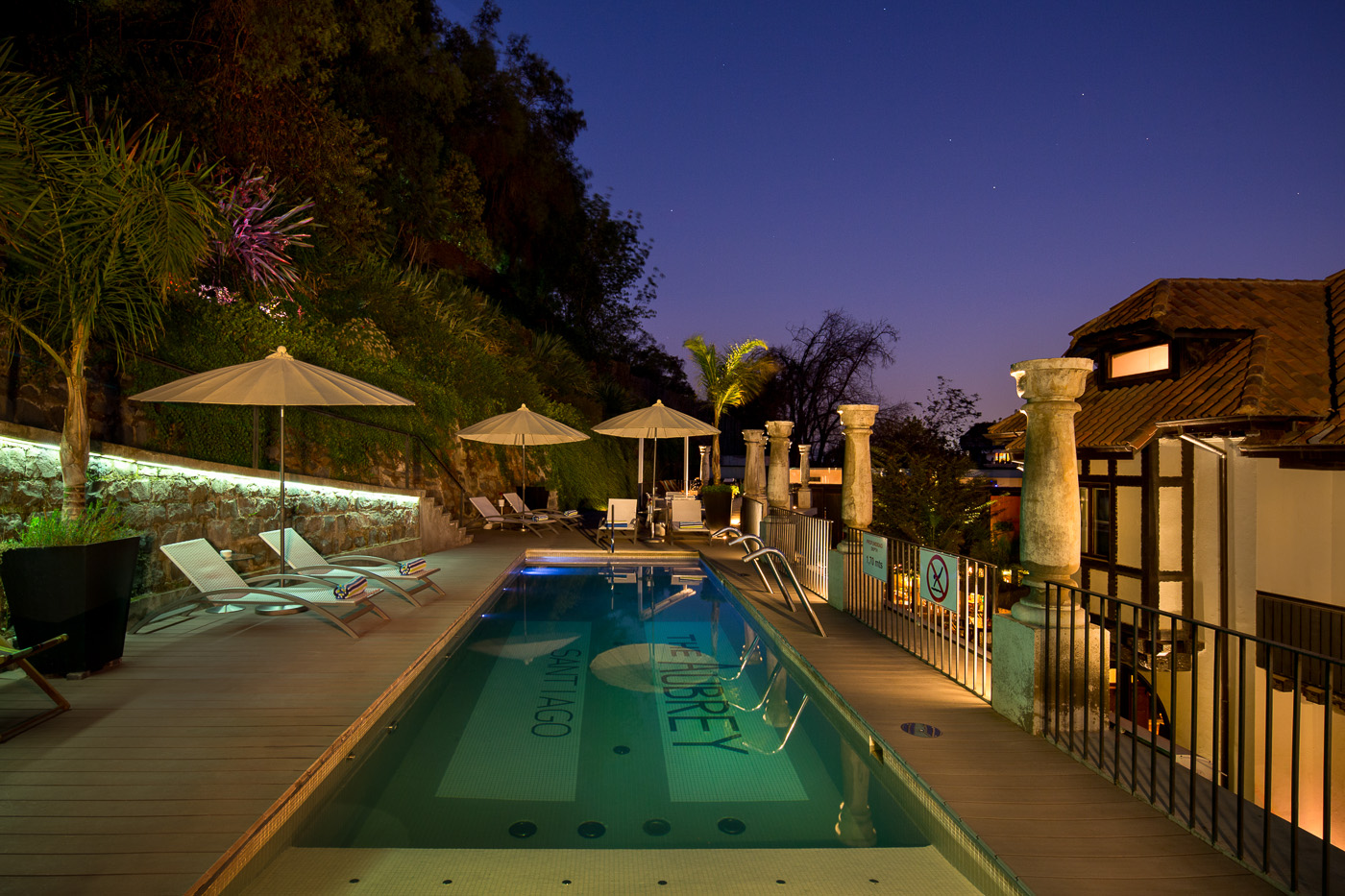
Lastarria
One of our current favorites is The Singular, a newer hotel located in a hip, up-and-coming part of town (the Lastarria neighborhood) near Parque Forestal, Bellas Artes and a great alley coffee shop called Colmado. It’s classically styled and has all the modern amenities you need. We found the rooms to be generous, quiet and great for sleeping because of the hushed tones of the furnishings and the blackout shades. We also love the decor that mixes “old” and “new” Chile. The combined lobby/bar for example, contains modern furniture with antique framed art, traditional brass floor lamps and stocked bookshelves. It’s cozy and inviting, yet sophisticated at the same time. They also have a spectacular sister hotel in Puerto Natales, in Patagonia, that was built in a restored mill.
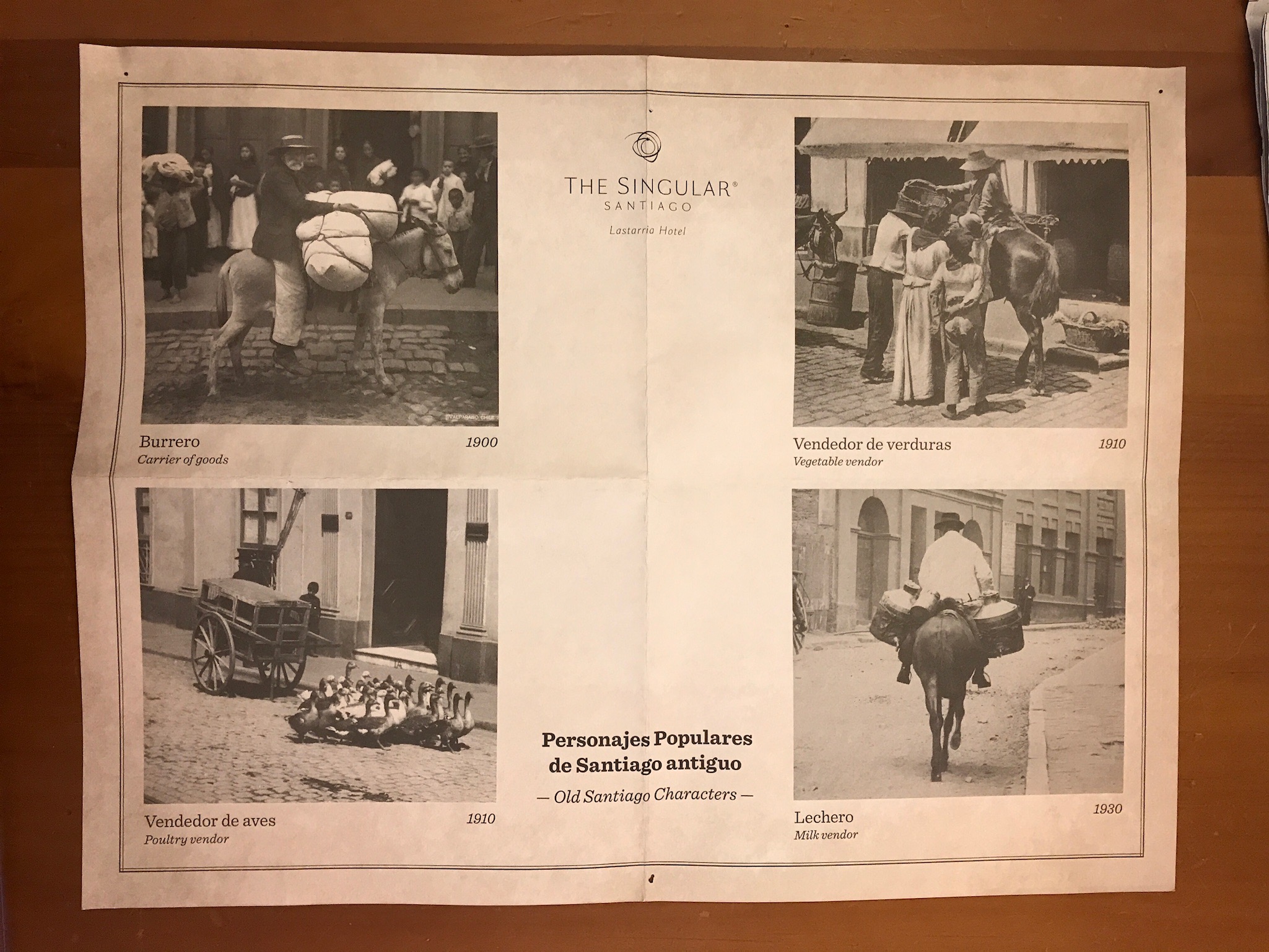
Another option is the Lastarria Boutique Hotel. Although we haven’t actually stayed there, we mention it as an option because of its location near restaurants such as Bocanariz and La Moneda. In addition, a number of our friends have stayed the night, and give it rave reviews – especially the excellent service and the garden pool.
Bellavista
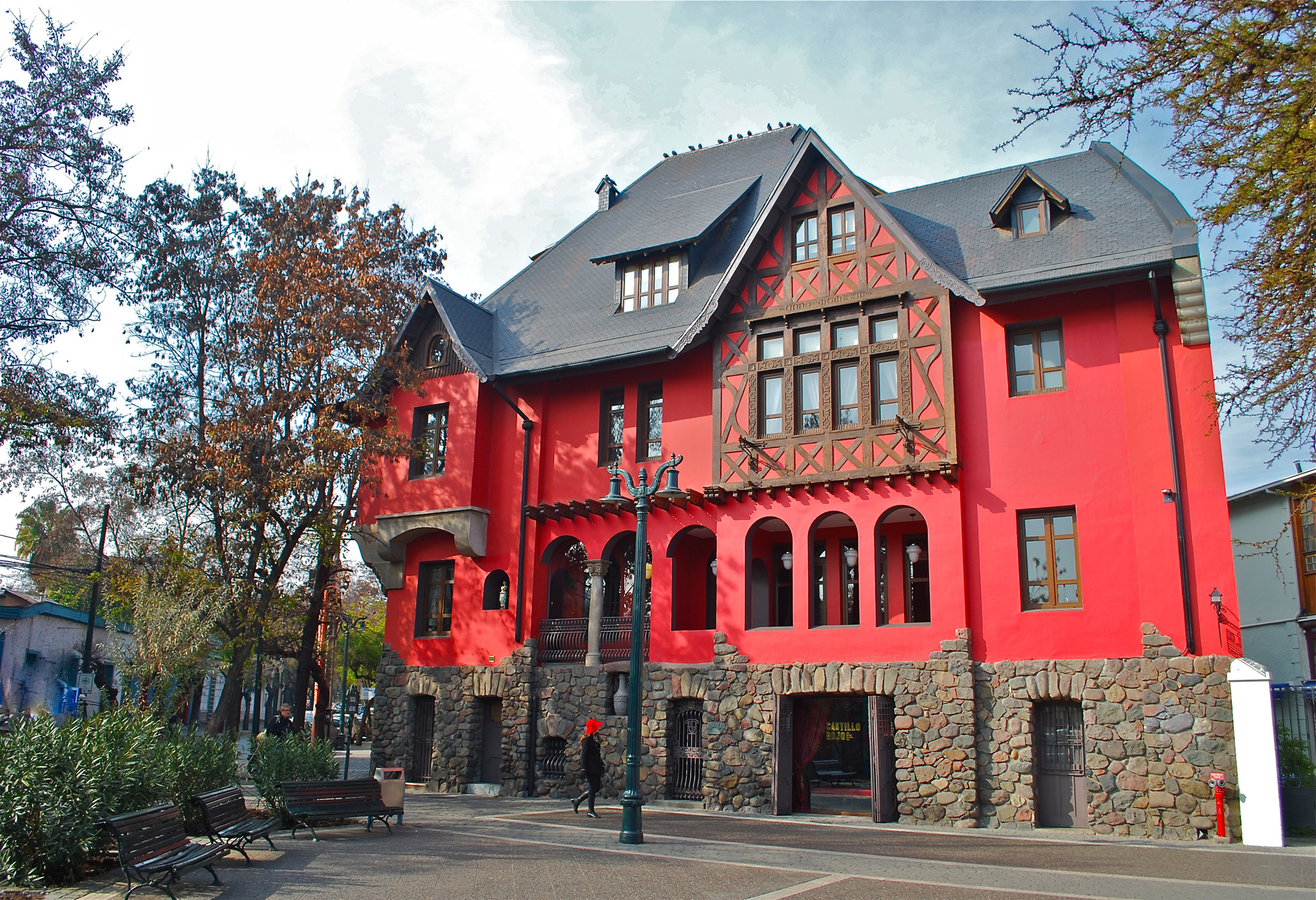
Many tourists who go to the bohemian Bellavista neighborhood are there because one of Pablo Neruda’s funky homes, La Chascona, is situated there. Another unusual Bellavista landmark is a hotel called Castillo Rojo, which literally looks like a big red castle. It’s actually a refurbished mansion, and the 19 rooms include historic details such as hardwood floors and original doors with stained glass panels. The lobby has a stylish old world feel complete with velvet curtains and cushions, Oriental rugs and candelabras. Breakfast is included at the Beppo Café, a cute restaurant with exposed brick walls, and the hotel is slated to open another restaurant specializing in Argentine fare soon. We can’t attest to the food there (because it’s not yet open), but we highly recommend the French bistro next door.
For the past decade The Aubrey was the only intimate boutique hotel in town. Once the home of a local politician, it has just 15 rooms. We like the interesting outdoor spaces including its beautiful hillside terraces, a streamlined pool and balconies with views. Each of the rooms is decorated differently, making it feel as though you are staying in someone’s (fancy) house instead of a standard hotel room. The only drawbacks are that it’s near the zoo and Bellavista has a few too many student bars for our taste.
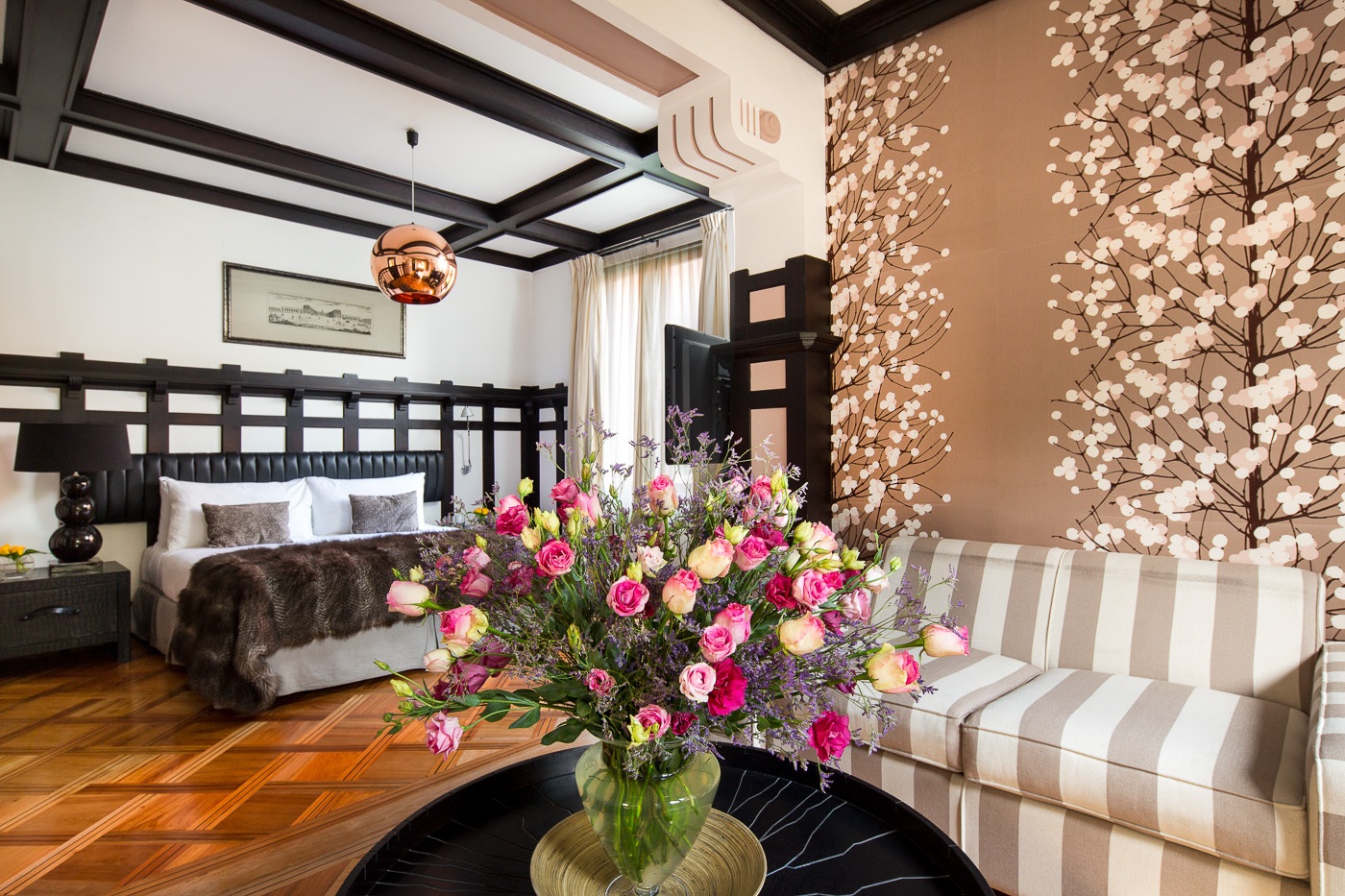
Providencia
If you are a fan of France and French traditional decor, La Reve might be a good choice for you. It’s currently ranked first on TripAdvisor and friends from San Francisco who just visited thought the location was excellent. They told us they “enjoyed Chile all day and felt happy being French at night.”
The family-run Vila Franca, also in Providencia, is a simpler and cheaper option to the other boutique hotels we’ve mentioned. We stayed here years ago and found the proprietors to be delightful; they tried very hard to make sure that everything was to our liking. We found the modest rooms to be clean and comfortable and breakfast is very Chilean - lots of fruit, bread and butter and cold cuts.
In the event that you’d prefer apartment-style lodging, we suggest the Hotel Orly, another one of Santiago’s first boutique hotels that also happens to be housed in a former French-style mansion. They offer a variety of guest room layouts in the main building, as well as a separate building of family apartments with kitchens that will sleep up to five people. We like the generous buffet breakfast, and the hotel’s commitment to the environment that it demonstrates through the use of LED lighting and thermopanel windows.
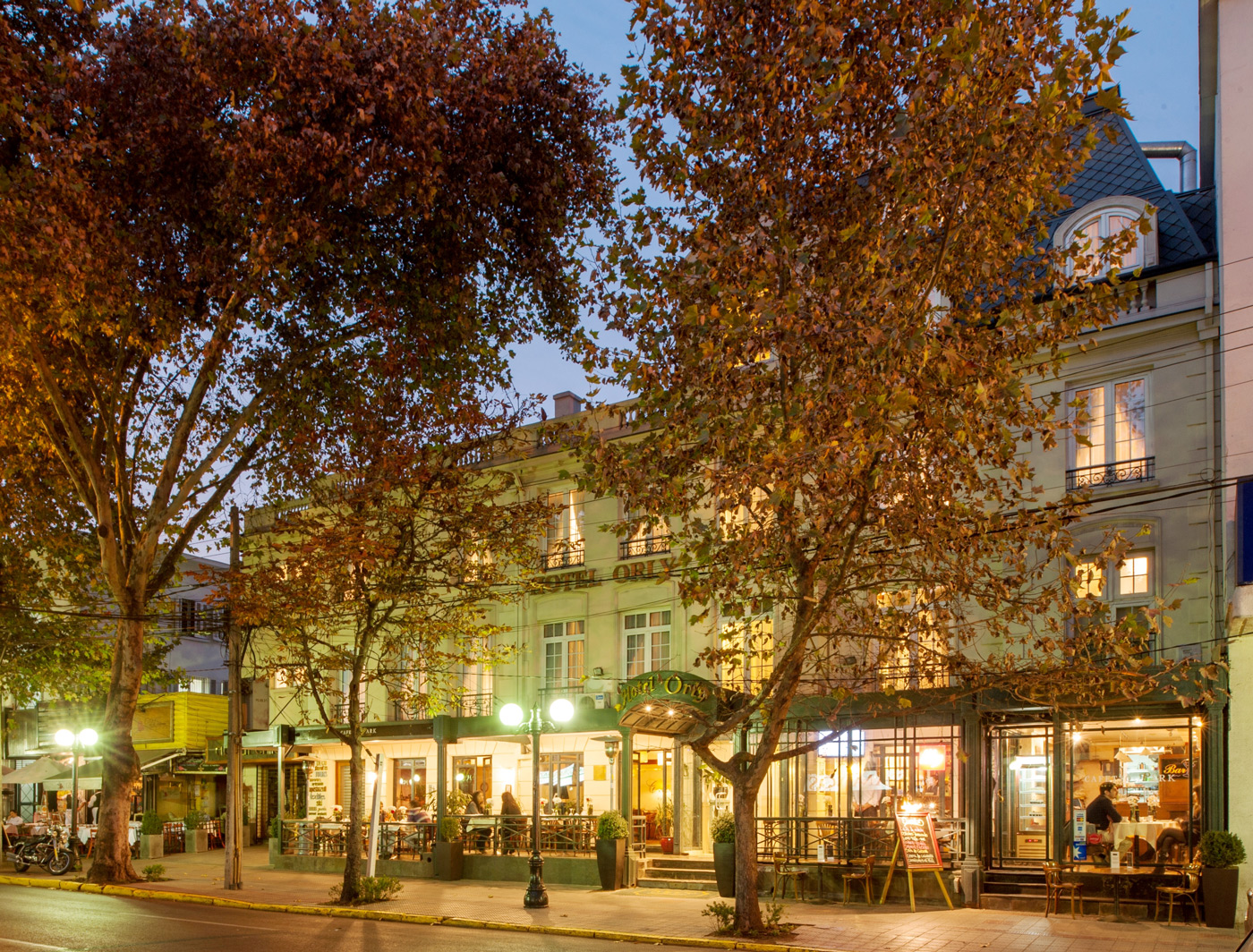
Tried and True International Chain Hotels
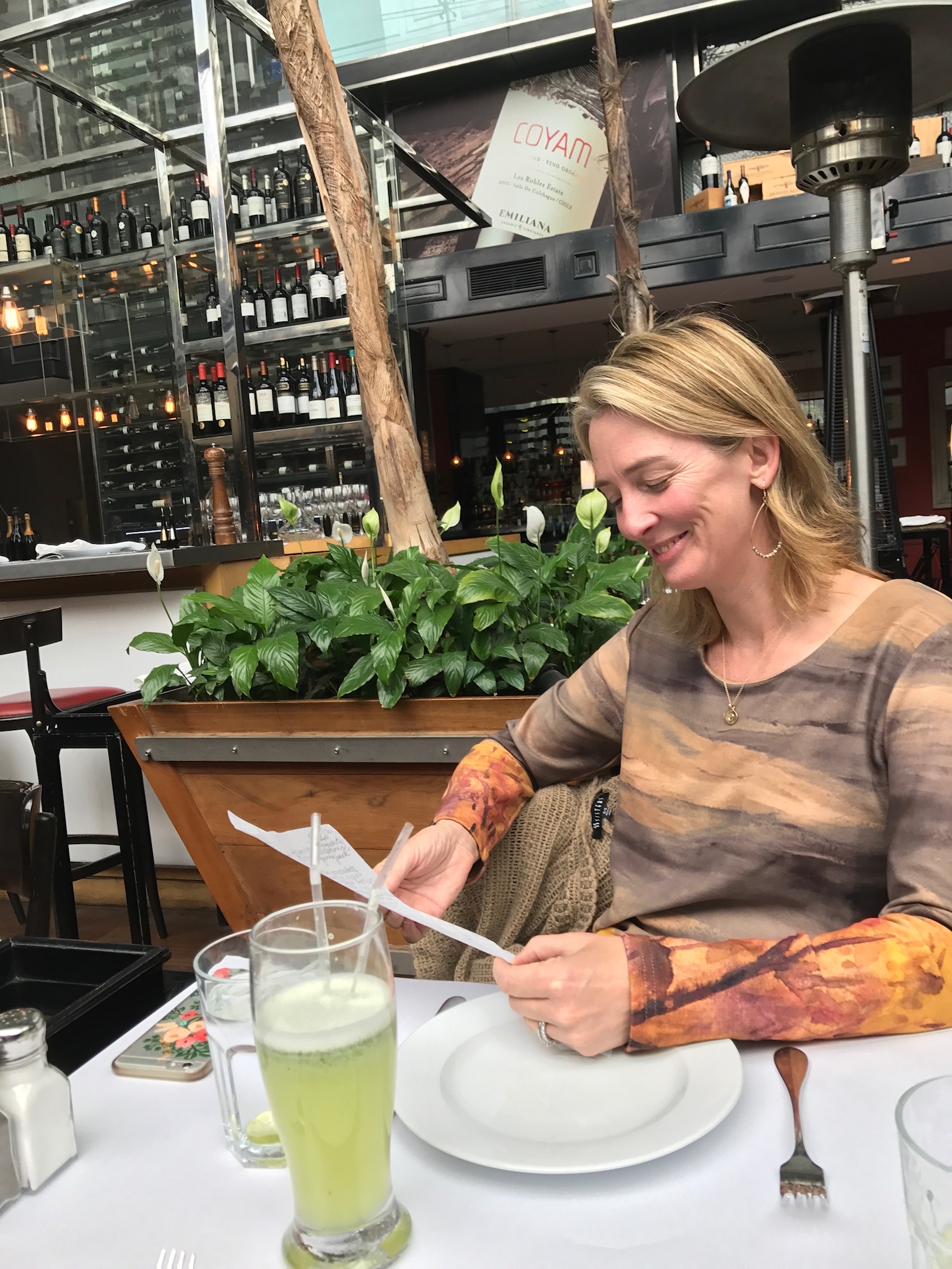
We used to live around the corner from the W and sometimes stayed there on weekends as a mini-getaway. Like most W hotels, this one is very hip (we recall the lobby music sounding like something you’d hear in a dance club) and the rooms were extremely comfortable. We loved the fabulously rich breakfasts consisting of lots of fresh Chilean fruit, as well as eating ceviche and sampling wines at KM 0, the hotel’s chic basement restaurant that receives natural light from a stylish atrium above it.
As you would probably expect, The Ritz-Carlton radiates old-school charm and reliability. There are always beautiful fresh flower arrangements when you enter the foyer, and the concierge and staff are truly exceptional. We recently stayed there and discovered half of the floors had just been renovated, so make sure to ask for an updated room. You will often find many business travelers at the Ritz due to its location in the financial district, however it’s a great fit for families, too. Our kids love the rooftop pool. And if you like to work out, the gym is a treat as well.
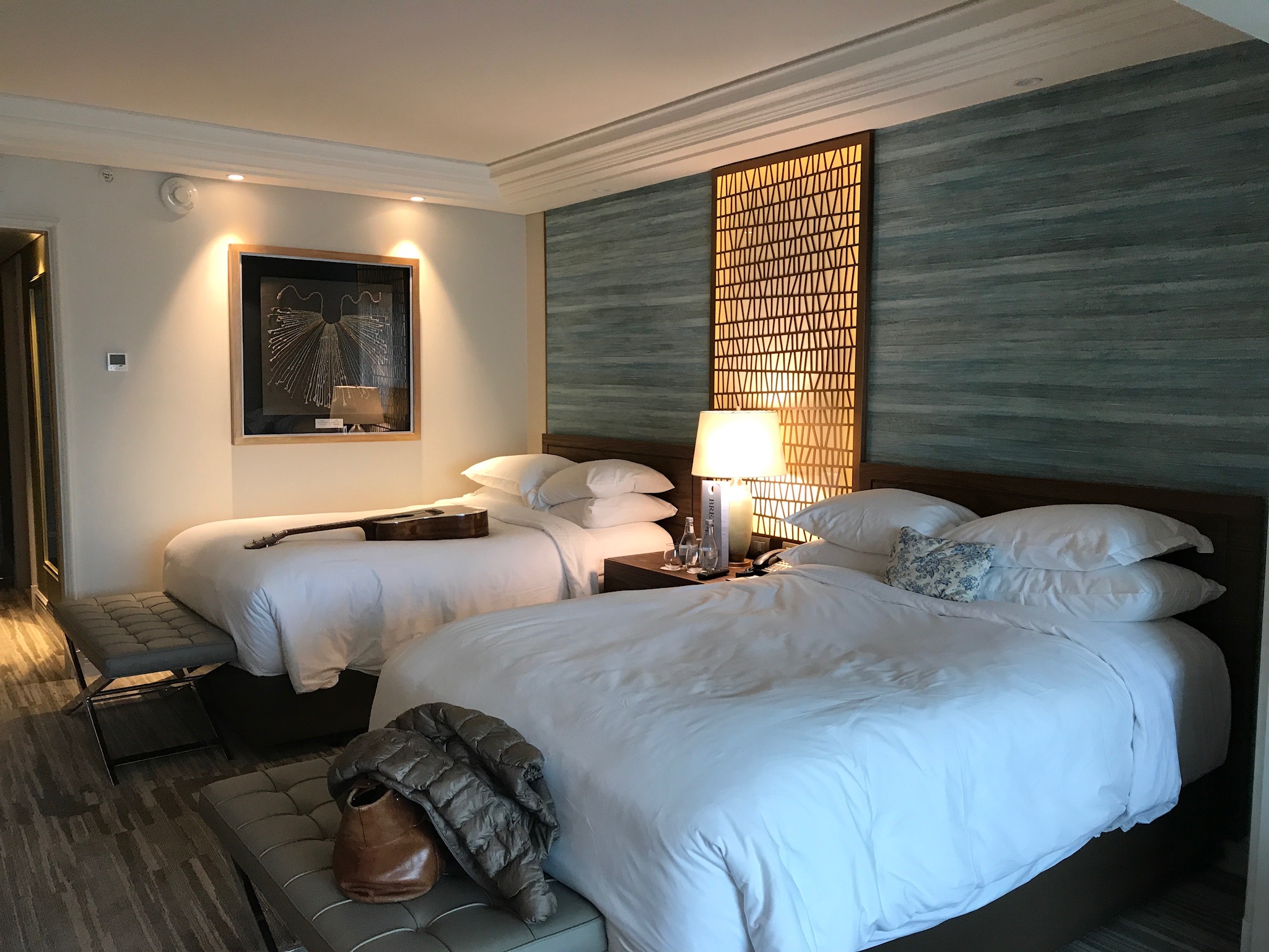
As always, we hope you find this information useful and will someday come stay with us at our vineyard. More about that to come soon! If you have questions or need more information about lodging, we’re here to help. Feel free to give us a call at 1 (650) 854-4146 or e-mail us at guests@kingstonvineyards.com
10 Things to Do in Santiago

Just about everyone who visits Chile passes through Santiago at some point. Because the vast, eclectic city has so much to offer, we’ve decided to divide up our blog posts into three parts so that we can focus on different aspects of the thriving capital. In January we wrote about Santiago’s imaginative food scene. Today we’re sharing great ways to spend a day or two in the city. Here’s our short list of our personal favorites. We hope you enjoy it!
What to do in Santiago
1. Explore Barrio Italia. We love this colorful area for its funky niches, secret passageways, unique shops, and creative flair.We think of it as a mini SOHO. About four blocks long, it’s packed with artists refining their crafts — on one of our visits we peeked through a window and watched Senegalese dancers practicing to drums. Nearby, a man made petite wooden guitars by hand. The architecture feels European, yet the brightly painted storefronts carry everything from antique books to artisan shoes to baby bibs that are uniquely Chilean.
We recommend spending a few hours wandering around. If you happen to love chocolate as we do (there are some days when we have it with breakfast, lunch and dinner) stop by Xoco Por Ti, a teeny hot chocolate shop (which also sells coffee) located in a quaint hidden courtyard. Chileans love jazz, so you will always hear music coming from someplace. If you go at night, The Jazz Corner is fun for live music and a glass of wine.
2. Visit a Park. Santiago’s biggest common area, Parque Bicentenario, also happens to be its newest. Much like San Francisco’s Crissy Field, the re-claimed, well-planned locals’ open space is on the edge of a nice residential neighborhood, called Vitacura. A pleasant place for people watching, there are running and biking trails, the play structures are incredibly clever and unique, and it has clean bathrooms! Our kids love going because you can feed the flamingos and black necked swans; little gumball machines distribute the food for 100 pesos. Cool sculptures, such as a massive two-story bronze sculpture featuring larger-than life bicyclists looking through telescopes, are scattered throughout the park.
On weekends, you can also expect to find artists selling their works along the park perimeter. The park’s January Festival de Cine Wikén shows large screen, open air movies at dusk. Throughout the park there are colorful beach chairs and umbrellas set up so it’s easy to find a spot for taking in the scene. It’s also a great place for a picnic with smoked Patagonian salmon from nearby La Pesca de Mekis, a whole wheat mushroom empanada from La Punta, or just grabbing una paleta de chocolate from the ice cream truck.
If you don’t have much time but want to get outdoors, we recommend Parque Forestal, nestled downtown close to El Centro. Much smaller than Parque Bicentenario, the pretty tree-canopied park features antique streetlamps and stone fountains and feels like an urban oasis in the middle of the bustling city. It’s a nice place for a stroll and is an easy walk from some of our favorite hotels, including the Singular, in the Lastarria neighborhood. We recommend stopping in Castillo Forestal for a basil lemonade.
3. Check out a Museum. Santiago has a number of great museums but the two that stand out for us are the Museo Chileno de Arte Precolombino and the Museo de la Memoria y los Derechos Humanos. As a college student at Princeton I adored Professor Griffin’s Pre-Colombian art history class, so I always enjoy visiting the recently redone Museo Chileno de Arte Precolombino, located in the heart of downtown. The beautifully designed museum is a quiet sanctuary amid hectic surroundings. Small and purposely dark, the state-of-the art space showcases and preserves Incan and Mayan art in ingenious ways – you press a button, for example, that slowly opens a glass-topped drawer containing centuries old textiles in order to see them up close. All of the pieces are nicely curated (and captioned in both Spanish and English) so that you don’t get overwhelmed. We find one of the most fascinating objects to be a “quipu”, which looks like a sea creature made of knots, used for keeping track of finances; we think of it as an ancient version of Quicken.
The Museo de la Memoria y los Derechos Humanos has a completely different vibe. A visit here is an emotional and sobering experience – it’s much like going to the September 11 Memorial – and often elicits powerful, visceral reactions. The tour begins underground and guides you up three floors, each level representing different years in Chile’s recent and traumatic history. Amazing videos of actual footage accompanied by English audio guides make you feel as though you’re there, living the vivid history that leads to one of Chile’s darkest hours. We highly recommend it if you’re interested in learning about Chilean history and politics; we left the kids at home for this one.
Afterwards, decompress at Parque Quinta Normal by riding a pedal-operated go kart or paddle boat (we laughed a lot while doing this because our boat only went in circles) or playing with old-school wind-up toys sold by park vendors. If you’re looking for an off-the-beaten path spot for lunch, the quirky Peluqueria Francesa is a good bet. It’s the only place in the world (that we know of) where you can walk through an active barbershop with men getting shaves in original barber chairs to reach a restaurant. Waiters wearing collared shirts, ties and vests serve food amid decorations including antique grooming sets, razors, and posters of “classic” hairstyles. While the ambiance is much of the fun, the food is good, too.
4. Stroll through Barrio Yungay. We recently explored this historic part of town after eating at Peluqueria Francesa and loved it. The eclectic neighborhood features quaint European architecture and cobblestone streets that make us think it’s someplace our grandparents would have hung out, hidden behind a good amount of not-so-quaint graffiti. It’s a small area, and like all of Santiago, it has its fair share of Chilean flair. Our favorite discovery was a literal “catwalk” two stories up where someone had created a suspended walkway from their window to a tree so their cat could get out for fresh air.
5. Hang out in Barrio Lastarria. Located near the Universidad Católica, this neighborhood is filled with young “heepsters” (as Chileans say it) sitting outside and enjoying life. Art fans might want to check out a show at the GAM, a performing arts center named for Chile’s beloved poet Gabriela Mistral, or visit Interdesign, a super-cool design store. Known for its late night scene, we generally go to Lastarria in the daytime for coffee or ice cream and people watching. And speaking of ice cream...
6. Eat Ice Cream! We’ve alluded to this a number of times in previous posts, but Chileans LOVE ice cream. It’s somewhat of a national passion – you can even buy it on buses. According to a 2010 USDA commodities study, Chile is the largest ice cream consumer in Latin America. We don’t doubt it. People seem to eat it every day, at all times of day - we always smile at the sight of serious-looking businessmen in three-piece suits devouring a cone mid-afternoon. Shops specializing in traditional Chilean flavors such as manjar (dulce de leche) or chirimoya (custard apple) are all over town, and the city offers a number of artisanal shops selling flavors such as mild avocado or cantaloupe. You really can’t go wrong with any of them, but we especially like El Toldo Azul, a newish artisanal shop in the El Golf neighborhood (our kids swear by the chocolate ice cream) or the original Emporio La Rosa near Lastarria.
7. Tour Pablo Neruda’s House. A great way to glimpse the life of Chile’s most famous poet and also get a dose of history is to visit La Chascona Casa Museo, one of Pablo Neruda’s three homes, located in the Bellavista neighborhood. An audio tour (available in both English and Spanish) follows a brief movie and takes you through the bright blue, quirky set of buildings connected by walkways that make up the home Neruda built for his mistress. Eclectic artwork gives you a sense of his aesthetic. The tour takes roughly an hour, but make sure to keep in mind there is often a line to get in and the stairs may pose challenges for those who are less mobile.
8. Go for a Guided Walk. One of the best ways to get an overview of Santiago is to take a walking tour. We highly recommend Tours 4 Tips, a company founded by our friends, a Kansan married to a Chilean. They offer a 3-hour “highlight” tour that takes you through the Bellas Artes neighborhood and by La Moneda (the presidential palace) and an “offbeat” version, which walks you through the Esmeralda neighborhood, the Mercado Central (which we referenced in our “Where to Eat” post), and the General Cemetery, a surprisingly relaxing place.
9. Take in the View. For a birdseye view of the city, go for a ride on the newly refurbished Teleferico Metropolitano to Cerro San Cristobal. The recently restored gondola floats above the city, making a fun experience for kids of all ages. A 22-meter statue of the Virgin Mary overlooks the Catholic city. While you can hike to the base of the statue if you want, we mostly enjoy going for the gondola ride and the view. This is a popular tourist destination so be aware of pickpockets.
10. Get out of Town. One of Santiago’s most magnificent features is its backdrop: the Andes. If you’re interested in heading for the mountains but don’t have much time, we recommend Cajón del Maipo a beautiful canyon located about an hour’s drive from Santiago. (We’d be happy to recommend drivers, should you decide to go.) There is a dam and a reservoir which can be viewed from numerous walking and hiking trails – some easy, some quite challenging – and there are also action-adventure opportunities. Cascada de las Ánimas, an ecotourism destination that has been run by our winemaker Amael’s family for generations, offers zip lining over a canyon, horseback riding and soaking in thermal hot springs surrounded by the soaring Andes. There is also a wonderful lodge and cabins, should you want to stay for the night.
We’re Here to Help
Recently someone asked us why we do this blog. It’s because we feel Chile is such a special place that it deserves to be shared. As Chilean-Americans, we feel we offer a unique perspective on the country – we can view it as Chileans do, as well as see it through the eyes of Americans – which we hope is helpful for those considering a trip to Chile. Of course, we hope you’ll come see us at our vineyard in Casablanca, too!
As always, feel free to contact us with questions. We’d be happy to provide additional suggestions based upon your itinerary and interests.
Santiago’s Imaginative Food Scene: Where to Eat Now

We’ve discovered that many travelers to Santiago expect a “South American” vibe similar to what you might find in Peru or Ecuador. Usually people are surprised to discover that the city feels more European than Latin American. Situated at the base of the dramatic Andes, one of Santiago’s most notable features is its penchant for interesting design and varied architecture: In any given neighborhood you’re likely to see colonial or neoclassical buildings next to ultra-modern skyscrapers or incredibly unique structures such as the Consorcio National Insurance building, which features a 30,000-square-foot vertical garden on its front.
Probably what excites us most about Santiago is the booming food scene. In the past decade or so we’ve noticed the same creative passion and energy the city’s architects have put into its buildings is now being poured into its food. Defined by fresh local ingredients prepared with a Chilean riff on other cultures, the resulting fare is a delicious melting pot of internationally-influenced cuisine. Below we highlight some of our recommendations for these innovative restaurants as well as our favorite places for quick bites, classic Chilean food, coffee, and sweets. We’ve organized them by neighborhood, most of which are no more than 20 minutes apart by taxi or metro (which is clean and efficient although like many capital cities' public transport, be wary of pickpockets).
Vitacura
Probably the hottest restaurant in Santiago right now is Boragó, located in Vitacura, one of the city’s most fashionable comunas. Named one of Latin America’s 50 Best Restaurants in 2014, it reminds us of Noma in Denmark. The sleek spot is known for its use of 100 percent Chilean ingredients, many of which are foraged or sourced from remote regions such as Patagonia and Atacama, and are uniquely prepared and presented in a way that reflects nature. In lieu of a plate for example, you might find your abalone served on a rock. We are particularly excited about Boragó at the moment because we just got the great news that they'll be serving our 2015 Cariblanco Sauvignon Blanc on their 2017 tasting menu.
If you’re in the mood for Japanese fusion fare, our winemaker Amael highly recommends Naoki. A great example of the current food scene, Naoki prepares Japanese-style food made with high-quality ingredients from Chile such as papaya from La Serena and piure, a rare seafood from the coast.
One of our favorite “go-to” spots is Mestizo overlooking Parque Bicentenario. The semi open-air eatery with cool architecture features delicious seafood. It’s a great spot for brunch or lunch (make sure to make reservations) followed by a walk through the park to check out the pink flamingos and black-necked swans. On the west side of the park you’ll find the artisanal ice cream truck is worth seeking out. An alternative for seafood is La Pesca de Mekis which doubles as a market and an oyster bar. Nearby, Quinoa is another excellent place for lunch. One family member loves the mango lassi; the salads are yummy, too. If you’re into modern art you might want to visit the Patricia Ready Gallery of Art on Avenida Espoz and eat at its high-ceilinged, bright and tasty restaurant, Cilantro Bistro.
For something quick and simple, we often stop at La Punta for empanadas. The restaurant serves 14 different varieties with ingredients such as shrimp and onions or whole wheat with mushrooms. We like that every empanada type has a unique fold, each of which is cleverly decoded on the napkins so you can zero in on the aji de gallina, or the jamón queso, which are our personal favorites. And, while Chile is not known for its steak in the same way as neighboring Argentina, there are restaurants that specialize in meat offerings: Cuerovaca, located on the pedestrian walkway Paseo el Mañío, is one of the best in town.
El Golf in Las Condes
If you’re in Santiago on business, it’s likely that you’ll be spending some time in El Golf in the Las Condes neighborhood. Affectionately known to ex-pats as “Sanhattan,” El Golf is the heart of Santiago’s financial district. Upscale hotels such as The Ritz and W have locations here, and much like Manhattan, there is a wide range of restaurants. Estro at the Ritz has outstanding food.
If you’re looking for something fast and familiar Streat Burger might be a good bet. We think of it as Chile’s version of Shake Shack. For something else that vaguely resembles a North American mainstay but is very Chilean, try the completo at Domino. It’s a hot dog topped with ketchup, mayonnaise and avocado.
Should you happen to be in town with children, a good family-friendly choice is Pizzeria Tiramisu. Our kids love the pizza (although they insist that the pepperoni is not pepperoni – it’s salami) and swear by the frambuesa, a natural raspberry juice drink similar to a smoothie.
Of course, most people will require coffee at some point during their visit so we feel the need to make a point here. We’ve noticed that North Americans often expect that coffee everywhere in South America will be excellent because Colombia is situated “nearby.” Actually, this is not the case. Until very recently even Chile’s most sophisticated restaurants regularly served Nescafé – menu listings actually read “Nescafé” instead of “coffee” – and just about everyone drank the powdered stuff. Fortunately, in recent years the coffee craze has taken off so you can now find a good cup with less effort. We suggest Cafetín for its laid-back atmosphere and creative breakfast eats like artisan yogurt and fresh granola served in a mason jar.
Providencia
You may or may not spend time in Providencia during your visit to Santiago, but you can’t miss the massive feature that marks its border: the Costanera Center, the tallest building in Latin America. Completed in 2013, this architecturally striking landmark literally shoots sunlight in all different directions serving as a beautiful beacon of sorts. Nearby, 99 Restaurante is one of our current preferred hot spots. With its minimalist design and beautifully plated entrees, the market-concept restaurant features whatever is fresh and available that day at La Vega, Santiago’s main food market.
One of our all-time favorites is Aquí Está Coco. The eco-friendly restaurant serves tasty fresh Chilean seafood and amazing pisco sours. Some of its unique design qualities include a ceiling made from the hull of an old boat and a bathroom sink cut from a wood that operates with a foot pedal. Another popular choice is Astrid y Gastón, from the celebrity Peruvian chef Gastón Acurio, who founded La Mar Cevicheria in San Francisco, Santiago, and a number of other restaurants throughout South America.
For more casual fare with a bit of flair, La Burguesia is in a league of its own. Imagine juicy burgers topped with fresh grilled avocado and zapallo, a Chilean squash, and you get the idea. Another option is Fuente Alemana, a hopping sandwich shop that sells German beer and acts as a reminder of Chile’s history. You can try a completo, here, too. Another popular classic café is Bar Liguria, where you can sit on the sidewalk and watch the world go by.
If you’re looking for pastries or coffee, Faustina has a wonderful relaxed atmosphere. For ice cream try Sebastian; we like manjar chips, which tastes like a combination of dulce de leche and caramel with chocolate chips.
One of our most beloved stops is Dulcería La Violeta, a gem of a bakery staffed by little old ladies wearing old-fashioned white dresses and hats. Housed in a historic building tucked between modern ones, a step through the front door feels like a leap back in time. We love the tortas de mil hojas, a multi-layered cake that literally translates to “1000 layers” made with manjar.
Bellavista Neighborhood
Most visitors to Santiago will end up in Barrio Bellavista at some point because it is home to poet Pablo Neruda’s famous La Chascona house. The trendy area has a bohemian vibe, lots of art galleries and clubs, and is continually sprouting hip new restaurants. It’s a great place for people-watching but we find it sometimes to be a bit gritty and more appealing to youngsters due to the nightlife scene.
Our top restaurant choice for adventurous eaters since 2013 is Peumayen. According to the New York Times which reviewed it, the name means “dream place” in Mapudungun, the language spoken by native Mapuche people. The menu features creative and unique ingredients (think braised oxtail or horse meat) from Chile’s many different regions and most options are prepared using the time-honored traditions of the Chile’s native ancestors.
Lastarria
Located in the heart of Santiago, this historic barrio includes the Museo de Bellas Artes and the Museo de Artes Visuales (MAVI), among others. With its cobblestone streets, architecture that looks more French than Latin American, busy cafés with outdoor seating, quaint shops, and strolling buskers and musicians, this artsy area has recently experienced a revival of sorts. For dinner, we recommend the wine bar Bocanariz, which literally translates to “mouth-nose” and is known for its small plates and wine pairings with an extensive list of lesser-known hard-to-find wines. We like that the always-busy spot is family-friendly; we once took our kids and the waiter brought milk for our four-year-old without us even asking for it.
A nice option for a drink and an appetizer is the rooftop bar at the beautiful new hotel, The Singular. In our opinion, the decor and fare is reflective of Chile itself; a tasteful mix of old and new. For lunch we recommend Castillo Forestal, located in Parque Forestal. The French-style café makes delicious basil lemonade and has tables for playing chess. Colmado, near The Singular, serves great coffee, as well as freshly-baked bread, vegan and gluten-free snacks and amazing desserts. One of our favorites is the pork and mozzarella on their housemade bread.
Although a small example, we feel this form of creativity somewhat typifies the larger food movement in Santiago – a touch of innovation, a dose of whimsy, some international elements and fresh ingredients, many of which you’ll only find in Chile.
We’re Here to Help
If you are in need of additional dining recommendations, feel free to e-mail us at guests@kingstonvineyards.com. If you plan a day trip to Valparaíso and wine country, we’d love to welcome you to Kingston Family Vineyards for an intimate tour and wine tasting. We also offer private lunches on our patio (advance reservations only, please) with a panoramic view of the Casablanca Valley.
Skiing the Chilean Way

In the past few years our family has been fortunate to travel to two of Chile’s remarkable ski areas – Portillo, the country’s oldest and best-known ski resort, and Farellones, a mountain village surrounded by three ski areas collectively known as Tres Valles.
While we’re more than happy to take a few runs when we get the chance, we’re not really avid skiers. So for added perspective on the snow scene, we talked with some of our friends who ski a lot: Ellen Guidera, a former ski instructor and wife of Henry Purcell, whose family has owned and operated Ski Portillo for the past 55 years; and Brian Pearson, a Vermont native whose company,Upscape Travel, specializes in ski and adventure travel tours in Chile.
Portillo
Just about everyone who skis has heard of Portillo. It’s well-known as a summer destination for hardcore skiers and boarders, yet most people don’t realize how different the Portillo experience is from that of other resorts. We think this is what makes it so special. Unlike skiing in the United States, you book your stay at Ski Portillo for a full- or half-week. Many of the weeks are themed (e.g. “Family Week” or “Friends Week”), and a large percentage of Portillo’s clientele returns year after year during that same week. A number of families have been going for generations.
The resort itself consists of a cozy, banana yellow lodge with “450 pillows,” as Ellen describes it. Situated at 9,450 feet, the cheerfully-colored hotel serves as a beacon in snowstorms and is surrounded by three towering peaks, Tres Hermanos, and overlooks Laguna del Inca, a glassy, postcard-perfect lake. You get there by taking the main road to Argentina, a hairpin-heavy route that is not for the feeble. The resort runs vans to and from the airport though, so most hotel guests don’t actually drive it themselves.
There is no town associated with Portillo, so just about everything (but the skiing) happens inside or next to the lodge itself. Guests have access to a full-court gym, fitness center, restaurant and bar, heated outdoor pool, hot tub, movie theater, game room, health clinic and beauty salon. The old-school style hotel feels warm and welcoming, almost like home. In fact, during our most recent stay, our room was located near the peluqueria, outside of which one of the legendary Saint Bernards spends much of his time sleeping in the hallway. We discovered this is because the beauty salon staff give him cookies.
Last year we went to Portillo for one of two wine-themed weeks, called Wine Festival Week, which occurs in late August and also happens to be the most popular time for North American visitors. During this week a handful of small Chilean wineries host tastings après-ski. We had a great time pouring our wines for the guests – many of whom were insanely tall Austrian ski team members. This year our winemaker Amael and his wife Sofia will be participating in Wine Festival Week; we’ll also be hosting 15 guests for a snowshoe lunch and wine picnic during Friends Week.
The dining scene at Portillo is also quite different than that at U.S. ski resorts. There is a lively on-mountain restaurant (and bar with excellent pisco sours that stays open until midnight) called Tio Bob’s, however guests of the hotel eat most of their four daily meals at the hotel itself. Everyone gets an assigned table and the super-friendly waiters serve the same tables for the entire week. We love this for the camaraderie and lasting friendships it fosters. Chef Rafael Figueroa, who started his career at Portillo as a teenager and is still there decades later, prepares delicious locally-sourced hearty fare and also offers vegetarian options. We found the service to be top notch at Portillo too, which is somewhat of an anomaly in Chile. (In general Chileans focus more on the food itself than service.) There’s also a festive nightlife scene with great live music during dinner and rowdier bands that start playing around 10 or 10:30 each night in the hopping hotel bar.
Of course, there’s an excellent reason the U.S., Canadian, Norwegian and Austrian National ski teams train at Portillo during their summers: The skiing is amazing. With 1,235 acres of skiable terrain, dry fluffy powder similar to Colorado’s, and off-piste and heli-skiing options, Portillo is one of the best places in the world to hit the slopes. More than half of the terrain is advanced or expert level, but the other 45 percent of runs are beginner or intermediate and are groomed to corduroy nightly. Lift lines are basically non-existent. The resort has an expertly-staffed ski school and single-day lift tickets are available for those not staying at the hotel. It’s also just really cool to hang out for a week in the same place as the ski team members; they’re basically guests like everyone else, and there are lots of opportunities to watch them train.
We feel a special connection to Portillo and the Purcell family because, like us, the Purcells are a Chilean-American family bridging two cultures. Over the years our family has accumulated lots of funny stories related to our work in Chile, as have the Purcells. Our favorite Portillo anecdote involves Henry Purcell, who started as general manager in 1961 after graduating from the Cornell University School of Hotel Management. Upon arriving at the hotel, which was not in operation, he found a sheep named Lumumba residing in the living room.
Obviously, there is no livestock living in the hotel today, but Americans who visit Portillo - and Chile in general - should expect the unexpected from time to time. Chileans are known for enjoying the moment as opposed to doing things in a hurry. When traveling there, we often find we have to remind ourselves to check our Type A personalities at the gate. We mention this because most of the guests at Portillo are Chilean or Brazilian, and the timing of everything reflects that. The “early” dinner session begins at 8 p.m., for example, with most South American visitors opting for the 9 p.m. time slot. (Although, as Ellen tells us, once the North Americans have had a few days to chill out and get into local mode, they often change their dinner to the 9 p.m. time period.) We love this about Portillo; once we decompress we’re much better prepared to appreciate our friends, family and the stunning natural setting.
Farellones/Tres Valles
If you’re interested in trying out a variety of ski mountains, or don’t have a week to spare, most people head to Farellones, a high mountain village surrounded by El Colorado and La Parva ski areas and the nearby Valle Nevado. Located about an hour-and-a-half from Santiago, getting to Farellones is part of the fun – the steep, windy road that accesses the town has 40 switchbacks. Although it makes for a long day, it is possible to do a day trip. And many Americans who ski in Chile like that you can arrive in Santiago in the morning and, much like Vail or Park City, be on the mountain by 1 p.m.
At this point we feel we should remind you, again, to expect the unexpected. Just because you can get to Tres Valles from Santiago in an hour-and-a-half, doesn’t mean you actually will get there in 90 minutes. The narrow, twisting, barely two-lane, hairpin road is not I-70 or I-80. When we drove it last year we had to stop and wait while a donkey leisurely made its way across the road. And though it happens infrequently, snowstorms can cause the roads to shut down or simply make it more difficult to get there, chains and four wheel drive are a must if you decide to go in winter.
But of course, most people who visit Chile in winter are up for an adventure! And Tres Valles presents many opportunities for that.
Of the three resorts, Valle Nevado is the newest, built in 1989. It also has the most modern infrastructure – it’s the only resort in Chile that has a gondola (but the gondola runs from a parking area to a mid-mountain restaurant, so you don’t actually use it for skiing in the traditional sense). Most of the terrain is intermediate, advanced or expert – our friend Brian tells us there are some pristine backcountry bowls for off-piste missions – and about 10 percent of the runs are beginner level. The base lodge is located above tree line at 9,800 feet, so if you’re not acclimated, it will take your breath away in both the literal and figurative senses. Even if you’re not a skier, it’s worth the drive up there just to feel the power of the magnificent Andes.
Nearby El Colorado is more of a “locals” mountain with older lifts. Many of the runs are beginner or intermediate. For expert skiers, the eastern side gets tons of snow and offers steep pitches and interesting chutes for those who can handle them. La Parva, the third ski area in Tres Valles, has good treeless intermediate terrain and excellent views. For experts there is some great hike-to terrain above the resort.
As we mentioned earlier, we are not ardent skiers, so for a more detailed sense of the possibilities we suggest checking out Upscape’s website to learn about guided tours of Chile’s ski country. In addition to having excellent knowledge of many Chilean ski resorts, including some we haven't visited, Upscape offers heli-skiing and works with Ski Arpa, the only cat skiing outfit in South America running back country tours. Located at 13,000 feet, Ski Arpa is a rugged, high-altitude wonderland that overlooks Mt. Aconcogua, a 22,838-ft. giant, and the Pacific. Some of the tours also include visits to local wineries (which is how we met Brian in the first place) and include stays at quaint Chilean chalets and inns.
During our talks with both Ellen and Brian, we laughed about one of the issues that sometimes occurs while skiing in Chile. Occasionally there are big storms – storms like the one that just dumped a record-breaking nine feet on Portillo – that shut down the roads that get you to (and from) the resorts. Not only do the roads shut down, but the lifts close, too. So there could be piles and piles of fresh champagne powder and a bluebird sky beckoning. And you may be dying to get out there. But you won’t be able to do that. The lifts will open when the lift ops can reach them. Sometimes this takes a while. Which means that you will have to slow down, take lots of deep breaths, savor your breakfast (and maybe lunch) and enjoy the glorious one-of-a-kind surroundings. Eventually you will get outside and experience some of the best skiing this earth has to offer.
If you find yourselves with some extra time during your visit to Chile, stop by our winery for a tour. We'd love to see you.
Cats on Hot Tin Roofs: A Visit to Valparaíso

When deciding which travel destinations to write about for this blog, we’ve chosen to focus on those that are uniquely Chilean and unlike anywhere else in the world. Valparaiso is one such place. With its brightly painted buildings, abundant street art, crazy steep hills, Bohemian vibe, wiring that would cause a U.S. building inspector to go weak in the knees, cats everywhere, and lately, a hip food scene, “Valpo” (as some people call it) has originality and character oozing from its historic rainbow-colored seams.
Located just thirty minutes from our family’s winery in the Casablanca Valley, we often go for the day and sometimes spend the night. Here are our recommendations for what to see, do and expect in this eclectic city by the sea.
Getting There
If you’re visiting Valparaiso from Santiago, we suggest arriving mid-morning and staying at least through dinner so that you can have two full meals and experience the city lights at night. One of the most common comments we hear from guests at our winery is that they wish they had allotted more time in Valparaiso, so if your schedule allows, it might be worth it to stay longer.
We suggest hiring a driver to get you from Santiago and back (we’d be happy to provide some names) instead of renting a car because rentals are only available in stick shift. If you haven’t driven one for a while – or ever – practicing on roads that are steeper, curvier and narrower than San Francisco’s Lombard Street might not be the kind of adventure you’re seeking.
Finding Your Way
You’ll likely notice something unusual about Valparaiso the instant you look at a map. The area closest to the water appears to be a traveler’s dream: The streets are neatly delineated in traditional grid fashion. But then, emerging from the tidy grid and closely resembling a plate of spaghetti are oodles of interconnecting squiggly lines. These are the roads snaking up the city’s sheer hillsides. Unlike places that take advantage of a waterfront location for tourism, Valparaiso’s low, flat “plano” represents the working port section of town. This makes sense because of the city’s history – before the Panama Canal existed Valparaiso was the largest port between Europe and the west coast of the Americas – and until recently Valparaiso wasn’t really a tourist “destination” at all. But you’re going to want to head for los cerros (the hills).
The two most visited cerros of Valparaiso are Cerro Concepción and Cerro Alegre. Both make up part of the area that was designated a Unesco World Heritage Site in 2003. If you are in decent shape, it’s fun to explore them on foot. Like London or any old city that grew organically, the streets go every which way and are dictated by the topography. Sometimes they change names, and direction, so it’s easy to get lost. We find this part of the allure.
If you prefer to have more structure to your visit, a number of companies offer guided walking tours. We highly suggest one of the three-hour “Tours 4 Tips” tours that leave from Plaza Sotomayor every day at 10 a.m. and 3 p.m. Alternatively, there are do-it-yourself routes indicated by markers in the pavement. These take you up and down a number of narrow staircases and along the paseos that provide views of the city and sea. If you’re interested in getting a better feel for the hills and the staircases, and you’re not subject to motion sickness, the annual Valparaiso Cerro Abajo mountain bike race provides an extreme example of a way to get downhill.
In our opinion, a slightly safer way of getting down (or up) the hills is on one of the city’s famous ascensores, which are funicular elevators that cost 100 pesos (less than 15 cents) per person. The first one, built in 1883 and still in operation, is located on Cerro Concepción. When on it we’re reminded that our great-grandfather rode the same one a century ago. Going up (or down) the rickety elevators may cause you to pause and hope you’ve had a good life – that is, until you look out and consider the colorful hodgepodge of art and activity that makes Valparaiso so fascinating.
What to See
For most people, Valparaiso is not a “love at first sight” type of place. Many of the brightly painted buildings are old and weathered and there is graffiti everywhere. As we mentioned, it’s not easy to get from place to place, and to be honest parts of the city are gritty and dirty. But once you study the street art, or take note of the funky new buildings cropping up among the ancient Victorian homes, or bump along the insanely steep streets, or try to count all of the cats hanging out on tin roofs and in windowsills, you may start to like it. At least that’s been our experience. For us, Valparaiso is a city that grows on you. If you compare it to Santiago, the capital is mature and sophisticated; Valparaiso, though old, is still young at heart, free-spirited, and doesn’t take itself too seriously.
Nowhere is this more evident than in the street art, which decorates a large percentage of the city’s walls and can be divided into two categories: murals and graffiti. While it’s often hard to distinguish the two, murals are legal and commissioned by homeowners to prevent unwelcome tagging. Graffiti, which is everywhere, is illegal. But graffiti “artists” respect the muralists’ work and won’t scribble on top of it. Because a clean wall is essentially a blank canvas, porteños pay muralists to paint their homes instead of leaving it up to the bombers (as they’re now called in the U.S).
In addition to street art, you’ll find lots of hidden alleyways, shops, restaurants and unusual sightings on the hills that provide glimpses of the happy-go-lucky nature of Valparaiso. Recent visits have revealed a “store” that someone set up outside a kitchen window on a street in the 30-degree gradient range. Sale items included an egg carton containing cracked egg shells planted with delicate little flowers and a cast-iron skillet, also filled with planted eggs.
Another sighting involved a street performer, for lack of a better term, who was operating a finger puppet show. To view the show you had to sit in a chair and cover your head with a black sheet. The puppeteer then draped the other end of the sheet over his head and the performance began. We can’t think of anyplace else where someone would consider sitting on a sidewalk, with their head waist-level under a sheet, to see a puppet show; yet we witnessed a mother who dutifully stood next to her young daughter as she took in a performance.
We also saw lots of cats (seven from one vantage point) and at least three of them were hanging out on corrugated tin roofs. If you happen to prefer dogs, don’t worry, there are a fair amount of scruffy mutts roaming around, too. Unlike some of the dogs in Santiago, they’re not wearing sweaters. Also, it’s good to keep in mind that picking up after your pet is definitely not Chilean, so you generally need to watch where you step.
One gray morning we strolled around the city and were struck by all the seagulls squawking overhead. Maybe this is why a restaurant was playing the entire “Flock of Seagulls” album when we stopped in for lunch. On another day we listened to a man walk the streets as he beat a gas canister, over and over and over again, to alert people that he was in the neighborhood. He was selling gas for estufas, which are essentially space heaters, that many people use to warm their homes in the winter. And just about every time we head outside we stop to wonder about the tangle of wires emerging from power poles – it seems miraculous that the electricity works at all.
If you happen to be in Valparaiso on a Sunday at noon, one of our favorite things to do is attend the organ concert at St. Paul’s Church. We like sitting in the historic wooden pews while listening to the beautiful organ that was made in England and donated by a British resident in 1903. Not only is the music lovely (most of the time – the organists are volunteers), but the church provides a cool respite on hot days. It also serves as a great example of the city’s diverse history and its ties to Europe. On the back wall is a list of British soldiers who died fighting for England during both World Wars. And down the hill from the church are two fire stations: one formed by Germans and one by English ex-pats. Called bomberos, the all-volunteer fire departments still fight the city’s fires today.
Where to Eat
One of the top reasons to visit Valparaiso these days is for the food – and the ice cream. After walking the city you’ll probably want to eat. Porteños generally don’t sit down for lunch until at least 1:30, so you’ll need to plan for that. We really like Café Turri, Pasta e Vino and Café Vinilo. Other popular spots are Almacén Nacional, a newish restaurant that serves Chilean classics, and Restaurant Montealegre, in the boutique hotel Casa Higueras, which has an outdoor terrace with views of the Pacific. On Cerro Concepción Restaurant La Concepción serves a mouth-watering ceviche and a dangerously delicious pisco sour. But our absolute favorite spot – and our consulting winemaker Byron Kosuge’s “happy place” – is Espiritu Santo.
Located on Cerro Bellavista, the minimalist restaurant and hosteria is owned by our new friend, Doña Laura, and her son, Manuel. Tastefully decorated, we think Espiritu Santo typifies the city itself; aged and worn on the outside, warm and welcoming inside. The innovative menu features fresh, locally-caught fish and organic vegetables. Some recent meals we’ve loved there include octopus with miso sauce and rock fish perched upon polenta, olives and roasted vegetables. Our winemaker, Amael Orrego, and a few of our guides are also fans of the house cocktail made with freshly squeezed grapefruit juice.
If you’re spending the night, we might suggest trying someplace else for lunch and saving dinner for Espiritu Santo. However, one of the advantages of eating there at lunchtime is that it is located just a few blocks from La Sebastiana, one of Pablo Neruda’s three homes. (The other two are located in Santiago and Isla Negra.) The five-story house offers an audio tour, and provides insight into the life of Chile’s most famous poet. It’s a must see if you’re into poetry, literature or Chilean history.
Earlier we made a reference to ice cream. While in general porteños don’t take themselves too seriously, they mean business when it comes to ice cream! We find it makes a great afternoon snack because dinner comes late, at 9 p.m. Lots of little shops sell inventive and ever-changing flavors; we stopped in a dulceria during our last visit and had a hard time deciding between pears and wine, pistachio, and limon de pica, which is a special kind of green lemon found throughout Chile and commonly used in pisco sours.
Where to Stay
We recommend a number of lodging options, all of which are quite different from each other. We love Hosteria Espiritu Santo – it’s simple, clean, quiet and comfortable. Zero Hotel, a B&B located in a huge historic Victorian house, is also a great choice. It has unobstructed views of the city and the ocean in the distance. For a sophisticated yet cozy option, we suggest Casa Higueras. Palacio Astoreca opened in 2012 in a restored national monument, and has a spa. The trendiest option, Hotel Fauna, has really cool architecture, but it can be noisy. Next door is Via Via, an excellent boutique hotel with arguably the best Belgian beer selection in the city, and a delicious lunch menu.
Morning in Valpo
If you happen to spend the night and need something to do in the morning, we suggest heading over to Mercado El Cardonal to check out the piles of local produce. We think it’s fun to see the mountains of cheap avocados, barrels of olives and variety of local fruits and seafood that you won’t find in the U.S. Upstairs you’ll discover a smorgasbord of mom and pop lunch spots, all serving the same classic Chilean sandwiches: barros Luco (a beef and cheese sandwich named after a past president), barros jarpo (ham and cheese), a completo (a hot dog covered with tomato, avocado, and sauerkraut), or the completo’s more popular brother, a completo italiano (hot dog smothered with tomato, avocado and mayonnaise).
An alternative is to stop by our winery for lunch and a tour on your way back to Santiago. With advance notice, we'd be happy to arrange a private, catered meal (minimum of four people), that pairs three courses with our wines.
How Can We Help?
Many of our crew at the winery live in Valparaiso. Should you be looking for additional tips about the city, feel free to e-mail us at guests@kingstonvineyards.com with questions. We’re happy to help!
¡Saludos!
Atacama: A Desert Oasis

If you’re a looking for a spectacular vacation destination where you can simultaneously recharge your batteries and explore an other-worldly natural habitat, we think the Atacama Desert is an excellent choice. Atacama is one of Chile’s "travel trifecta", along with Patagonia and The Lake District, and is home to a natural marvel, the San Pedro oasis.
Surrounded by a dramatic landscape that looks like the surface of Mars, the colorful oasis consists of the Incan town of San Pedro, active volcanoes, salt flats, and hot springs. It also has geysers that rival Old Faithful (minus the crowds) and geological formations that make us wish we’d taken “Rocks for Jocks” instead of “Physics for Poets” to fulfill our science requirement in college. And Atacama’s clear blue skies, low humidity and high altitude make for incomparable stargazing.
Unlike Patagonia and The Lake District, Atacama is relatively easy to access, and the presence of an actual town with restaurants and a pharmacy make it feel less remote than Patagonia’s Torres del Paine. Widely recognized as a wonderland for adventure travelers, the majority of visitors go for the hiking and mountain biking, wildlife viewing, or because they are driving across South America and it’s a really cool place to stop. However, there are also a number of luxury resorts featuring top-notch spas, unparalleled scenery, and delicious food and wine, so in recent years it has become much more desirable for families with young children and travelers who are simply looking for peace and quiet.
We visited Atacama twice in 2014 – once with our kids – and our Chilean relatives (ranging in age from 10 months to mid-70s) returned in 2015. Below is a sample itinerary we’ve put together based on the Kingston family’s experiences. We hope you find it useful as you consider a trip south to Chile.
Getting There
The most direct way to get to Atacama is to fly into Calama, a two-hour flight from Santiago, and then drive roughly an hour to your hotel in San Pedro. Three airlines access the airport: Sky, Lan Chile and AeroDesierto. Most of your fellow passengers will likely be miners (30 percent of the Chilean economy is based upon mining and the world’s largest open pit copper mine, Chuquicamata, is located just outside of the city), astronomers (don’t accidentally call them astrologers!) and tourists, many of whom will already be dressed in sensible hiking gear, including boots.
Flying into Calama may cause you to feel a bit like Matt Damon in the recent movie “The Martian.” As you descend, all you will see for miles and miles is reddish brown earth accented by tumbleweed, out-sized wind turbines and maybe a small sand storm. We advise against renting a car for safety reasons, some of which we’ll explain later, but most hotels offer airport pick-up, and all of the tour operators have their own well-equipped vehicles so you really do not need a car of your own.
Once on the road, you’ll travel along a flat, straight highway for what seems like forever. You may begin to question what you’re doing there. It’s pretty bleak. You’ll spot few other cars on the highway, except for an occasional turismo van or massive mining truck.
After some time you’ll realize you’ve been gradually ascending a mountain. You’re almost there when you reach the crest, peek over the edge, and see the oasis down below. We were blown away the first time we reached this point. No longer flat, barren and isolated, the red landscape suddenly features all hues of blues, purples and greens backed by massive volcanoes that mark the border between Chile, Argentina and Bolivia. As we drove toward the oasis, we saw vicuñas, a dainty version of alpacas, romping along the hillside. The experience was like cartoon characters witnessing a mirage; the scene was Sedona on steroids.
Four Days in the Desert
We recommend at least three full days to see Atacama’s highlights. As with all travel to South America, we suggest that you pad your trip with an extra day at either the beginning or end of the vacation. All of the U.S. cities that offer flights to Santiago operate only one per day, so it’s generally a good idea to have a back-up plan in case of a delay.
Day 1
The town of San Pedro is located at 7,900 ft., so you’ll want to make sure to give yourself time to acclimate before undertaking any strenuous activities, many of which take place at even higher altitudes. One good way to do this is to arrange for a guide (before you arrive) and go to the Valle de la Luna (Valley of the Moon) on the day of your arrival. Assuming you get to Atacama mid-day, this is an easy activity located about 15 minutes from town.
On our second trip we hired Gustavo Bustamente (gustavobustamante@gmail.com) for the duration of our vacation. Gustavo previously led excursions for two of San Pedro’s top resorts, and took us first to this surreal area that becomes even more remarkable when the sun sets. (The terrain is so much like that of the moon that it was once used to test a Mars rover prototype.) He was extremely knowledgeable about the crazy striped rock and sand formations that make up the dramatic landscape; it was at this point that we wished we knew more geology.
If Gustavo is not available when you need him, we also highly recommend an outfitter based in Santiago called Upscape Travel, which is owned by Brian Pearson, originally from Vermont. A third tour operator, Cielo Norte, gets rave reviews as well. Regardless of whom you work with, we definitely suggest hiring a guide because they are prepared for all types of desert situations.
Day 2
Another adventure that is suitable for all ages is a visit to Laguna Cejar, a beautiful turquoise lagoon that meanders among a hard, dry salt flat. It is about an hour’s drive south of San Pedro, and some people ride bikes to it and have a picnic. We went to this area with guides from the hotel. They brought along lounge chairs and libations, including lots of water, while we relaxed and explored by the lagoon. Our kids had a great time wading in the buoyant water, and they quickly learned the reason that you need to rinse off upon getting out: the salt burns your skin as it dries! Speaking of burning, there is no shade here, so you definitely want to have adequate sun protection.
We visited Laguna Cejar in the morning and returned to our hotel for lunch. On this trip we stayed at Alto Atacama, a beautiful, eco-friendly resort that blends seamlessly into the hillside. It has seven (!) pools and our kids spent the afternoon swimming in as many of them as they could access.
Before sunset, we took another guided trip to Laguna Chaxa and Los Flamencos National Reserve. The terrain here differs from that of Laguna Cejar in that it features areas where melon-sized chunks of salt coat the earth. We think it looks like city snow after it’s become hard and grey. You will want hiking boots as opposed to regular sneakers for this activity; it can be challenging to walk on the rocky salt.
A number of endangered species including the southern viscacha (a rodent that resembles a squirrel with bunny-like ears) and vicuñas roam freely here and the three types of flamingos found in Chile also live in this area. The awe-inspiring image of hundreds of flamingos in their natural habitat at sunset is a memory we will have forever.
One of the reasons we do not recommend renting a car is because of the wildlife – and sometimes livestock – in the area. On our dark ride home from Laguna Chaxa our driver slowed to a near stop at one point because there are often donkeys sleeping in the middle of the road; the asphalt retains the heat from the sun so they snooze in the street because it’s the warmest place at night.
Although this day did involve a fair amount of driving and effort (everything is spread out and there isn’t really a logical “route” you can use to access these places in order), the drives are stunningly beautiful so everyone enjoyed them.
An alternative evening activity involves a visit to one of the mini observatories in the area. Atacama is well known worldwide as an astronomer’s nirvana, which is why the internationally-renowned ALMA Observatory is located there. ALMA is not open to the public, but a number of companies provide “star tours,” which usually involve driving to various telescopes in the desert or going to one of the observatories. We went to an observatory near our hotel and found it mesmerizing.
Upon entering a pitch black room, the roof opened and the “show” began. Using a red laser pointer, our guide pointed out stars, planets and constellations in galaxies that seemed far, far away. There were also telescopes through which we could see everything “up close.” The experience was very similar to a planetarium field trip, except that these were real stars, real planets and real constellations as opposed to those you see in a pre-recorded movie.
Day 3
One of the most popular spots to explore is El Tatio, a geyser field consisting of more than 80 active geysers. Many people (and we do mean many) take sunrise tours to see them. To do this, you typically get up at 5 a.m., drive about an hour and watch the sun rise around 6. The golden sunlight behind the white plumes of steam is absolutely striking and unlike anything you’re likely to see anywhere else. Also unlike other places with boiling geysers surrounded by unstable ground, there are no signs or barriers to keep you away from them. So you need to watch your step, especially with kids. We highly recommend staying on the paths.
El Tatio is located in an area called the Altiplano, which translates to “foothills” of the Andes. Starting at 14,170 ft., these are not ordinary “foothills.” Altitude sickness is a serious concern and needs to be considered. It’s cold at sunrise – very cold – so you definitely need warm clothing, including hats and gloves, for the early morning tours.
Most tourists leave El Tatio around 9 a.m. after swimming in the hot springs and having a picnic breakfast, but we recommend staying for a hike in the area after the crowds depart. The terrain is very different than the desert floor, as are the plants and animals. We saw some beautiful ducks and exotic birds, as well as more vicuñas and guanacos, which are all in the llama/alpaca family but range in size and elegance.
After our breakfast, which included some amazing high-altitude and high-test coffee made by Gustavo, he led us on the seven-mile Copa Coya hike. It’s challenging, but mostly because of the altitude – it starts at 13,000 feet and finishes at 14,000. Some of us tried it in preparation for the extreme Volcán Lascar hike the next day, but had to quit due to headaches, disqualifying us for the volcano trek. While the friends who were not affected by altitude summited Lascar on our last day, the rest of us were inspired by some Russian tourists we saw at the El Tatio hot springs and hung out in the Explora Hotel’s Purisima hot springs instead.
Day 4
In recent years, Atacama has become a destination for extreme athletes. The Atacama Crossing, for example, is a seven-day 155-mile footrace that takes place every year in October. Another popular activity is sandboarding, which is similar to snowboarding, and can be practiced on the dunes near San Pedro in the Valle de la Muerte (Valley of Death). We had heard it helps to know how to snowboard before trying it, so we opted to leave the boards behind and run down the dunes instead. The kids couldn’t have been happier, and the adults equally enjoyed the carefree feeling of running uninhibited downhill. If you do this, make sure to go in the morning because the sand gets too hot on your feet in the afternoon.
For those interested in hiking, one of our favorite routes is the “cactus hike.” Beginning at nearly 10,000 ft., this hike originates where the warm thermal springs of the Rio Puritama meet the icy waters of the Andes’ fed Rio Purifica. The two- to three-hour excursion takes you past waterfalls, rocky outcroppings and humungous Candelaria cactuses. This trek is ranked “medium” in terms of difficulty and is another striking example Atacama’s amazingly varied scenery.
If extreme challenges are up your alley, there is the Volcán Lascar trek. This hike is not offered by any of the local hotels because it starts at 15,912 feet. To do it, you need to be in excellent physical shape, and most of the local guides will not take you unless you’ve demonstrated you can handle the altitude. (As we mentioned, we failed the test the day before.) The three to four-hour hike is not technical and bad weather is rarely a factor.
Although altitude sickness prevented us from even attempting this trek, our friends who did it reached the 18,346-foot summit where they saw smoke rising from the crater of the most active volcano in the Chilean Andes. To a certain degree, we see this hike as a metaphor for Chile itself. It’s not easy getting there, and not everything always goes as planned, but the experience is well worth the effort.
When to Go
Most people go to Atacama in the spring (November) because of the lengthening days. There is also the greatest chance of seeing El Flor, an amazing natural phenomenon that only occurs in years when it rains more than normal and causes hundreds of species of desert wildflowers to bloom all at once. We went in winter, however, (June) and thoroughly enjoyed it. It is considerably less crowded. Daytime temperatures reach about 70 degrees and nights drop to the mid-thirties. If you are interested in seeing the Southern Cross and other constellations, plan your trip around a new or blue moon. When the moon is full, you cannot see the stars.
Where to Stay
Scattered in and around San Pedro are a variety of hotels, ranging in price and quality from hostels to luxury properties. We highly recommend the following resorts and inn.
Alto Atacama. Situated on the far side of a small river in its own valley about 10 minutes outside of town, this adobe-style, energy efficient resort melds into the landscape. We stayed here with our kids and loved it. The property has a rustic, mountain lodge-feel to it, like something you would find in Jackson Hole, Wyoming. It is very family friendly and, as we mentioned earlier, has seven pools! Our Chilean relatives also stayed here during their November 2015 vacation and, despite the remarkable surroundings, a number of them never left the premises.
Explora Atacama. Originally built in 1998, Explora was the first luxury hotel in the region and is currently undergoing a major renovation. It is slated to reopen in January 2017. Explora has its own private hot springs (which you can use for a fee, even if you’re not a hotel guest) and offers 40 full- and half-day excursions.
Tierra Atacama. Located on the edge of town, Tierra Patagonia is a beautifully-designed hip boutique hotel owned by the Purcell family, who also own the Portillo ski resort. The modern property features a gorgeous spa and offers a variety of marvelous excursions. The restaurant serves creative, local fare and offers drop dead views from many parts of the property. We stayed here once (without kids) and hope to return.
Pasqual Andino. This is a small bed and breakfast in town with eight rooms. We stayed here for a few nights when Tierra was booked. It’s more reasonably priced than the resort properties, and is very comfortable, clean and nice.
One final note: Should you be visiting Patagonia, The Lake District and/or Atacama during one trip to Chile, Tierra and Explora often offer discounts if you stay at more than one of their hotels.
What to Know and Bring
Packing for the desert is much like packing for the mountains. You will need to bring – and use – sunscreen, sunglasses and a sunhat. You’ll also want layers including a winter hat and gloves for when the sun goes down. You definitely want to bring hiking boots because some of the terrain is difficult to walk on and regular tennis shoes won’t cut it. Plan on drinking lots of water to stay hydrated.
How Can We Help?
Should you be considering a trip to Chile, we would be more than happy to help you with planning assistance or additional travel tips. Feel free to e-mail us at guests@kingstonvineyards.com.
We would also like to welcome you to visit our family’s farm and vineyard only an hour outside of Santiago en route to Valparaiso and the coast, another popular destination. We offer private tours and tastings year-round at our vineyard overlooking the picturesque Casablanca Valley.
Explore Patagonia

When choosing a name for his outdoor clothing business, Patagonia founder Yvon Chouinard wanted something that evoked a sense of someplace faraway – somewhere that was “not quite on the map.” With the immense popularity of his company’s products – which prominently feature Patagonia’s mountains on the logo – he quickly put the remote region “on the map.”
With its jagged peaks, icy-blue glaciers and fjords, dramatic lakes and unusual wildlife this awe-inspiring area that straddles Argentina and Chile has an undeniable allure. We first visited 15 years ago as twenty-somethings and went back last year. Both trips were packed with jaw-dropping scenery, lots of hiking and unforgettable once-in-a-lifetime experiences. But the similarities pretty much stop there.
During our first trip we stayed in refugios, or bare-bones hostels with bunk beds three high. We laughed about having to wear headlamps to reach the upper bunks; nights were so dark we literally could not climb the ladders without them. We loved the camaraderie of our international roommates, but there wasn’t much in the way of privacy or creature comforts. We hiked without guides in sketchy weather on trails that would’ve given our mothers nightmares had they realized what we were doing.
Most of the other tourists in the area were extreme athletes of some sort, usually climbers or skiers. We don’t recall much about the food, but we do remember having remarkable pisco sours at Refugio Grey on Lago Grey. In hindsight, we’re not sure if the cocktails were actually amazing or if we were just so exhausted from hiking and enthralled by the setting that anything would’ve seemed extraordinary.
In contrast, our 2014 vacation included three generations of family members from 5 to 75 years old. Our park exploration involved hikes with local guides who understood the area’s quickly-changing weather patterns, and who took us on routes that suited our various fitness levels. We talked a lot about sheep. And the food and wine options were exceptional. At the end of the day, we slept wonderfully at Tierra Patagonia Hotel and Spa, a hotel so luxurious yet understated that you never want to leave.
Below we provide our vacation recommendations for Patagonia based on our family’s past experiences. It is the second post in our three-part Chilean travel blog series. We hope you find it helpful.
Patagonia
Getting There
Patagonia covers a large part of the southern portions of both Argentina and Chile, however when most people visit they go to the southernmost tip of one country or the other. During both of our vacations we traveled to Torres del Paine National Park (TdP) in the Magellanes province of Chile. The other popular destination is Los Glaciares National Park, the home of Fitz Roy, in Argentina.
Patagonia is not easy to access, which is a large part of the attraction. You need an elevated level of determination to even plan the trip. To get there, most U.S. travelers take a red-eye to Santiago and then catch a three-hour direct flight on LAN Chile or Sky Airlines to Punta Arenas. The direct flight is pricey, but we think it’s worth it because it cuts down on travel time.
When you land in Punta Arenas it’s possible you’ll feel as if you’ve reached the end of the earth. In many ways you have. Located at the very bottom of Chile, it is one of the departure points for Antarctica via Cape Horn. It's usually quite windy – on the day we arrived it was so gusty that the pilot had to turn the plane around and back into the gate so the door did not blow off when opened. It's also a nearly four-hour drive to Torres del Paine. You’ll want to get your rental car and hit the road. Or, if you’re staying at one of the hotels outlined below, a vehicle will be waiting upon your arrival.
Should you feel mildly disoriented when you reach Punta Arenas, the sensation will probably increase during the northbound drive through the pampas to TdP. The other-worldly terrain consists of immense stretches of uninterrupted natural landscape punctuated by native animals. We spent a large part of this journey last year oohing and ahh-ing over fluffy baby lambs that shared their habitat with thousands of nesting pink flamingos. At times a ñandú, an ostrich-like animal, sprinted alongside our car, reminding us of the inexhaustible road-runner cartoon character. The wind blew so hard we felt as though our car was stuck inside a hair dryer; when we opened the windows, our hair instantly went horizontal. It was awesome, in the truest sense of the word.
How Much Time Do We Need?
We recommend spending a minimum of four nights at Torres del Paine, although the Park offers so much to see you could easily stay much longer. Should you have additional time and want to explore other areas, you might also consider a visit to Fitz Roy in Argentina. Another amazing alternative is a three-night cruise on the top-notch Australis line, which we describe in more detail below.
Where to Stay
We suggest staying at either Tierra Patagonia Hotel and Spa, located just on the outskirts of TdP, or at Explora Hotel Patagonia. Both sustainably-built hotels are beautiful and cozy refuges with drop dead vistas from every room. Featuring minimalist architecture, the properties were designed to blend in with the natural environment, keeping the focus on the outdoors. Yet no details are overlooked inside. One family member who often travels internationally and has been fortunate to stay in some of the world’s finest hotels has placed Tierra at the top of his personal “world’s best hotels” list. We agree. We enjoyed every aspect of our stay there, with one of our favorite features being the indoor infinity pool; it’s one of the best places to soak up the view, and it served the dual purpose of keeping our kids over-the-moon happy.
Speaking of children, there were not a lot of them at Tierra, but they were quite welcome and babysitters are available with advance planning. We hired one for a day so that we could do a hike in an area the locals call “puma valley.” (We were happy to not see any of the large cats during this hike, although they are quite abundant; you definitely do not want to take this route without a guide.)
Because all of our adventures were to take place within the confines of TdP, we found it much more convenient to stay at Tierra. However, another good lodging option is The Singular, in Puerta Natales, which you will pass through on the drive from Punta Arenas. It’s about an hour south of the Park. The bustling town was once a busy trade route and has recently become a foodie mecca of sorts.
Dining
Much like national parks in the U.S., there really aren’t restaurant “options.” You eat wherever you end up at at the end of the day, which comes late because the sun does not set until 9 or 10 p.m. We generally ate earlier though and discovered that the creative chef at Tierra uses local ingredients to make deliciously sophisticated fare. They also offer a children’s menu, and even have special kids’ tables featuring wool cushions on the chairs – three white and one black. Our kids loved the chirimoya and frambuesa (raspberry) smoothies. The chirimoya is a local fruit that tastes like ice cream.
If you visit Puerto Natales, you should try to get to Afrigonia, a restaurant featuring African and South American-inspired fare. One of the most popular dishes in the region is called centoyo, which always reminds us of a line from the movie Princess Bride, and consists of local king crab slathered in mayo. (Chileans love their mayo, so if you’re not a fan, make sure to ask for it on the side.)
The Great Outdoors
What was once the sole territory of extreme athletes has slowly and deliberately become more accessible to mere mortals. Most people explore Torres del Paine on foot or horseback with the large majority of travelers being hikers and climbers. Last year, in part because we were with our kids, we made the surprising discovery that unlike national parks where you have to hike for miles to experience the gems, the majority of highlight sights in Torres del Paine are visible by car.
Having said this, for us, the best way to truly experience Patagonia is on foot. The most popular route is the “Circúito,” a seven-day trek that involves intense ups and downs during the day with nights spent in the refugios or in tents. It requires a high level of fitness and is not for the faint of heart.
For those with less time, the “W” is the way to go – it’s a shortened version of the Circúito (four days) that hits the key points – the French Valley, Lago Grey, Lago Pehoé and the base of the Torres. We did this on our first trip to Patagonia and re-visited parts of it again in 2014 with our 5- to 8-year-old kids in tow.
One of our most memorable experiences occurred in the French Valley. Standing in one spot we witnessed four vastly different landscape and weather phenomena: avalanches tumbled down massive slopes to our right, sunlight danced upon the vibrant robin’s egg blue water of Lago Pehoé in front of us, the towering sandy backs of the three Torres rose from the desert to our left, and behind us, it snowed.
While some of the day hikes are gentle and doable on your own, we strongly recommend going with a guide for most of them. Both Tierra and Explora lead a wide variety of half- and full-day hiking choices, ranging from easy to very intense. The guides are quite knowledgeable about all things TdP-related and we found them to be cautious and safety-conscious. They also lead other excursions including South American “estancia-style” horseback riding. Other companies offer zodiac boat tours of the lakes, allowing you to get right up next to the glaciers.
If you stay at Tierra, you will meet with your guides by 3 p.m. the day before your next adventure to plan. As we witnessed in the French Valley, weather conditions can vary dramatically within a span of a few miles, making some routes unadvisable at best. Last year, for example, we took the kids to the must-see Salto Grande, a majestic powder blue waterfall that boggles the mind due to the sheer water volume. When we got there we learned from our guide Luis "Nacho" Miranda (who took many of the beautiful photos in this post) that there are days when you would never want to go because intense winds can blow you dangerously close to the water. We were glad to have Nacho! We were also thankful for our high-quality, all-weather gear. We needed it and definitely suggest making the investment in good outdoor wear.
For a completely different perspective on the region, we cannot say enough positive things about the luxurious Australis cruise line, which offers exceptional tours. The small ships sail around the region's fjords, Tierra del Fuego and Cape Horn, and include expeditions on land. The remarkable scenery includes massive ice fields as well as native animal species such as elephant seals and penguins. A number of our family members did these cruises last year and rank them among their favorite travel experiences of all time. One of many highlights was chipping "millennial ice" from ancient glaciers and drinking it with scotch.
Regardless of how you choose to experience Patagonia, the vast expanse of untouched natural beauty is nothing short of magnificent. There were many moments when we just felt small. No matter which way you look, you’re likely to see something remarkable: glaciers collapsing into Lago Grey; condors floating overhead; grazing wildlife; or guanacos, which resemble llamas or alpacas but don’t spit at you.
Now Is The Time to Go!
Sadly, Patagonia’s magnificent glaciers are receding rapidly. We don’t mean to sound alarmist, but the landscape is changing so quickly that visiting ten years down the road will likely mean a completely different experience. So if you’re going to do it, we believe now is the time to go.
We’re Here to Help
Patagonia is not for everyone but for those with adventurous spirits it provides the ultimate "bucket list" trip. As with all travel in Chile, we recommend adding extra time into your itinerary for unforeseen issues. And before flying home from Santiago, we hope that you will take an afternoon to visit us at our family vineyard in the Casablanca Valley. We’d be happy to welcome you.
For additional information, we suggest the Chile Moon Travel Guide by Wayne Bernhardson. You may also feel free to e-mail us at guests@kingstonvineyards.com for planning assistance or further travel tips.
Seven Days in Chile's Lake District

Over the years our family has had many opportunities to explore Chile – first as kids, later as young adults and now, as parents. Last year we had the good fortune to travel to the country’s three most popular destinations: The Lake District, Patagonia and The Atacama Desert. Our vacations were filled with many memorable adventures, amazing scenery, lots of great food and wine, and, of course, a few mishaps. Friends often ask us for advice about Chilean travel, so we’ve decided to put together a sample itinerary based upon highlights of our own trips. We will share our experiences in a three-part travel series, beginning with the Lake District.
Sample Seven-Day Itinerary
Located in southern Chile, the Lake District, or Región de Los Lagos, is best known for its spectacular scenery made up of emerald green hills, snow-capped volcanoes, historic fishing villages, farms speckled with sheep, lush forests, national parks and – you guessed it – lots of lakes. An adventurer’s paradise, the area is a popular travel destination for chilenos, but is less known to international travelers than Atacama and Patagonia.
When arriving in The Lake District just about everyone comments upon how green it is. The climate is temperate, much like Ireland or Portland, Oregon, and it can get very rainy at times. Most tourists visit during the Chilean summer, but in our opinion the best times of year to go are March/April (fall) or November/December (spring) because it is less crowded. Last year we went in winter (July) and were practically the only Americans vacationing there; it was a little chilly -- and definitely wet -- but well worth the visit. The region had an amazing mystical quality to it that felt special and original to Chile.
In addition to the gorgeous scenery and lots of opportunities for playing outside, the area’s diverse history provides a unique mix of culture that you won’t find anyplace else. Once inhabited by the indigenous Huilliche people, the region was conquered by the Spanish in the 1540s. Later, in the 1850s, German settlers from Hamburg began to put down roots. As a result, many of the geographical names are in the Huilliche language, some of the area’s biggest attractions are hundreds of wooden churches built by Spanish Jesuit missionaries, and the architecture in several areas is distinctly German.
One reason we like the Lake District is because of the creative spirit that pops up in unexpected ways and places. Sometimes striking, often quirky, there’s a sense of Chilean artistry that has flourished since Pinochet’s military government left power in 1990. We saw it in unusual locations such as outdoor metal sculptures perched upon a hilltop, at a restaurant that prominently featured wool woven into its décor and in modern architecture accentuated by sustainably harvested wood from local forests.
Anyone who travels to Lake District should know that not everything functions like clockwork. You’ll want to allow extra time for just about everything you do, because you never quite know what’s around the next corner. There could be a traffic jam (cows crossing the road), snowfall at high elevations, or even a volcanic eruption (or two).
Day 1 – Chiloé
The easiest way to get to the Lake District is by plane. Two airlines, LAN Chile and Sky Airlines, operate many direct daily flights from Santiago. LAN Chile tends to be more expensive than Sky, which is somewhat like Southwest Airlines in the U.S. We recommend flying into Puerto Montt, about an hour’s drive from the island of Chiloé.
Taking a morning flight into Puerto Montt should give you enough time to explore some of the area’s bigger towns and small fishing villages in a day, should you want to do that. Upon arrival, you can rent a car at the airport or arrange for pick-up by your hotel. A few hotels even offer free transportation and will plan daily excursions for you, eliminating the need for a rental vehicle entirely. Assuming you rent a car, head south to Pargua to catch the car ferry for the crossing to Chiloé. You should know this is not like a ferry to Nantucket. There are really no “schedules” – the boats seemingly just go back and forth between the island and the mainland – so you might have to wait a while. The boarding process is very low-key, too. When the road disappears into the water you stop your car and wait for the ferry to pull up.
In the event that you’re hungry when you reach land, you might try the sour apple empanadas being sold along the roadside – they’re delicious and made from a local variety of apple. Some people go to the seaside city of Ancud for lunch with the hope of seeing penguin colonies that inhabit the area from November through March. We suggest heading southeast toward Castro, the teeny capital of Chiloé, and checking into your hotel.
We stayed at the Centro del Ocio, located on the Peninsula Rílan, about 20 minutes from downtown Castro. The wood-shingled buildings are linked together by walkways, which is typical of the area because of the soggy ground. The hotel has a beautiful view overlooking the archipelago, and the cabins are positioned on the hillside above a sheep farm. If you’re lucky you might see a monito del monte, a rare tree mouse that resembles a mini possum, but is cuter. We’re pretty sure one resides in the casa antigua, an original building on the property. We also highly recommend Tierra Chiloé, a new sustainably-built boutique hotel, or you could try one of the “palafitos” for a truly local experience. The colorful houses perched on stilts along the water’s edge were once the homes of fishermen who would tie up their boats to the stilts and climb up a ladder to the door. Our friend Maria Paz's family owns Palafito del Mar, a contemporary-style B&B that prominently features local wood.
Dinner comes late in Chile so make sure to plan accordingly. Most restaurants will let you in around 8 p.m., but chilenos won’t start arriving until at least 9. (To fend off hunger, a common practice is to take “onces,” which is similar to high tea and happens between 5 and 7 p.m.) For dinner, Sacho is considered the top seafood restaurant in town, known for its curanto (a traditional chilote meal consisting of fish, meat, potatoes, dumplings and vegetables), soups and other crab dishes. We like it because it’s casual and kid-friendly. Other popular spots are Rucalef Putemun (you’ll need reservations) and Mercadito, a cozy spot that sports wine bottles wearing little woolen caps. Licor de Oro, a Chilotan liqueur that tastes somewhat like Limoncello, completes most meals on the island.
Day 2 – Chiloé
Due to its small size, it’s easy to take in Castro’s sights in a few hours. You can’t miss – and wouldn’t want to – the bright yellow and purple Iglesia de San Francisco. In addition to being an important historical landmark, you’ll notice that all of the religious icons are wearing wool sweaters. MAM Chiloé, a modern art museum housed in an old converted barn, is another “must-see” in our opinion. One friend believes it to contain the best art in all of Chile.
If you were to visit these places in the morning, you would still have time for afternoon activities. Some options are heading to the beach (windswept Cucao is a lovely choice, although it is about an hour’s drive), taking a ferry to a neighboring island such as Isla Quinchao, or going to the “feria” (outdoor market) in Dalcahue for original woolens. We purchased colorful yarn at the Puerto Montt airport and later bought long, wooden knitting needles in Dalcahue. If you prefer not to rent a car and explore on your own, many private tours are available. Tierra Chiloé, for example, offers half- and full-day excursions that range from boat trips to horseback riding to visiting cultural attractions. Their experienced bilingual guides provide access to off the beaten path locales that you might not otherwise find.
Day 3 – Puerto Varas/possibly Frutillar/Petrohue
Saying good-bye to Chiloé is never an easy thing to do, but adventure awaits! Roughly 200 km north of the island is Lago Llanquihue, Chile’s second largest lake. You’ll know you’ve arrived when you spot Volcán Osorno, a breathtaking snow-capped volcano that looks like Mt. Fuji, and Volcán Calbuco, which erupted in April of this year. Situated along the lakeshore is Puerto Varas, a postcard-perfect town with the stunning white Iglesia del Sagrado Corazón de Jesús at its center. Assuming you departed from Chiloé in the morning, La Jardinera Gastropub would make a good stop for lunch. It has a lovely cottagey feel, features organic fare and the sommelier knows our wines, which we were very excited to learn. You could also try Donde El Gordito, which chef Anthony Bourdain profiled on his TV show.
At this point you’ll have to make some choices: Do you want to hop back in the car and drive east to Lago Todo los Santos or have an outdoor adventure? Another option is to continue north to the “must-see” village of Frutillar Bajo, located 30 minutes from Puerto Varas. Your decision really depends on how much time you want to spend driving.
Puerto Varas serves as a gateway of sorts to the rugged outdoors. The surrounding area offers many chances for adventure, ranging from gentle hikes to more extreme activities such as canyoning, a combination sport that involves technical climbs, swims and jumping off boulders into rivers. The most common water activities are sea kayaking, canoeing, rafting, boat touring and fly-fishing, or you can stick to land and see the area by bike. Numerous tour companies are stationed in town, ready to help you get out and about.
We opted to head to the Petrohue Lodge, on the banks of Lago Todo Los Santos. However, we highly recommend visiting Frutillar Bajo at some point during your visit. The quaint resort town was colonized by Germans in the 1850s and features houses with German architecture, tidy rose-lined streets, and is famous for its pastries such as “kuchen,” which is essentially a pie made with local raspberries and strawberries. Known in Chile as “La Ciudad de Musica” for its annual music festival, Frutillar is also home to Teatro del Lago, a contemporary performing arts center that has hosted some of the world’s best known musicians including Yo-Yo Ma and Plácido Domingo. It’s a gorgeous venue and we think its restaurant, Café CapPuccini, has the best espresso in town. It also has great high-speed Wi-Fi, which is not a given elsewhere.
If you decide to stay for a night or two in Frutillar, we recommend Hotel Serenade de Franz Schubert. The charming B&B has a veranda overlooking pretty gardens, rooms named after composers, and wonderful breakfast served on floral china. (Frutillar is not far from Interstate 5, which takes you to Puerto Montt, so if you cannot make it at this point in your travels, you can always stop on the way to the airport on your last day in the Lake District.)
Day 4 – Petrohué
After a day of travel, the lush natural surroundings of the Parque Nacional Vicente Pérez Rosales provide the opportunity for lots of fresh mountain air. The only lodging option in the park is the Petrohué Lodge, situated at the base of Volcán Osorno. It’s not fancy – there is no TV, phone or Wi-Fi – but the Swiss-style hotel has an old-school feel that we like. It’s distinctly Chilean in that the first time we were there, in 2000, the same person (Marcelo) greeted us at the door, was our waiter, guide, concierge, bell-man, and by the end of our visit, friend. While there, you’ll want to visit , the magnificent chute-like waterfalls that tumble over black volcanic rock into turquoise water. There’s an information center that is nice, new and informative.
Day 5 – Petrohué
A second day in Petrohué provides countless opportunities for getting outdoors. The Lodge offers guided treks ranging from a half-day to six days that vary in terms of difficulty. Three of the treks can be completed in one day or less: the “Trek El Rincon,” which involves hiking along the base of Volcán Osorno through ancient landslides and native forests; the “Desolation Pass Trek”; and the Trek Paso los Pumas,” a full-day adventure that includes boating across Lago de Los Santos, crossing creeks and walking through a valley of endangered alerce trees. Many tourists also go white-water rafting on the Petrohué River. We stayed on land and had almost as much fun watching a duck endlessly surf the river’s Class IV rapids.
Day 6 – Puyehue
A scenic three-hour drive past snow-peaked volcanoes, farmlands and Lago Rupanco gets you to Lago Puyehue and the Cantarias Lodge and Spa. Widely recognized for its world-class fly fishing, the chilly crystal waters in the surrounding area are filled with salmon and trout (Rainbow and Brown). Experienced fly-fishing guides are available at the Lodge and will create custom outings based upon your needs. The owner, Javier, is great and took us on a boat ride on the lake. We couldn’t miss the many nesting bandurrias (black-faced ibis), which are very loud, goose-size birds whose beaks look a lot like downturned divining sticks.
The creative gourmet food at the restaurant, which we found to be the best in the area, followed by a glass of wine next to Cantarias’ volcanic rock fireplace made for a wonderful last meal in the Lake District.
Day 7 – Puerto Montt/Santiago
Many travelers use Puyehue as a stop along the way to Villa La Angostura, an especially picturesque town in Argentina near Bariloche. You’ll need a visa to do this – as well as a few more days – so we are not going to profile that journey here. We are also leaving out Parque Pumalín in Región Aysén, an amazing 715,000-acre nature preserve created by The North Face founder Douglas Tompkins, which we also strongly recommend, but cannot easily be fit into a one-week trip. Instead, we suggest making the three-hour drive back to the airport in Puerto Montt and returning to Santiago. (Make sure to build in some extra time in your itinerary because of unforeseen issues.)
Once you return to the Santiago area, we welcome you to visit our family’s vineyard in Casablanca. It’s an easy afternoon outing from the city. ¡Bien Viaje!
We hope you’ve found this information helpful. Feel free to e-mail us at guests@kingstonvineyards.com if you find yourself in need of planning assistance. TripAdvisor is also a great resource.
